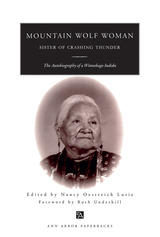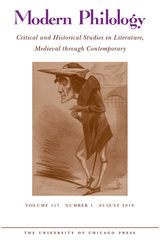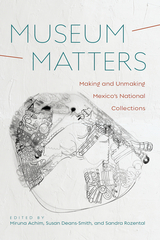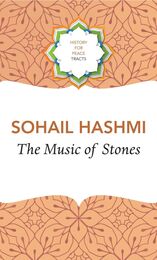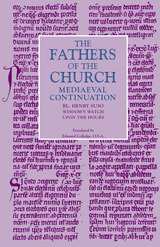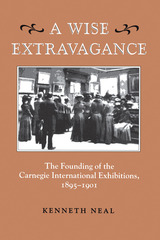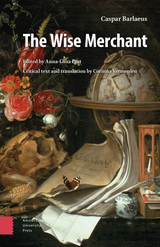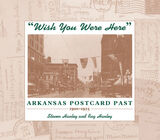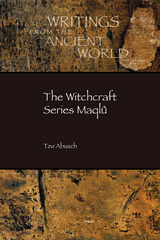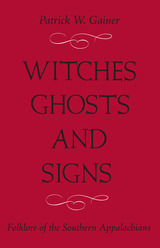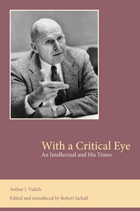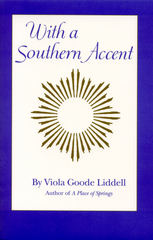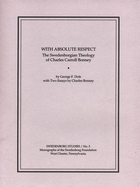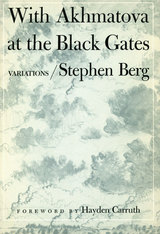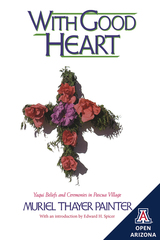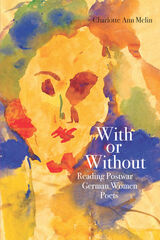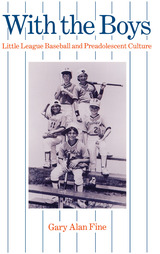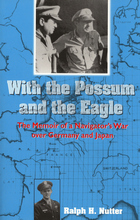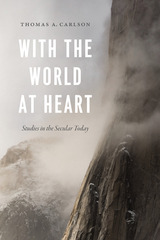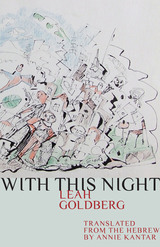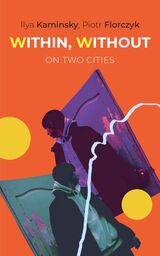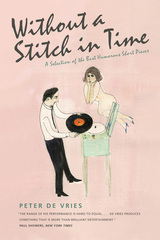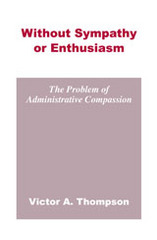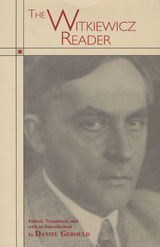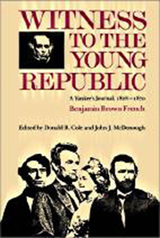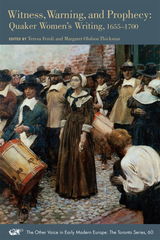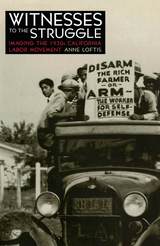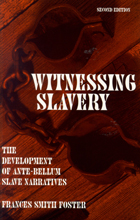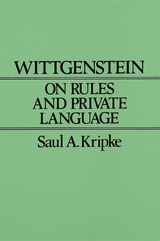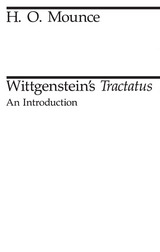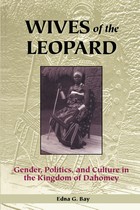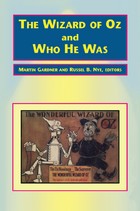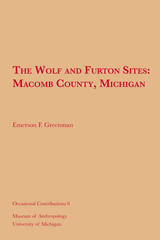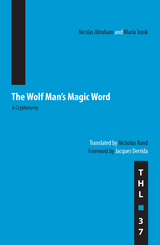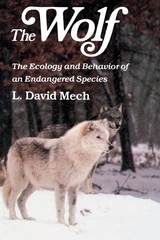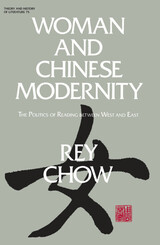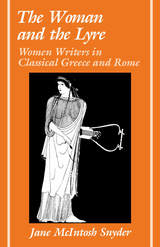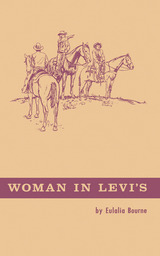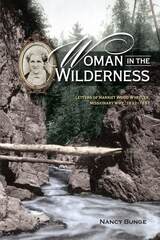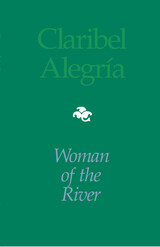Wisdom's Watch Upon the Hours
Suso Henry
Catholic University of America Press, 1994 Written by Dominican preacher and mystic Bl. Henry Suso (c. 1300-1366), Horologium Sapientiae, or Wisdom's Watch upon the Hours, was one of the most successful religious writings of its time. Now it is offered to the English-speaking world in a new translation based on Pius Knzle's critical Latin edition.
 The Wise Body: Conversations with Experienced Dancers
Jacky Lansley and Fergus Early
Intellect Books, 2011 In The Wise Body: Conversations with Experienced Dancers, UK choreographers Jacky Lansley and Fergus Early interview twelve distinguished dancers from diverse backgrounds and disciplines who continue to enjoy exceptionally long performing careers. They discuss early training, memorable performing experiences, the things that sustain them, and the pleasures and challenges of being ‘older’ dancers in a profession in which youth is often idolized. The contributors include Philippe Priasso, Lisa Nelson, La Tati, Julyen Hamilton, Yoshito Ohno, Steve Paxton, Will Gaines, Jane Dudley, Pauline de Groot, and Bisakha Sarker.
Taken as a whole, the interviews, with their long and international perspective, invite a radical reappraisal of the development of modern and postmodern dance and their varied cultural starting points give rise to serious questions about the meaning of dance as an art form.
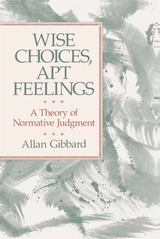 Wise Choices, Apt Feelings: A Theory of Normative Judgment
Allan Gibbard
Harvard University Press, 1992 This book examines some of the deepest questions in philosophy: What is involved in judging a belief, action, or feeling to be rational? What place does morality have in the kind of life it makes most sense to lead? How are we to understand claims to objectivity in moral judgments and in judgments of rationality? When we find ourselves in fundamental disagreement with whole communities, how can we understand our disagreement and cope with it?
To shed light on such issues, Allan Gibbard develops what he calls a “norm-expressivistic analysis” of rationality. He refines this analysis by drawing on evolutionary theory and experimental psychology, as well as on more traditional moral and political philosophy. What emerges is an interpretation of human normative life, with its quandaries and disputes over what is rational and irrational, morally right and morally wrong. Judgments of what it makes sense to do, to think, and to feel, Gibbard argues, are central to shaping the way we live our lives.
Gibbard does not hesitate to take up a wide variety of possible difficulties for his analysis. This sensitivity to the true complexity of the subject matter gives his treatment a special richness and depth. The fundamental importance of the issues he addresses and the freshness and suggestiveness of the account he puts forward, along with his illuminating treatment of aspects of sociobiology theory, will ensure this book a warm reception from philosophers, social scientists, and others with a serious interest in the nature of human thought and action.
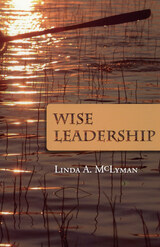 Wise Leadership
Linda A. McLyman
Michigan State University Press, 2005 Wise Leadership breaks from the formulas offered up in traditional self-help or management and leadership books. Rather than providing a set of quick-fix recipes for success, McLyman invites leaders instead to listen to the simple, poignant words she has garnered from working alongside some of her most successful and powerful clients during twenty-plus years of management consulting. These are the leaders everyone wants to have in their organizations. In a simple, practical, and insightful style, McLyman shows her readers to how grasp the values, beliefs, and truths that are commonly held by many of today’s wisest leaders. Discover what it really means to work not just as a smart and intelligent leader, but also as a very wise leader. The path to intelligence, we discover, is not necessarily the same path to wisdom. McLyman encourages us to listen to the thoughts and feelings behind the simple words. As we eavesdrop on conversations with clients, we are invited to ponder our own meaning of wise leadership. There are no quick solutions, no simple answers; instead, McLyman declares, we must learn to think for ourselves. This insightful book offers an opportunity for people from all walks of life to learn more about the concept of leadership and to gain an understanding of what it really means to be a wise leader in today’s complex and challenging world.
The Wise Merchant
Corinna Barlaeus
Amsterdam University Press, 2019 On 9 January 1632, at the inauguration of the Amsterdam Illustrious School - the predecessor of the city's university - Caspar Barlaeus delivered a speech that has continued to arouse the curiosity of researchers and the general public alike: Mercator sapiens. This famous oration on the wise merchant is now considered a key text of the Dutch Golden Age. At the same time it is surrounded by misunderstandings regarding Barlaeus himself, the nascent Illustrious School and Amsterdam's merchant culture. This volume presents the first English translation and the first critical edition of the Mercator sapiens, preceded by an introduction providing historical context and a fresh interpretation of this intriguing text.
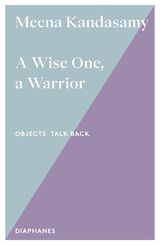 A Wise One, a Warrior
Meena Kandasamy
Diaphanes, 2025 A narrative of the early modern Indian sculpture known as the Mithuna couple.
Meena Kandasamy writes about the Mithuna couple, a seventeenth-century ivory sculpture from Tamil Nadu, India, depicting lovers. Kandasamy unfurls a multi-layered, multi-directional narrative built from images, questions, and contradictions evoked by the sculpture. “How can we look at this work and not talk about who produced it?” Kandasamy asks and then examines how caste and class are carved into the object as indelibly as its physical details. Such knowledge complicates easy associations of love that may be evoked by the couple.
Refusing any impulse to idealize or exoticize, Kandasamy connects the carving to personal and political stories that expose painful realities of who gets to love whom, and how. She sets the intimate alongside the institutional to interrogate terms such as decolonize, restitution, and preservation. Through an astonishing stylistic mix, including Twitter, academic discourse, poetry, and memoir, she talks back, forward, and sideways with the object.
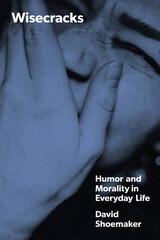 Wisecracks: Humor and Morality in Everyday Life
David Shoemaker
University of Chicago Press, 2024 A philosopher’s case for the importance of good—if ethically questionable—humor.
A good sense of humor is key to the good life, but a joke taken too far can get anyone into trouble. Where to draw the line is not as simple as it may seem. After all, even the most innocent quips between friends rely on deception, sarcasm, and stereotypes and often run the risk of disrespect, meanness, and harm. How do we face this dilemma without taking ourselves too seriously?
In Wisecracks, philosopher David Shoemaker examines this interplay between humor and morality and ultimately argues that even morally suspect humor is an essential part of ethical life. Shoemaker shows how improvised “wisecracks” between family and friends—unlike scripted stand-up, sketches, or serials—help us develop a critical human skill: the ability to carry on and find the funny in tragedy. In developing a new ethics of humor in defense of questionable gibes, Wisecracks offers a powerful case for humor as a healing presence in human life.
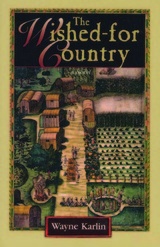 The Wished For Country
Wayne Karlin
Northwestern University Press, 2002 The Wished For Country is set during the founding of the Maryland colony in the mid-seventeenth century. It traces the entwined lives of James Hallam, a carpenter and indentured servant; Ezekiel, an African slave brought to Maryland from Barbados; and Tawzin, a Piscataway Indian, kidnapped to England when a child, and now back in America. While Hallam goes on to become a soldier and a player in the politics of the Maryland colony, Ezekiel and Tawzin become the center of an outcast group of Blacks, poor whites, and Native Americans, who find themselves striving to reinvent themselves and their world.
The stories of these three men, the women who love them, and the community they form, bring to vivid life the experiences of those who came to America pulled by a dream of what could be shaped from an emptiness that embodied promise, of those who were unwillingly brought to be the instruments of that dream, and of those who saw the shape of their world forever changed by the coming of the Europeans.
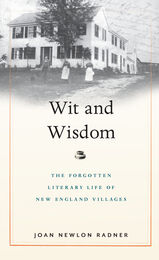 Wit and Wisdom: The Forgotten Literary Life of New England Villages
Joan Newlon Radner
University of Massachusetts Press, 2023 The lyceum movement gained momentum in the decades preceding the Civil War, presenting members with the opportunity to participate in literary life and engage with the issues of the day. While urban lyceums played host to a who’s who of nineteenth-century intellectual life, literary societies also cropped up in thousands of villages across the nation, acting as influential sites of learning, creativity, and community engagement. In rural New England, ordinary men and women, farmers and intelligentsia, selectmen and schoolchildren came together to write and perform poetry and witty parodies and debate a wide range of topics, from women’s rights and temperance to slavery, migration, and more. Wit and Wisdom takes readers inside this long-forgotten tradition, providing new access to the vibrant voices, surprising talents, and understated humor on display on many a cold winter’s night. Having uncovered dozens of handwritten newspapers produced by village lyceums across Maine, New Hampshire, Vermont, and Massachusetts, Joan Newlon Radner proves that these close-knit groups offered a vital expression of the beliefs, ambitions, and resilience of rural New Englanders.
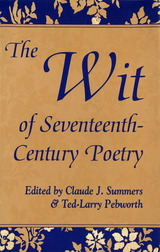 The Wit of Seventeenth-Century Poetry
Edited by Claude J. Summers & Ted-Larry Pebworth
University of Missouri Press, 1994
As the twelve original essays collected in this volume demonstrate, to study the wit of seventeenth-century poetry is necessarily to address concerns at the very heart of the period's shifting literary culture. It is a topic that raises persistent questions of thematics and authorial intent, even as it interrogates a wide spectrum of cultural practices. These essays by some of the most renowned scholars in seventeenth-century studies illuminate important authors and engage issues of politics and religion, of secular and sacred love, of literary theory and poetic technique, of gender relations and historical consciousness, of literary history and social change, as well as larger concerns of literary production and smaller ones of local effects. Collectively, they illustrate the vitality of the topic, both in its own right and as a means of understanding the complexity and range of seventeenth-century English poetry.
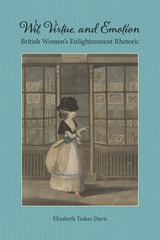 Wit, Virtue, and Emotion: British Women's Enlightenment Rhetoric
Elizabeth Tasker Davis
Southern Illinois University Press, 2022 Women’s persuasion and performance in the Age of Enlightenment Over a century before first-wave feminism, British women’s Enlightenment rhetoric prefigured nineteenth-century feminist arguments for gender equality, women’s civil rights, professional opportunities, and standardized education. Author Elizabeth Tasker Davis rereads accepted histories of seventeenth- and eighteenth-century British rhetoric, claiming a greater variety and power of women’s rhetoric. This recovery of British women’s performative and written roles as speakers, spectators, authors, and readers in diverse venues counters the traditional masculine model of European Enlightenment rhetoric. Davis broadens women’s Enlightenment rhetorics to include highly public venues such as theaters, clubs, salons, and debating societies, as well as the mediated sites of the periodical essay, the treatise on rhetorical theory, and women’s written proposals, plans, defenses and arguments for education. Through these sites, women’s rhetorical postures diverged from patriarchal prescriptions rather to deliver protofeminist persuasive performances of wit, virtue, and emotion. Davis examines context, the effects of memory and gendering, and the cultural sites and media of women’s rhetoric to reveal a fuller ecology of British Enlightenment rhetoric. Each chapter covers a cultural site of women’s rhetorical practice—the court, the stage, the salon, and the printed page. Applying feminist rhetorical theory, Davis documents how women grasped their rhetorical ability in this historical moment and staged a large-scale transformation of British women from subalterns to a vocal counterpublic in British society.
 The Witch Studies Reader
Soma Chaudhuri and Jane Ward, editors
Duke University Press, 2025 Stories about witches are by their nature stories about the most basic and profound of human experiences—healing, sex, violence, tragedies, aging, death, and encountering the mystery and magic of the unknown. It is no surprise, then, that witches loom large in our cultural imaginations. In academia, studies of witches rarely emerge from scholars who are themselves witches and/or embedded in communities of witchcraft practitioners. The Witch Studies Reader brings together a diverse group of scholars, practitioners, and scholar-practitioners who examine witchcraft from a critical decolonial feminist perspective that decenters Europe and departs from exoticizing and pathologizing writing on witchcraft in the global South. The authors show how witches are keepers of suppressed knowledges, builders of new futures, exemplars of praxis, and theorists in their own right. Throughout, they account for the vastly different national, political-economic, and cultural contexts in which “the witch” is currently being claimed and repudiated. Offering a pathbreaking transnational feminist examination of witches and witchcraft that upends white supremacist, colonial, patriarchal knowledge regimes, this volume brings into being the interdisciplinary field of feminist witch studies.
Contributors. Maria Amir, Ruth Asiimwe, Bernadette Barton, Ethel Brooks, Shelina Brown, Ruth Charnock, Soma Chaudhuri, Carolyn Chernoff, Saira Chhibber, Simon Clay, Krystal Cleary, Adrianna L. Ernstberger, Tina Escaja, Laurie Essig, Marcelitte Failla, D Ferrett, Marion Goldman, Jaime Hartless, Margaretha Haughwout, Patricia Humura, Apoorvaa Joshi, Govind Kelkar, Oliver Kellhammer, Ayça Kurtoğlu, Helen Macdonald, Isabel Machado, Brandy Renee McCann, Dev Nathan, Mary Jo Neitz, Amy Nichols-Belo, Allison (or AP) Pierce, Emma Quilty, Anna Rogel, Karen Schaller, Jacquelyn Marie Shannon, Shashank Shekhar Sinha, Gabriella V. Smith, Nathan Snaza, Shannon Hughes Spence, Eric Steinhart, Morena Tartari, Nicole Trigg, Katie Von Wald, Tushabe wa Tushabe, Jane Ward
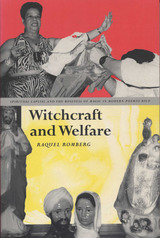 Witchcraft and Welfare: Spiritual Capital and the Business of Magic in Modern Puerto Rico
By Raquel Romberg
University of Texas Press, 2003 Persecuted as evil during colonial times, considered charlatans during the nation-building era, Puerto Rican brujos (witch-healers) today have become spiritual entrepreneurs who advise their clients not only in consultation with the spirits but also in compliance with state laws and new economic opportunities. Combining trance, dance, magic, and healing practices with expertise in the workings of the modern welfare state, they help lawyers win custody suits, sick employees resolve labor disability claims, single mothers apply for government housing, or corporation managers maximize their commercial skills. Drawing on extensive fieldwork among practicing brujos, this book presents a masterful history and ethnography of Puerto Rican brujería (witch-healing). Raquel Romberg explores how brujería emerged from a blending of popular Catholicism, Afro-Latin religions, French Spiritism, and folk Protestantism and also looks at how it has adapted to changes in state policies and responded to global flows of ideas and commodities. She demonstrates that, far from being an exotic or marginal practice in the modern world, brujería has become an invisible yet active partner of consumerism and welfare capitalism.
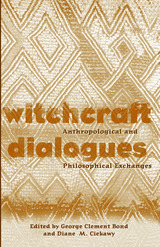 Witchcraft Dialogues: Anthropological and Philosophical Exchanges
George Clement Bond
Ohio University Press, 2001 Witchcraft Dialogues analyzes the complex manner in which human beings construct, experience, and think about the “occult.” It brings together anthropologists, philosophers, and sociologists, from diverse social and cultural backgrounds, to engage the metaphysical properties of “witchcraft” and “sorcery” and to explore their manifestations in people’s lived experiences. While many Africanist scholars shun the analysis of “witchcraft” as an appropriate domain of investigation, the experiences, thoughts, activities, and powers that “witchcraft” encompasses have become increasingly the source of interest and debate. Concepts of witchcraft and the phenomena to which they are applied express something fundamental to the human condition and have their equation in the logic of other human practices such as racism and its various crafts. Thus, the focus on “witchcraft” is not just a concern with the occult, but a manifestation of the convergence of interest in mediating and transcending disciplinary domains. The contributors to this volume embrace the challenge of exploring “witchcraft” as a mode of experiencing and explaining human circumstances as well as confronting the limitations of their own intellectual traditions and paradigms. The range of their explorations takes us in new directions, making use not only of their academic training but also of their personal experiences, to reframe the conceptual terrain of the “occult” and the epistemological orientations of their various academic fields of inquiry.
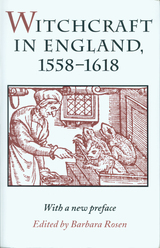 Witchcraft in England, 1558-1618
Barbara Rosen
University of Massachusetts Press, 1991 Anyone interested in manifestations of witchcraft in Elizabethan and Jacobean England will find this book an invaluable source. Barbara Rosen has gathered and edited a rare collection of documents--pamphlets, reports, trial accounts, and other material--that describes the experience, interpretation, and punishment of witchcraft in the late sixteenth and early seventeenth centuries.
In her introduction, Rosen explores the full range of practices and beliefs associated with witchcraft and situates these phenomena in historical context. She explains how ignorance of science and medicine combined with social circumstance and religious ideology to shape popular perceptions and superstitions. Distinguishing between English and Continental forms of witchcraft, she also examines the legal definitions, disciplines, and punishments applied to wizards, witches, wise women, and conjures in the Elizabethan age.
The pamphlets and other original texts have been modernized in certain respects to make them more accessible to general readers. But the book retains its value for scholars: omissions are detailed in the notes and additions marked; obsolete words and grammar are explained in the glossary.
Originally published in England in 1970 under the title Witchcraft, this book appears now for the first time in paperback and includes a new preface by the editor.
Witchcraft in Old and New England
George Lyman Kittredge
Harvard University Press Witchcraft, our inheritance from savagery, is the burden of the human race. Beliefs among modern savages and among the ignorant in civilized communities, show the continuity of the witch superstition and of witch practices. Indeed it is probable that fully nine-tenths of the world still believes more or less consciously in some form of witchcraft. Most readers will therefore make unexpected discoveries in Professor Kittredge’s new book, which is a remarkable compendium of little-known facts and strange information. Here he has gathered all sorts of stray notes about witch history in England from Anglo-Saxon times, Elizabethan days, and the height of the delusion in the seventeenth century. Among the special topics he considers are witches and storms, love magic, lulling by roasting an image of wax or clay, the witches’ Sabbath, the use of spells, the witches’ curse, and the compact with Satan.
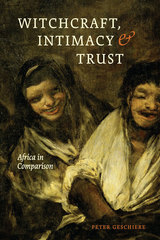 Witchcraft, Intimacy, and Trust: Africa in Comparison
Peter Geschiere
University of Chicago Press, 2013 In Dante’s Inferno, the lowest circle of Hell is reserved for traitors, those who betrayed their closest companions. In a wide range of literatures and mythologies such intimate aggression is a source of ultimate terror, and in Witchcraft, Intimacy, and Trust, Peter Geschiere masterfully sketches it as a central ember at the core of human relationships, one brutally revealed in the practice of witchcraft. Examining witchcraft in its variety of forms throughout the globe, he shows how this often misunderstood practice is deeply structured by intimacy and the powers it affords. In doing so, he offers not only a comprehensive look at contemporary witchcraft but also a fresh—if troubling—new way to think about intimacy itself.
Geschiere begins in the forests of southeast Cameroon with the Maka, who fear “witchcraft of the house” above all else. Drawing a variety of local conceptions of intimacy into a global arc, he tracks notions of the home and family—and witchcraft’s transgression of them—throughout Africa, Europe, Brazil, and Oceania, showing that witchcraft provides powerful ways of addressing issues that are crucial to social relationships. Indeed, by uncovering the link between intimacy and witchcraft in so many parts of the world, he paints a provocative picture of human sociality that scrutinizes some of the most prevalent views held by contemporary social science.
One of the few books to situate witchcraft in a global context, Witchcraft, Intimacy, and Trust is at once a theoretical tour de force and an empirically rich and lucid take on a difficult-to-understand spiritual practice and the private spaces throughout the world it so greatly affects.
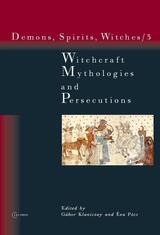 Witchcraft Mythologies and Persecutions
Gábor Klaniczay
Central European University Press, 2008 This third, concluding volume of the series publishes 14 studies and the transcription of a round-table discussion on Carlo Ginzburg's Ecstasies. The themes of the previous two volumes, Communicating with the Spirits, and Christian Demonology and Popular Mythology, are further expanded here both as regards their interdisciplinary approach and the wide range of regional comparisons. While the emphasis of the second volume was on current popular belief and folklore as seen in the context of the historical sources on demonology, this volume approaches its subject from the point of view of historical anthropology. The greatest recent advances of witchcraft research occurred recently in two fields: (1) deciphering the variety of myths and the complexity of historical processes which lead to the formation of the witches' Sabbath, (2) the micro-historical analysis of the social, religious, legal and cultural milieu where witchcraft accusations and persecutions developed. These two themes are completed by some further insights into the folklore of the concerned regions which still carries the traces of the traumatic historical memories of witchcraft persecutions.
The Witchcraft Series Maqlu
Tzvi Abusch
SBL Press, 2015 A new reconstruction and translation of the Maqlû text
The Akkadian series Maqlû, “Burning,” is one of the most significant and interesting magical texts from the Ancient Near East. The incantations and accompanying rituals are directed against witches and witchcraft and ctually represent a single complex ceremony. The ceremony was performed during a single night and into the following morning at the end of the month Abu (July/August), a time when spirits were thought to move back and forth between the netherworld and the world of the living.
Features:
- English translation of approximately 100 incantations and rituals
- Annotated transcription
- Introduction places the series in historical context and shows how it is a product of a complex literary and ceremonial development.
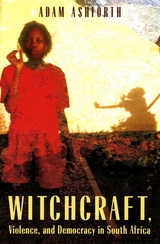 Witchcraft, Violence, and Democracy in South Africa
Adam Ashforth
University of Chicago Press, 2004 How does democracy fare when the people governed insist they live in a world with witches? If the government of a people afflicted by witchcraft refuses to punish witches, how does it avoid becoming alienated from the perceived needs of its people or, worse, seen as being in league with witches? In Soweto, South Africa, the constant threat of violent crime, the increase in black socio-economic inequality, the AIDS pandemic, and a widespread fear of witchcraft have converged to create a pervasive sense of insecurity among citizens and a unique public policy problem for government.
In Witchcraft, Violence, and Democracy in South Africa, Adam Ashforth examines how people in Soweto and other parts of post-apartheid South Africa manage their fear of 'evil forces' such as witchcraft. Ashforth examines the dynamics of insecurity in the everyday life of Soweto at the turn of the twenty-first century. He develops a new framework for understanding occult violence as a form of spiritual insecurity and documents new patterns of interpretation attributing agency to evil forces. Finally, he analyzes the response of post-apartheid governments to issues of spiritual insecurity and suggests how these matters pose severe long-term challenges to the legitimacy of the democratic state.
WITCHES, GHOSTS, AND SIGNS: FOLKLORE OF THE SOUTHERN APPALACHIANS
Patrick W. Gainer
West Virginia University Press, 2008 Witches, Ghosts, and Signs: Folklore of the Southern Appalachians by the renowned West Virginia folklorist and former West Virginia University English professor Patrick W. Gainer not only highlights stories that both amuse and raise goosebumps, but also begins with a description of the people and culture of the state. Based on material Gainer collected from over fifty years of field research in West Virginia and the region, Witches, Ghosts, and Signs presents the rich heritage of the southern Appalachians in a way that has never been equaled. Strange and supernatural tales of ghosts, witches, hauntings, disappearances, and unexplained murders that have been passed down from generation to generation from as far back as the earliest settlers in the region are included in this collection that will send chills down the spine.
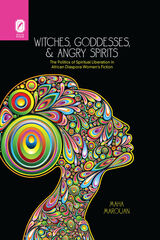 Witches, Goddesses, and Angry Spirits: The Politics of Spiritual Liberation in African Diaspora Women's Fiction
Maha Marouan
Ohio State University Press, 2013 Witches, Goddesses and Angry Spirits: The Politics of Spiritual Liberation in African Diaspora Women’s Fiction explores African diaspora religious practices as vehicles for Africana women’s spiritual transformation, using representative fictions by three contemporary writers of the African Americas who compose fresh models of female spirituality: Breath, Eyes, Memory (1994) by Haitian American novelist Edwidge Danticat; Paradise (1998) by African American Nobel laureate Toni Morrison; and I, Tituba, Black Witch of Salem (1992) by Guadeloupean author Maryse Condé. Author Maha Marouan argues that while these authors’ works burst with powerful female figures—witches, goddesses, healers, priestesses, angry spirits—they also remain honest in reminding readers of the silences surrounding African diaspora women’s realities and experiences of violence, often as a result of gendered religious discourses. To make sense of Africana women’s experiences of the diaspora, this book operates from a transnational perspective that moves across national and linguistic boundaries as it connects the Anglophone, the Francophone, and the Creole worlds of the African Americas. In doing so, Marouan identifies crucial shared thematic concerns regarding the authors’ engagement with religious frameworks—some Judeo-Christian, some not—heretofore unexamined in such a careful, comparative fashion.
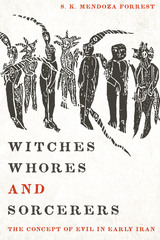 Witches, Whores, and Sorcerers: The Concept of Evil in Early Iran
By S. K. Mendoza Forrest
University of Texas Press, 2011 Early Iranians believed evil had to have a source outside of God, which led to the concept of an entity as powerful and utterly evil as God is potent and good. These two forces, good and evil, which have always vied for superiority, needed helpers in this struggle. According to the Zoroastrians, every entity had to take sides, from the cosmic level to the microcosmic self. One of the results of this battle was that certain humans were thought to side with evil. Who were these allies of that great Evil Spirit? Women were inordinately singled out. Male healers were forbidden to deal with female health disorders because of the fear of the polluting power of feminine blood. Female healers, midwives, and shamans were among those who were accused of collaborating with the Evil Spirit, because they healed women. Men who worked to prepare the dead were also suspected of secret evil. Evil even showed up as animals such as frogs, snakes, and bugs of all sorts, which scuttled to the command of their wicked masters. This first comprehensive study of the concept of evil in early Iran uncovers details of the Iranian struggle against witchcraft, sorcery, and other "evils," beginning with their earliest texts.
 Witchfinders: A Seventeenth-Century English Tragedy
Malcolm Gaskill
Harvard University Press, 2007 By spring 1645, two years of civil war had exacted a dreadful toll upon England. People lived in terror as disease and poverty spread, and the nation grew ever more politically divided. In a remote corner of Essex, two obscure gentlemen, Matthew Hopkins and John Stearne, exploited the anxiety and lawlessness of the time and initiated a brutal campaign to drive out the presumed evil in their midst. Touring Suffolk and East Anglia on horseback, they detected demons and idolators everywhere. Through torture, they extracted from terrified prisoners confessions of consorting with Satan and demonic spirits.
Acclaimed historian Malcolm Gaskill retells the chilling story of the most savage witch-hunt in English history. By the autumn of 1647 at least 250 people--mostly women--had been captured, interrogated, and hauled before the courts. More than a hundred were hanged, causing Hopkins to be dubbed "Witchfinder General" by critics and admirers alike. Though their campaign was never legally sanctioned, they garnered the popular support of local gentry, clergy, and villagers. While Witchfinders tells of a unique and tragic historical moment fueled by religious fervor, today it serves as a reminder of the power of fear and fanaticism to fuel ordinary people's willingness to demonize others.
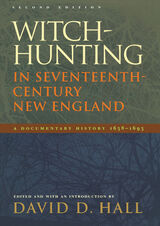 Witch-Hunting in Seventeenth-Century New England: A Documentary History 1638-1693, Second Edition
David D. Hall
Duke University Press, 2007 This superb documentary collection illuminates the history of witchcraft and witch-hunting in seventeenth-century New England. The cases examined begin in 1638, extend to the Salem outbreak in 1692, and document for the first time the extensive Stamford-Fairfield, Connecticut, witch-hunt of 1692–1693. Here one encounters witch-hunts through the eyes of those who participated in them: the accusers, the victims, the judges. The original texts tell in vivid detail a multi-dimensional story that conveys not only the process of witch-hunting but also the complexity of culture and society in early America. The documents capture deep-rooted attitudes and expectations and reveal the tensions, anger, envy, and misfortune that underlay communal life and family relationships within New England’s small towns and villages. Primary sources include court depositions as well as excerpts from the diaries and letters of contemporaries. They cover trials for witchcraft, reports of diabolical possessions, suits of defamation, and reports of preternatural events. Each section is preceded by headnotes that describe the case and its background and refer the reader to important secondary interpretations. In his incisive introduction, David D. Hall addresses a wide range of important issues: witchcraft lore, antagonistic social relationships, the vulnerability of women, religious ideologies, popular and learned understandings of witchcraft and the devil, and the role of the legal system. This volume is an extraordinarily significant resource for the study of gender, village politics, religion, and popular culture in seventeenth-century New England.
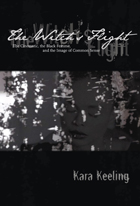 The Witch's Flight: The Cinematic, the Black Femme, and the Image of Common Sense
Kara Keeling
Duke University Press, 2007 Kara Keeling contends that cinema and cinematic processes had a profound significance for twentieth-century anticapitalist Black Liberation movements based in the United States. Drawing on Gilles Deleuze’s notion of “the cinematic”—not just as a phenomenon confined to moving-image media such as film and television but as a set of processes involved in the production and reproduction of social reality itself —Keeling describes how the cinematic structures racism, homophobia, and misogyny, and, in the process, denies viewers access to certain images and ways of knowing. She theorizes the black femme as a figure who, even when not explicitly represented within hegemonic cinematic formulations of raced and gendered subjectivities, nonetheless haunts those representations, threatening to disrupt them by making alternative social arrangements visible. Keeling draws on the thought of Frantz Fanon, Angela Davis, Karl Marx, Antonio Gramsci, and others in addition to Deleuze. She pursues the elusive figure of the black femme through Haile Gerima’s film Sankofa, images of women in the Black Panther Party, Pam Grier’s roles in the blaxploitation films of the early 1970s, F. Gary Gray’s film Set It Off, and Kasi Lemmons’s Eve’s Bayou.
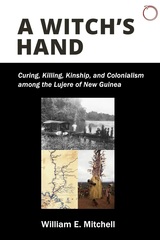 A Witch's Hand: Curing, Killing, Kinship, and Colonialism among the Lujere of New Guinea
William E. Mitchell
HAU, 2024 William E. Mitchell revisits his early fieldwork with a three-part study of the history of colonial rule in Papua New Guinea.
From 1971 to 1972, William E. Mitchell undertook fieldwork on suffering and healing among the Lujere of Papua New Guinea’s Upper Sepik River Basin. At a time when it was not yet common to make colonial agencies a subject of anthropological study, Mitchell carefully located his research on Lujere practices in the framework of a history of colonization that surrounded the Lujere with a shifting array of Western institutions, dramatically changing their society forever. Mitchell’s work has been well known among anthropologists of Oceania, but the material in this book has remained unpublished until now.
In this major new work, Mitchell revisits his early fieldwork with a three-part study of the history of colonial rule in the region, the social organization of Lujere life at the time, and the forms of affliction, witchcraft, and curing that preoccupied them. Furthermore, Mitchell offers the first sweeping cross-cultural survey of sanguma (magical murder) in Oceania. The book presents a vivid portrait of a society that has since changed dramatically as well as an approach to anthropology that was typical of the era. This is a significant contribution to the ethnography of Papua New Guinea and is sure to be an invaluable source for researchers of Melanesia, medical anthropologists, and scholars of kinship, myth, and ritual.
With a Critical Eye: An Intellectual and His Times
Arthur J. Vidich
University of Tennessee Press, 2009 Internationally renowned sociologist, Arthur J. Vidich (1922-2006), was an active researcher and teacher whose career spanned the second half of the twentieth century. With a Critical Eye: An Intellectual and His Times recounts Vidich’s career in the wider cultural context of his life and work. Providing a window into post-World War II intellectual life, the richness of the autobiography lies not only in Vidich’s perspectives on the academic world, but also in his personal and sociological observations about the world around him.
Best known for his book, Small Town in Mass Society (co-authored with Joseph Bensman, 1958), Vidich taught for more than forty years at the New School for Social Research in New York. He published eighteen books, co-edited a book series with Robert Jackall, and was the founding editor of the International Journal of Politics, Culture, and Society.
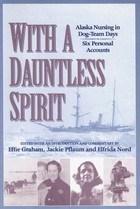 With a Dauntless Spirit: Alaska Nursing in Dog-Team Days.
Effie Graham
University of Alaska Press, 2003 "The itinerant nurses traveled by dog team and later by bush plane, experienced dangers and hardships their stateside colleagues could scarcely comprehend.... For the most part they matched the rigors of the environment with a dauntless spirit." So read a 1954 report on the women nurses who lived and worked in rural Alaska in the first half of the twentieth century. They traveled by dog team, river boat, or sea-going vessel to isolated communities with extreme weather conditions and poor sanitation. In the days before antibiotics, they encountered epidemics of diphtheria and typhoid, as well as the enduring presence of tuberculosis in all its forms.
With a Dauntless Spirit compiles a unique collection of journals, letters, and memoirs that give immediacy and vitality to the lives of these women. They ventured with a sense of duty and compassion to deliver much-needed medical services before the technical, medical, and social changes brought to Alaska by World War II and later by statehood. Despite physical hardships and emotional isolation, the spirit of these women is reflected in the adventurous, dramatic, and even joyous tone of their narratives. The arctic tests the character of many newcomers, and the nurses recount the very personal challenges that demanded choices and actions that ran contrary to their earlier socialization. Their personal sagas also have significant historical dimensions. They depict the major cultural encounters of their era that were to have such a profound impact on Alaska's future-with Native peoples, prospectors, aviation pioneers, and arctic explorers.
This collection was selected from personal and archival sources by Alaska nurse educators and historians, who provide background and commentary, a brief biography of each person, and historical photos and maps of the nurses' lives and work. With a Dauntless Spirit is a readable and engrossing account that makes an important and overdue contribution to Alaska history and women's history.
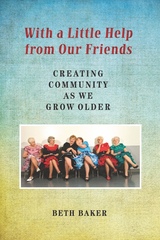 With a Little Help from Our Friends: Creating Community as We Grow Older
Beth Baker
Vanderbilt University Press, 2014 In this book, an award-winning journalist tells the story of people devising innovative ways to live as they approach retirement, options that ensure they are surrounded by a circle of friends, family, and neighbors. Based on visits and interviews at many communities around the country, Beth Baker weaves a rich tapestry of grassroots alternatives, some of them surprisingly affordable:
• a mobile home cooperative in small-town Oregon
• a senior artists colony in Los Angeles
• neighbors helping neighbors in "Villages" or "naturally occurring retirement communities"
• intentional cohousing communities
• best friends moving in together
• multigenerational families that balance togetherness and privacy
• niche communities including such diverse groups as retired postal workers, gays and lesbians, and Zen Buddhists
Drawing on new research showing the importance of social support to healthy aging and the risks associated with loneliness and isolation, the author encourages the reader to plan for a future with strong connections. Baker explores whether individuals in declining health can really stay rooted in their communities through the end of life and concludes by examining the challenge of expanding the home-care workforce and the potential of new technologies like webcams and assistive robots.
This book is the recipient of the annual Norman L. and Roselea J. Goldberg Prize for the best project in the area of medicine.
With a Southern Accent
Viola Goode Liddell
University of Alabama Press, 1982 Two generations of Alabamians will welcome the reappearance of this classic: those who loved it when it was published to national acclaim in 1948 and who have missed it during the many years it has been out of print, and those who have enjoyed Viola Goode Liddell’s follow-up success, A Place of Springs, and eagerly seek more from her pen. A Book-of-the-Month Club selection when first published, With a Southern Accent belongs on the shelves of all those who have wearied of the labels and want to meet the people of yesterday’s South.
WITH ABSOLUTE RESPECT: THE SWEDENBORGIAN THEOLOGY OF CHARLES CARROLL BONNEY
George F. Dole
Swedenborg Foundation Publishers, 1993
"I was led to feel that all my life had been a preparation for this work; and that in a thousand ways provision had been made for its extraordinary needs." So wrote Charles Carroll Bonney, a Chicago lawyer, of his work in organizing the first Parliament of World's Religions in 1893. In this short work, George F. Dole examines Bonney's theology and personal beliefs, which were inspired by Emanuel Swedenborg (1688-1772).
Also included in this volume are two essays by Bonney himself, "The Genesis of the World's Religious Congresses of 1893" and "A World's Congress at the World's Fair."
WITH AKHMATOVA AT THE BLACK GATES
Stephen Berg
University of Illinois Press, 2000 There are few precedents for what Stephen Berg has attempted and accomplished in these poems. Not really translations, nor even versions or imitations, Berg's poems are meditations on and through the person and poetry of Anna Akhmatova (1899–1966), one of Russia's greatest poets. Akhmatova, whose life began in the Victorian twilight and spanned the days of Revolution and the era of Stalinist persecution, interwove pagan fervor with Christian austerity in poems of passionate longing for the past and lost love. Irresistibly drawn into Akhmatova's orbit, Berg "believed that I was being released from myself by writing these poems when, in fact, I was merely discovering, hearing from a part of myself I did not remember, or know."
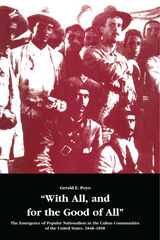 With All, and for the Good of All: The Emergence of Popular Nationalism in the Cuban Communities of the United States, 1848–1898
Gerald E. Poyo
Duke University Press, 1989 Cuban-Americans are beginning to understand their long-standing roots and traditions in the United States that reach back over a century prior to 1959. This is the first book-length confirmation of those beginnings, and its places the Cuban hero and revolutionary thinker José Martí within the political and socioeconomic realities of the Cuban communities in the United States of that era. By clarifying Martí’s relationship with those communities, Gerald E. Poyo provides a detailed portrait of the exile centers and their role in the growth and consolidation of nineteenth-century Cuban nationalism.
Poyo differentiates between the development of nationalist sentiment among liberal elites and popular groups and reveals how these distinct strains influenced the thought and conduct of Martí and the successful Cuban revolution of the 1890s.
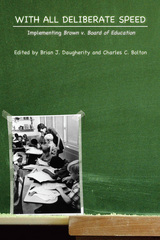 With All Deliberate Speed: Implementing Brown v. Board of Education
Brian J. Daugherity
University of Arkansas Press, 2008 This is the first effort to provide a broad assessment of how well the Brown v. Board of Education decision that declared an end to segregated schools in the United States was implemented. Written by a distinguished group of historians, the twelve essays in this collection examine how African Americans and their supporters in twelve states—Arkansas, North Carolina, Virginia, South Carolina, Georgia, Mississippi, Florida, Delaware, Missouri, Indiana, Nevada, and Wisconsin—dealt with the Court’s mandate to desegregate “with all deliberate speed.” The process followed many diverse paths.
Some of the common themes in these efforts were the importance of black activism, especially the crucial role played by the NAACP; entrenched white opposition to school integration, which wasn’t just a southern state issue, as is shown in Delaware, Wisconsin, and Indiana; and the role of the federal government, a sometimes inconstant and sometimes reluctant source of support for implementing Brown.
 With All Deliberate Speed: The Life of Philip Elman
Norman I. Silber
University of Michigan Press, 2004 "With All Deliberate Speed is just wonderful. It gives the reader fascinating insights into the Roosevelt era, the Supreme Court, the Justice Department. It is funny, and endearingly human. Three cheers!"
-Anthony Lewis, New York Times columnist, and Pulitzer Prize-winning
author of Gideon's Trumpet
"The fascinating, eloquent, and skillfully edited oral memoir of a distinguished public servant, who was at the epicenter of major legal controversies that his memoir illuminates. A major contribution to modern American legal history."
-Richard A. Posner
"With All Deliberate Speed provides an insider's rich account, spanning over thirty years, of the inner workings of the Supreme Court, the Solicitor General's Office and the Federal Trade Commission that anyone seriously interested in a frank behind-the-scenes view of the federal government should find exceptionally provocative and intriguing"
-Drew Days III, Alfred M. Rankin Professor of Law, Yale University, and former Solicitor General of the United States, 1993-96
From a modest childhood in Patterson, N. J., Philip Elman rose to become clerk for the great Supreme Court Justice Felix Frankfurter, and then to a position in the U.S. Solicitor General's Office. As a member of that office, Philip Elman had an exceptional vantage point on one of the most momentous cases in U.S. Supreme Court history: Brown v. Board of Education.
In this oral history memoir of Elman's life, With All Deliberate Speed, author Norman I. Silber reveals the maneuvering that led to the Court's overturning the doctrine of "separate but equal." Working behind the scenes, it was Justice Department attorney Elman who came up with the concept of gradual integration-an idea that worked its way into the final decision as the famous phrase "with all deliberate speed." Though this expression angered those pressing for immediate desegregation, Elman claims that it unified a divided Court, thus enabling them to stand together against the evil of segregation.
With All Deliberate Speed records a decisive moment in Supreme Court history, but it is also Philip Elman's unforgettable oral memoir-the story of his entire career in government service, including his work with Attorney General Robert F. Kennedy as commissioner of the FTC, and his role in founding the modern consumer protection movement, which includes the antismoking campaign that put the Surgeon General's warning on cigarette packs.
At once rich historical testimony and a gripping read, With All Deliberate Speed offers a rarely glimpsed insider's understanding of the politics of the American legal system.
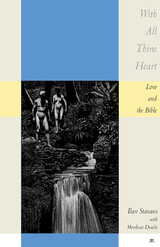 With All Thine Heart: Love and the Bible
Stavans, Ilan
Rutgers University Press, 2010 Is the Bible actually a love story between a deity and a people? And what does this love story have to do with the modern world? In With All Thine Heart distinguished cultural critic Ilan Stavans speaks to freelance writer Mordecai Drache about love in the Bible.
Presented in an engaging, conversational format and touched with striking artwork, the textured dialogue between Stavans and Drache is meant to show how the Bible is a multidimensional text and one that, when considered over the course of history, still has the power to shape our world. The theme of love provides the connective tissue that binds this work.
Addressing a wide range of topics, from biblical archaeology and fundamentalism to Hollywood movies, lexicography, and the act of praying, With All Thine Heart suggests that the Hebrew Bible is a novel worth decoding patiently, such as one does with classics like Don Quixote de la Mancha, In Search of Lost Time, and Anna Karenina. Similar to the protagonists in these tales, biblical characters, although not shaped with the artistic nuance of modern literature, allow for astonishing insight. This exploration of love through the pages of the Bible—organized chronologically from Genesis to Exodus and followed by insightful meditations on the Song of Songs and the Book of Job—is a delightful intellectual and spiritual treat . . . Shema Ysrael!
 With All Your Mind: A Christian Philosophy of Education
Michael L. Peterson
University of Notre Dame Press, 2001 With All Your Mind makes a compelling case for the value of thinking deeply about education in America from a historically orthodox and broadly ecumenical Christian point of view. Few people dispute that education in America is in a state of crisis. But not many have posed workable solutions to this serious problem. Michael Peterson contends that thinking philosophically about education is our only hope for meaningful progress. In this refreshing book, he invites all who are concerned about education in America to "participate" in his study, which analyzes representative theories and practical strategies that reveal the power of Christian ideas in this vital area. Peterson addresses the most fundamental questions facing educators, and society in general, such as: What is the purpose of education? What goals do new techniques and methods serve? What kind of person is our educational system supposed to produce? He also explores questions of unique importance to Christians, such as: What is the relation between Christianity and the pursuit of intellectual excellence? How can Christians bring their faith to bear on all areas of knowledge? Can educated Christians significantly influence culture? With All Your Mind examines the key assumptions and implications of influential classical and contemporary philosophies with respect to education, including idealism, naturalism, Thomism, experimentalism, existentialism, linguistic analysis, and postmodernism. Based on this analysis, Peterson develops an unapologetically Christian philosophy of education in regard to curriculum design, instilling ethics and values, and the nature of teaching and learning.
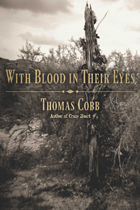 With Blood in Their Eyes
Thomas Cobb
University of Arizona Press, 2013 Winner, Spur Award for Best Western Long Novel (Western Writers of America) and Southwest Book Award (Border Regional Library Association)
On February 10, 1918, John Power woke to the sound of bells and horses’ hooves. He was sharing a cabin near the family mine with his brother Tom and their father Jeff; hired man Tom Sisson was also nearby. Then gunfire erupted, and so began the day when the Power brothers engaged the Graham County Sheriff’s Department in the bloodiest shootout in Arizona history. Now Thomas Cobb, author of Crazy Heart and Shavetail, has taken up the story in this powerful and meticulously researched nonfiction novel. What seems at first a simple tale of crime and pursuit takes on much greater meaning and complexity as the story traces the past lives of the main characters and interconnects them—all leading back to the deadly confrontation that begins the book. Cobb cunningly weaves the story of the Power brothers’ escape with flashbacks of the boys’ father’s life and his struggle to make a living ranching, logging, and mining in the West around the turn of the century. Deftly drawn characters and cleverly concealed motivations work seamlessly to blend a compelling family history with a desperate story of the brothers as they attempt to escape. Grappling with themes of loyalty, masculinity, technology, and honor, this sweeping saga reveals the passion and brutality of frontier life in Arizona a hundred years ago. Richly authentic and beautifully written, With Blood in Their Eyes breathes dramatic new life into this nearly forgotten episode of the American West.
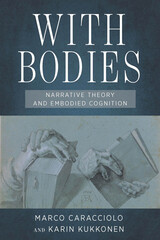 With Bodies: Narrative Theory and Embodied Cognition
Marco Caracciolo and Karin Kukkonen
Ohio State University Press, 2021 We read not only with our eyes and minds, but with our entire body. In With Bodies, Marco Caracciolo and Karin Kukkonen move systematically through all elements of narrative and put them into dialogue with recent research in neuroscience, cognitive psychology, cognitive linguistics, and philosophy of mind to investigate what it means to read literary narratives bodily. They draw their findings from a wide corpus of material—narratives from antiquity to the present and composed in various languages, from Apuleius’s Metamorphoses to Hilary Mantel’s Wolf Hall—and craft their embodied narratology to retool current theories about authors, narrators and characters, time and space in storyworlds, and plot. Their investigation serves as a foundation for wider discussions on embodied narratology’s contributions to literary history, computation and AI, posthumanism, gender studies, and world literature.
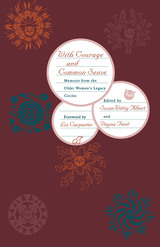 With Courage and Common Sense: Memoirs from the Older Women's Legacy Circles
Edited by Susan Wittig Albert and Dayna Finet
University of Texas Press, 2003 Women who were sixty or older at the turn of the twenty-first century have lived through some of recent history's most momentous moments—and yet these women often believe that their personal lives and stories are insignificant, not worthy of being recorded for future generations. To change that perception and capture some of these life stories before they are lost, the Story Circle Network, a national organization dedicated to helping women write about their lives, developed the Older Women's Legacy (OWL) Circle Memoir Workshops. During the first two years of the project (1998-2000), nearly 500 older women participated in workshops that offered them the opportunity and encouragement to reflect on and create written records of their lives. With Courage and Common Sense presents an extensive selection of memoirs from the OWL Circle project. Organized thematically, they describe women's experiences of identity, place, work, family life, love and marriage, loss and healing, adventures great and small, major historical events, and legacies to keep and pass along. Taken as a whole, the memoirs chronicle far-reaching changes in the ways that women participated in the world during the twentieth century. They show how women learned to surmount obstacles, to courageously make the most of the opportunities that came their way, and to move quietly and wisely beyond the limits that were imposed upon them.
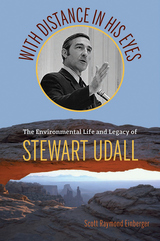 With Distance in His Eyes: The Environmental Life and Legacy of Stewart Udall
Scott Raymond Einberger
University of Nevada Press, 2018 One of America’s most significant architects of conservation and the environment, Stewart Udall, comes to life in this environmental biography. Perhaps no other public official or secretary of the interior has ever had as much success in environmental protection, natural resource conservation, and outdoor recreation opportunity creation as Udall. A progressive Mormon, born and raised in rural Arizona, Udall served as the U.S. Secretary of the Interior under the presidential cabinets of John F. Kennedy and Lyndon Baines Johnson from 1961-1969. During these eight years, he established dozens of new national park units and national wildlife refuges, wrote the Endangered Species Preservation Act, lobbied for unpolluted water, and offered ways to beautify urban spaces and bring the impoverished out of poverty. Later in life, he continued as an advocate for conservation and the environment, specifically by proposing solutions to the challenges associated with global warming and the widespread use of oil.
What can we learn from this farsighted individual?
In a day and age of partisan politics, poor congressional approval ratings, and global warming and climate change, this captivating biography offers a profound and historical record into Udall’s life-long devotion to environmental issues he cared about most deeply—issues more relevant today than they were then. Intimate moments include Udall’s learning of the Kennedy assassination, his push for civil rights for African Americans, his meeting in the U.S.S.R. with Nikita Khrushchev—the first Kennedy cabinet member to do so—and his warnings about global warming 50 years prior to Al Gore’s Nobel Prize-winning film.
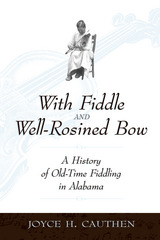 With Fiddle and Well-Rosined Bow: A History of Old-Time Fiddling In Alabama
Joyce H. Cauthen
University of Alabama Press, 2001 Relying on extensive archival research and on sixty interviews with fiddlers and their families and friends, Cauthen tells the rich, full story of old-time fiddling in Alabama. Writing of life in the Alabama Territory in the late 1700s, A. J. Pickett, the state's first historian, noted that the country abounded in fiddlers, of high and low degree. After the defeat of the Creek Indians at the Battle of Horseshoe Bend in 1813, the number of fiddlers swelled as settlers from the southern states surrounding Alabama claimed the land. The music they played was based on tunes brought from Ireland, Scotland, and England, but in Alabama they developed their own southern accent as their songs became the music of celebration and relaxation for the state's pioneers. Early in the 20th century such music began to be called "old-time fiddling," to distinguish it from the popular music of the day, and the term is still used to distinguish that style from more modern bluegrass and country fiddle styles. In With Fiddle and Well-Rosined Bow, Cauthen focuses on old-time fiddling in Alabama from the settlement of the state through World War II. Cauthen shows the effects of events, inventions, ethnic groups, and individuals upon fiddlers' styles and what they played. Cauthen gives due weight to the "modest masters of fiddle and bow" who were stars only to their families and communities. The fiddlers themselves tell why they play, how they learned without formal instruction and written music, and how they acquired their instruments and repertoires. Cauthen also tells the stories of "brag" fiddlers such as D.Dix Hollis, Y. Z. Hamilton, Charlie Stripling, "Fiddling" Tom Freeman,"Monkey" Brown, and the Johnson Brothers whose reputations spread beyond their communities through commercial recordings and fiddling contests. Described in vivid detail are the old-style square dances, Fourth of July barbeques and other celebrations, and fiddlers' conventions that fiddler shave reigned over throughout the state's history.
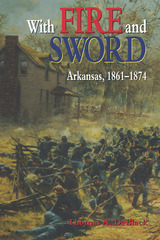 With Fire and Sword: Arkansas, 1861-1874
Thomas A. Deblack
University of Arkansas Press, 2003 When Arkansas seceded from the Union in 1861, it was a thriving state. But the Civil War and Reconstruction left it reeling, impoverished, and so deeply divided that it never regained the level of prosperity it had previously enjoyed. Although most of the major battles of the war occurred elsewhere, Arkansas was critical to the Confederate war effort in the vast Trans-Mississippi region, and Arkansas soldiers served—some for the Union and more for the Confederacy—in every major theater of the war. And the war within the state was devastating. Union troops occupied various areas, citizens suffered greatly from the war’s economic disruption, and guerilla conflict and factional tensions left a bitter legacy. Reconstruction was in many ways a continuation of the war as the prewar elite fought to regain economic and political power.
In this, the fourth volume in the Histories of Arkansas series, Thomas DeBlack not only describes the major players and events in this dramatic and painful story, but also explores the experiences of ordinary people. Although the historical evidence is complex—and much of the secondary literature is extraordinarily partisan—DeBlack offers a balanced, vivid overview of the state’s most tumultuous period.
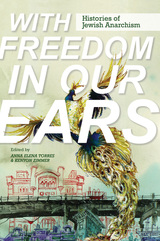 With Freedom in Our Ears: Histories of Jewish Anarchism
Edited by Anna Elena Torres and Kenyon Zimmer
University of Illinois Press, 2023 Jewish anarchism has long been marginalized in histories of anarchist thought and action. Anna Elena Torres and Kenyon Zimmer edit a collection of essays which recovers many aspects of this erased tradition. Contributors bring to light the presence and persistence of Jewish anarchism throughout histories of radical labor, women’s studies, political theory, multilingual literature, and ethnic studies. These essays reveal an ongoing engagement with non-Jewish radical cultures, including the translation practices of the Jewish anarchist press. Jewish anarchists drew from a matrix of secular, cultural, and religious influences, inventing new anarchist forms that ranged from mystical individualism to militantly atheist revolutionary cells. With Freedom in Our Ears brings together more than a dozen scholars and translators to write the first collaborative history of international, multilingual, and transdisciplinary Jewish anarchism.
With Good Heart: Yaqui Beliefs and Ceremonies in Pascua Village
Muriel Thayer Painter
University of Arizona Press, 1986 Muriel Painter's account of Yaqui beliefs and ceremonies is based on her firsthand observations over the course of four decades. By the time Painter died in 1974, she was as familiar with Yaqui culture as on outsider could be and left behind the manuscript from which this volume arose. It was reviewed before the original publication in 1986 by a Yaqui committee and edited for publication by Edward Spicer.
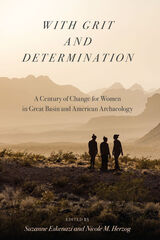 With Grit and Determination: A Century of Change for Women in Great Basin and American Archaeology
Edited by Suzanne Eskenazi and Nicole M. Herzog
University of Utah Press, 2020 Spanning more than one hundred years of women’s careers and lives, this collection illuminates what it was and is to be a female archaeologist. These personal accounts of researchers, ethnographers, and field archaeologists in the private, public, and academic sectors highlight the unique role women have played in the development of American and Great Basin archaeology. Written by women trained or working in the Great Basin, these accounts reflect the broader landscape of American archaeology, offering a glimpse into a larger narrative about making one’s way in a historically male field. By sharing their stories, the authors highlight the positive aspects of the field, recognize the challenges that still exist, and encourage conversations about inclusion, diversity, and the future of archaeology in the Great Basin and beyond. Their authentic and intimate narratives inspire us to look at challenges not as roadblocks, but as opportunities for lifelong growth and success.
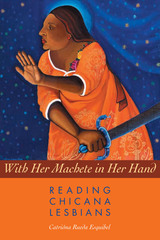 With Her Machete in Her Hand: Reading Chicana Lesbians
By Catrióna Rueda Esquibel
University of Texas Press, 2006 With the 1981 publication of the groundbreaking anthology This Bridge Called My Back: Writings by Radical Women of Color, Cherríe Moraga and Gloria Anzaldúa ushered in an era of Chicana lesbian writing. But while these two writers have achieved iconic status, observers of the Chicana/o experience have been slow to perceive the existence of a whole community—lesbian and straight, male as well as female—who write about the Chicana lesbian experience. To create a first full map of that community, this book explores a wide range of plays, novels, and short stories by Chicana/o authors that depict lesbian characters or lesbian desire. Catrióna Rueda Esquibel starts from the premise that Chicana/o communities, theories, and feminisms cannot be fully understood without taking account of the perspectives and experiences of Chicana lesbians. To open up these perspectives, she engages in close readings of works centered around the following themes: La Llorona, the Aztec Princess, Sor Juana Inés de la Cruz, girlhood friendships, rural communities and history, and Chicana activism. Her investigation broadens the community of Chicana lesbian writers well beyond Moraga and Anzaldúa, while it also demonstrates that the histories of Chicana lesbians have had to be written in works of fiction because these women have been marginalized and excluded in canonical writings on Chicano life and experience.
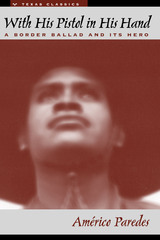 With His Pistol in His Hand: A Border Ballad and Its Hero
By Américo Paredes
University of Texas Press, 1958 Gregorio Cortez Lira, a ranchhand of Mexican parentage, was virtually unknown until one summer day in 1901 when he and a Texas sheriff, pistols in hand, blazed away at each other after a misunderstanding. The sheriff was killed and Gregorio fled immediately, realizing that in practice there was one law for Anglo-Texans, another for Texas-Mexicans. The chase, capture, and imprisonment of Cortez are high drama that cannot easily be forgotten. Even today, in the cantinas along both sides of the Rio Grande, Mexicans sing the praises of the great "sheriff-killer" in the ballad which they call "El Corrido de Gregorio Cortez." Américo Paredes tells the story of Cortez, the man and the legend, in vivid, fascinating detail in "With His Pistol in His Hand," which also presents a unique study of a ballad in the making. Deftly woven into the story are interpretations of the Border country, its history, its people, and their folkways.
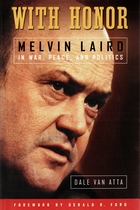 With Honor: Melvin Laird in War, Peace, and Politics
Van Atta
University of Wisconsin Press, 2008 In 1968, at the peak of the Vietnam War, centrist Congressman Melvin Laird (R-WI) agreed to serve as Richard Nixon’s secretary of defense. It was not, Laird knew, a move likely to endear him to the American public—but as he later said, “Nixon couldn’t find anybody else who wanted the damn job.” For the next four years, Laird deftly navigated the morass of the war he had inherited. Lampooned as a “missile head,” but decisive in crafting an exit strategy, he doggedly pursued his program of Vietnamization, initiating the withdrawal of U.S. military personnel and gradually ceding combat responsibilities to South Vietnam. In fighting to bring the troops home faster, pressing for more humane treatment of POWs, and helping to end the draft, Laird employed a powerful blend of disarming Midwestern candor and Washington savvy, as he sought a high moral road bent on Nixon’s oft-stated (and politically instrumental) goal of peace with honor.
The first book ever to focus on Laird’s legacy, this authorized biography reveals his central and often unrecognized role in managing the crisis of national identity sparked by the Vietnam War—and the challenges, ethical and political, that confronted him along the way. Drawing on exclusive interviews with Laird, Henry Kissinger, Gerald Ford, and numerous others, author Dale Van Atta offers a sympathetic portrait of a man striving for open government in an atmosphere fraught with secrecy. Van Atta illuminates the inner workings of high politics: Laird’s behind-the-scenes sparring with Kissinger over policy, his decisions to ignore Nixon’s wilder directives, his formative impact on arms control and health care, his key role in the selection of Ford for vice president, his frustration with the country’s abandonment of Vietnamization, and, in later years, his unheeded warning to Donald Rumsfeld that “it’s a helluva lot easier to get into a war than to get out of one.” Best Books for Regional Special Interests, selected by the American Association of School Librarians, and Best Books for Special Interests, selected by the Public Library Association
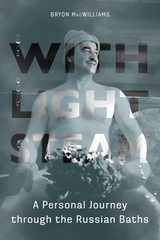 With Light Steam: A Personal Journey through the Russian Baths
Bryon MacWilliams
Northern Illinois University Press, 2014 In 1996 Bryon MacWilliams left the relative stability of the United States for the chaos of post-Soviet Russia, and stayed. Over the course of nearly twelve years he reported on academe and the sciences for the world’s leading publications, and sought out the best baths—or banyas—everywhere he went. His story of Russia through its cult of steam begins on a frosty Sunday morning in a gypsy cab traveling to a bathhouse in Moscow, where the steam is conjured by an out-of-work carpenter named Grisha, who takes on MacWilliams as a kind of apprentice, allowing him into an otherwise closed world through which MacWilliams could see himself, and Russia, with different eyes. The Russian bathers insist, only half-jokingly, that the American is a spy.
Writing in a highly engaging style, MacWilliams travels the country to convey the breadth of banya culture and what it means to steam, a process that is at once a simple cleansing and a deep purification. It awakens the body and quiets the mind, generating waves of good feeling akin to an endorphin high. Each chapter of this splendid book is an episode—spanning from several hours to several days—from the Far North, Moscow, the Ural Mountains, the Solovetsky Islands, and a southern stretch of the Volga River.
With Light Steam, the title is derived from the phrase used in banyas in lieu of goodbye, is the only book in English devoted to the banya and the only volume in any language to present Russia through the lens of its bath culture, the most Russian thing there is. General readers and scholars alike will be enchanted with this unforgettable portrait of a people and a millennia-spanning tradition.
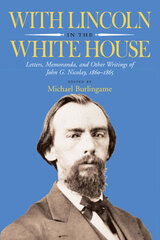 With Lincoln in the White House: Letters, Memoranda, and other Writings of John G. Nicolay, 1860-1865
Edited by Michael Burlingame
Southern Illinois University Press, 2000 From the time of Lincoln’s nomination for the presidency until his assassination, John G. Nicolay served as the Civil War president’s chief personal secretary. Nicolay became an intimate of Lincoln and probably knew him as well as anyone outside his own family. Unlike John Hay, his subordinate, Nicolay kept no diary, but he did write several memoranda recording his chief’s conversation that shed direct light on Lincoln. In his many letters to Hay, to his fiancée, Therena Bates, and to others, Nicolay often describes the mood at the White House as well as events there. He also expresses opinions that were almost certainly shaped by the president For this volume, Michael Burlingame includes all of Nicolay’s memoranda of conversations, all of the journal entries describing Lincoln’s activities, and excerpts from most of the nearly three hundred letters Nicolay wrote to Therena Bates between 1860 and 1865. He includes letters and portions of letters that describe Lincoln or the mood at the White House or that give Nicolay’s personal opinions. He also includes letters written by Nicolay while on troubleshooting missions for the president. An impoverished youth, Nicolay was an unlikely candidate for the important position he held during the Civil War. It was only over the strong objections of some powerful people that he became Lincoln’s private secretary after Lincoln’s nomination for the presidency in 1860. Prominent Chicago Republican Herman Kreismann found the appointment of a man so lacking in savoir faire “ridiculous.” Henry Martin Smith, city editor of the Chicago Tribune, called Nicolay’s appointment a national loss. Henry C.Whitney was surprised that the president would appoint a “nobody.” Lacking charm, Nicolay became known at the White House as the “bulldog in the ante-room” with a disposition “sour and crusty.” California journalist Noah Brooks deemed Nicolay a “grim Cerberus of Teutonic descent who guards the last door which opens into the awful presence.” Yet in some ways he was perfectly suited for the difficult job. William O. Stoddard, noting that Nicolay was not popular and could “say 'no'about as disagreeably as any man I ever knew,” still granted that Nicolay served Lincoln well because he was devoted and incorruptible. Stoddard concluded that Nicolay “deserves the thanks of all who loved Mr. Lincoln.” For his part, Nicolay said he derived his greatest satisfaction “from having enjoyed the privilege and honor of being Mr. Lincoln’s intimate and official private secretary, and of earning his cordial friendship and perfect trust.”
 With Music and Justice for All: Some Southerners and Their Passions
Frye Gaillard
Vanderbilt University Press, 2008 For nearly forty years, Frye Gaillard has covered the American South as a journalist, historian and writer of memoir. With Music and Justice for All is a collection of Gaillard's most compelling work, one writer's odyssey though a time and place. There are stories here of the civil rights movement, a moral, social and political upheaval that changed the South in so many ways. Gaillard has captured the essence of that drama by giving it a face--telling the stories of the ordinary people, as well as the icons. In the course of these pages, the reader not only meets Dr. Martin Luther King, but also the lesser known heroes such Perry Wallace--the first African American basketball player in the Southeastern Conference and Thomas Gilmore, the first black sheriff in one of the toughest counties in the Alabama Black Belt, a man of non-violence, who refused, in deference to the fallen Dr. King, to carry a gun during the thirteen years he served as sheriff.
But Gaillard examines the South from other angles as well--the religious heritage, for example, that once led Flannery O'Connor to write about a "Christ-haunted" South. We meet Billy Graham, the greatest evangelist of his time, who admitted in the course of interviews with Gaillard that his ministry represented a "very narrow gift." There are profiles here of the Southern Baptist renegade Will Campbell and former President Jimmy Carter, whose commitment to his own understanding of Christianity has sometimes led him into controversy. Gaillard writes also about the revealing power of Southern music--how the great Johnny Cash, for example, became a force for reconciliation in America. In the final section of the book we meet some of the characters Gaillard has covered through the years, including John T. Scopes, whose final public appearance Gaillard wrote about as a young reporter in Nashville.
With Nature: Nature Philosophy as Poetics through Schelling, Heidegger, Benjamin and Nancy
Warwick Mules
Intellect Books, 2014 With Nature provides new ways to think about our relationship with nature in today’s technologically mediated culture. Warwick Mules makes original connections with German critical philosophy and French poststructuralism in order to examine the effects of technology on our interactions with the natural world. In so doing, the author proposes a new way of thinking about the eco-self in terms of a careful sharing of the world with both human and non human beings. With Nature ultimately argues for a poetics of everyday life that affirms the place of the human-nature relation as a creative and productive site for ecological self-renewal and redirection.
With or Without: Reading Postwar German Women Poets
Charlotte Ann Melin
Northwestern University Press, 2013 With or Without explores the role of German women’s poetry in the contemporary literary discourse of the latter half of the twentieth century. Melin highlights the significant role that women played in the shaping of postwar German poetry as a whole and also their deep engagement with the broader issues of modernism, postmodernism, and related discourses about the relationship between individual experience, communal ideals, and interpersonal expression. Melin shows that for German writers poetry became the genre that had the capacity to project subjectivity, voice, and authenticity.
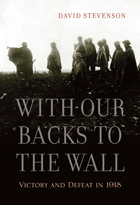 With Our Backs to the Wall: Victory and Defeat in 1918
David Stevenson
Harvard University Press, 2013 With so much at stake and so much already lost, why did World War I end with a whimper-an arrangement between two weary opponents to suspend hostilities? After more than four years of desperate fighting, with victories sometimes measured in feet and inches, why did the Allies reject the option of advancing into Germany in 1918 and taking Berlin? Most histories of the Great War focus on the avoidability of its beginning. This book brings a laser-like focus to its ominous end-the Allies' incomplete victory, and the tragic ramifications for world peace just two decades later.
In the most comprehensive account to date of the conflict's endgame, David Stevenson approaches the events of 1918 from a truly international perspective, examining the positions and perspectives of combatants on both sides, as well as the impact of the Russian Revolution. Stevenson pays close attention to America's effort in its first twentieth-century war, including its naval and military contribution, army recruitment, industrial mobilization, and home-front politics. Alongside military and political developments, he adds new information about the crucial role of economics and logistics.
The Allies' eventual success, Stevenson shows, was due to new organizational methods of managing men and materiel and to increased combat effectiveness resulting partly from technological innovation. These factors, combined with Germany's disastrous military offensive in spring 1918, ensured an Allied victory-but not a conclusive German defeat.
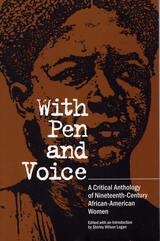 With Pen and Voice: A Critical Anthology of Nineteenth-Century African-American Women
Shirley Wilson Logan
Southern Illinois University Press, 1995 "Owoman, woman! upon you I call; for upon your exertions almost entirely depends whether the rising generation shall be any thing more than we have been or not. Owoman, woman! your example is powerful, your influence great."—Maria W. Stewart, "An Address Delivered Before the Afric-American Female Intelligence Society of Boston" (1832) Here—in the only collection of speeches by nineteenth-century African-American women—is the battle of words these brave women waged to address the social ills of their century. While there have been some scattered references to the unique roles these early "race women" played in effecting social change, until now few scholars have considered the rhetorical strategies they adopted to develop their powerful arguments. In this chronological anthology, Shirley Wilson Logan highlights the public addresses of these women, beginning with Maria W. Stewart’s speech at Franklin Hall in 1832, believed to be the first delivered to an audience of men and women by an American-born woman. In her speech, she focused on the plight of the Northern free black. Sojourner Truth spoke in 1851 at the Akron, Ohio, Women’s Rights Convention not only for the rights of black women but also for the rights of all oppressed nineteenth-century women. Frances Ellen Watkins Harper struggled with the conflict between universal suffrage and suffrage for black men. Anna Julia Cooper chastised her unique audience of black Episcopalian clergy for their failure to continue the tradition of the elevation of womanhood initiated by Christianity and especially for their failure to support the struggling Southern black woman. Ida B. Wells’s rhetoric targeted mob violence directed at Southern black men. Her speech was delivered less than a year after her inaugural lecture on this issue—following a personal encounter with mob violence in Memphis. Fannie Barrier Williams and Victoria Earle Matthews advocated social and educational reforms to improve the plight of Southern black women. These speeches—all delivered between 1832 and 1895—are stirring proof that, despite obstacles of race and gender, these women still had the courage to mount the platform in defense of the oppressed. Introductory essays focus on each speaker’s life and rhetoric, considering the ways in which these women selected evidence and adapted language to particular occasions, purposes, and audiences in order to persuade. This analysis of the rhetorical contexts and major rhetorical tactics in the speeches aids understanding of both the speeches and the skill of the speakers. A rhetorical timeline serves as a point of reference. Historically grounded, this book provides a black feminist perspective on significant events of the nineteenth century and reveals how black women of that era influenced and were influenced by the social problems they addressed. "A government which can protect and defend its citizens from wrong and outrage and does not is vicious. A government which would do itand cannot is weak; and where human life is insecure through either weakness or viciousness in the administration of law, there must be a lack of justice, and where this is wanting nothing can make up the deficiency."—Frances Ellen Watkins Harper, "Duty to Dependent Races," National Council of Women of the United States, Washington, D.C. (1891)
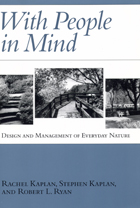 With People in Mind: Design and Management of Everyday Nature
Rachel Kaplan, Stephen Kaplan, and Robert L. Ryan
Island Press, 1998 Some parks, preserves, and other natural areas serve people well; others are disappointing. Successful design and management requires knowledge of both people and environments. With People in Mind explores how to design and manage areas of "everyday nature" -- parks and open spaces, corporate grounds, vacant lots and backyard gardens, fields and forests -- in ways that are beneficial to and appreciated by humans. Rachel Kaplan and Stephen Kaplan, leading researchers in the field of environmental psychology, along with Robert Ryan, a landscape architect and urban planner, provide a conceptual framework for considering the human dimensions of natural areas and offer a fresh perspective on the subject. The authors examine. physical aspects of natural settings that enhance preference and reduce fear ways to facilitate way-finding how to create restorative settings that allow people to recover from the stress of daily demands landscape elements that are particularly important to human needs techniques for obtaining useful public input
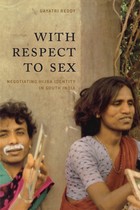 With Respect to Sex: Negotiating Hijra Identity in South India
Gayatri Reddy
University of Chicago Press, 2005 With Respect to Sex is an intimate ethnography that offers a provocative account of sexual and social difference in India. The subjects of this study are hijras or the "third sex" of India—individuals who occupy a unique, liminal space between male and female, sacred and profane.
Hijras are men who sacrifice their genitalia to a goddess in return for the power to confer fertility on newlyweds and newborn children, a ritual role they are respected for, at the same time as they are stigmatized for their ambiguous sexuality. By focusing on the hijra community, Gayatri Reddy sheds new light on Indian society and the intricate negotiations of identity across various domains of everyday life. Further, by reframing hijra identity through the local economy of respect, this ethnography highlights the complex relationships among local and global, sexual and moral, economies.
This book will be regarded as the definitive work on hijras, one that will be of enormous interest to anthropologists, students of South Asian culture, and specialists in the study of gender and sexuality.
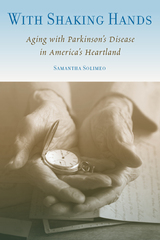 With Shaking Hands: Aging with Parkinson's Disease in America's Heartland
Solimeo, Samantha
Rutgers University Press, 2009 Far from celebrity media spotlight, ordinary individuals, many older and less advantaged, suffer the disabling pain of Parkinson's disease (PD), an illness whose progressive symptoms often mimic old age and cause mobility impairment, communication barriers, and social isolation. At the heart of With Shaking Hands is the account of elder Americans in rural Iowa who have been diagnosed with PD. With a focus on the impact of chronic illness on an aging population, Samantha Solimeo combines clear and accessible prose with qualitative and quantitative research to demonstrate how PD accelerates, mediates, and obscures patterns of aging. She explores how ideas of what to expect in older age influence and direct interpretations of one's body. This sensitive and groundbreaking work unites theories of disease with modern conceptions of the body in biological and social terms. PD, like other chronic disorders, presents a special case of embodiment which challenge our thinking about how such diseases should be researched and how they are experienced.
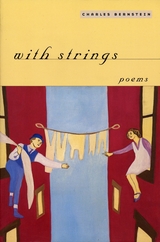 With Strings
Charles Bernstein
University of Chicago Press, 2001 A companion to the critically acclaimed My Way, his 1999 montage of essays, conversations, and poems, With Strings catapults Charles Bernstein into the future of American poetry. A compilation of sixty-nine poems in various forms and styles, dating mostly from the 1990s, With Strings is his most buoyant collection to date. With its fractured nursery rhymes, distressed mottoes, runcible riddles, and inscrutable sayings, Bernstein takes us on a poetic trip that swerves from the comic to the political, from the whimsical to the elegiac. The whole presents a densely sounded echo chamber in which a range of themes, moods, and perceptions extend and reverberate.
Charles Bernstein is perhaps best known as one of the founders of the L=A=N=G=U=A=G=E poetry movement of the 1970s. He remains one of America's liveliest advocates and practitioners of radically inventive poetry. The title of his new collection, With Strings, suggests the lush arrangement of a musical work as well as the unacknowledged implications of our everyday agreements. Just as language binds us together with its associated meanings, With Strings bounces against the ties that rend us apart as they fasten us together. From his samplings of everyday life, to his demented yet sonorous iambic beats, Bernstein has once again created a poetry of our time, for our time, and by our time.
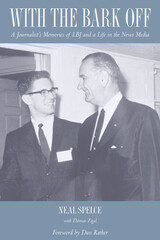 With the Bark Off: A Journalist’s Memories of LBJ and a Life in the News Media
Neal Spelce with Thomas Zigal
University of Texas Press, 2021 What if you got a call from Lyndon Johnson to be in Washington DC tomorrow to take a trip around the world? If you are twenty-four-year-old broadcast journalist Neal Spelce, you buckle up. A two-week diplomatic dream trip turned into a lifelong rollercoaster ride. Spelce began his career as a part-time journalist in the LBJ family-owned Austin TV station in 1956, which vaulted him into a lifetime of memorable experiences with Johnson and many icons of the twentieth century. From his live reporting during the UT Tower shooting tragedy to his lifelong association with LBJ, Spelce found himself behind the scenes in many of the twentieth century’s crucial moments. The Austin-based journalist shares candid moments with LBJ and five other US presidents, including a rare interview with father and son presidents George Bush while the three were cramped together in a small bass boat on a Texas lake. During his lengthy media career, Spelce saw Austin grow from a college town to a thriving city. Along the way he interacted with Texas legends such as Darrell Royal, Willie Nelson, Dan Rather, and more, all part of entertaining stories that he tells, as LBJ liked to say, “with the bark off.”
With the Boys: Little League Baseball and Preadolescent Culture
Gary Alan Fine
University of Chicago Press, 1987 What are boys like? Who is the creature inhabiting the twilight zone between the perils of the Oedipus complex and the Strum und Drang of puberty? In With the Boys, Gary Alan Fine examines the American male preadolescent by studying the world of Little League baseball. Drawings on three years of firsthand observation of five Little Leagues, Fine describes how, through organized sport and its accompanying activities, boys learn to play, work, and generally be "men."
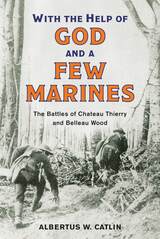 "With the Help of God and a Few Marines": The Battles of Chateau Thierry and Belleau Wood
Albertus W. Catlin
Westholme Publishing, 2013 An Account of the United States Marines’ Service in Two of the Most Important Battles Fought by American Forces in World War I
“The story of the marines in France is told with authority and interest.”—Booklist
“It is one of the books about the American war effort which is well worth keeping as well as reading.”—Outlook
“A well-written and complete account.”—Library Bulletin
In an area of woods smaller than New York City’s Central Park, the United States Marines made a desperate and dramatic stand against the might of the Imperial Germany Army’s final offensive in June 1918. Had the Germans broken through the lines as planned, there would have been no Allied forces between them and Paris. World War I had stagnated for nearly four years, and this last German push was a desperate, but powerful gamble to finally bring the war to a close. As at Guadalcanal during World War II, the enemy had not anticipated the ferocity and doggedness of the United States Marines. Leading this small expeditionary force was Brigadier General Albertus Wright Catlin. For most of the month of June the marines fought the Germans at close range, using their rifles effectively and engaging in hand-to-hand combat. Toward the end of the battle, Catlin was shot in the chest by a sniper and removed from the field. While recuperating, he began “With the Help of God and a Few Marines”, his account of the marines’ experience in France, including what became known as the Battle of Belleau Wood. First published in 1919, and considered among the finest American memoirs from World War I, it is notable for its description of what it means to be a United States Marine—an account as relevant today as it was nearly a century ago—and its straightforward depiction of life and death on the Western Front in the last months of the war.
 With the Lapps in the High Mountains: A Woman among the Sami, 1907–1908
Emilie Demant Hatt; Edited and translated by Barbara Sjoholm; Foreword by Hugh Beach
University of Wisconsin Press, 2013 With the Lapps in the High Mountains is an entrancing true account, a classic of travel literature, and a work that deserves wider recognition as an early contribution to ethnographic writing. Published in 1913 and available here in its first English translation, it is the narrative of Emilie Demant Hatt's nine-month stay in the tent of a Sami family in northern Sweden in 1907–8 and her participation in a dramatic reindeer migration over snow-packed mountains to Norway with another Sami community in 1908. A single woman in her thirties, Demant Hatt immersed herself in the Sami language and culture. She writes vividly of daily life, women's work, children's play, and the care of reindeer herds in Lapland a century ago. While still an art student in Copenhagen in 1904, Demant Hatt had taken a vacation trip to northern Sweden, where she chanced to meet Sami wolf hunter Johan Turi. His dream of writing a book about his people sparked her interest in the culture, and she began to study the Sami language at the University of Copenhagen. Though not formally trained as an ethnographer, she had an eye for detail. The journals, photographs, sketches, and paintings she made during her travels with the Sami enriched her eventual book, and in With the Lapps in the High Mountains she memorably portrays people, dogs, reindeer, and the beauty of the landscape above the Arctic Circle. This English-language edition also includes photographs by Demant Hatt, an introduction by translator Barbara Sjoholm, and a foreword by Hugh Beach, author of A Year in Lapland: Guest of the Reindeer Herders.
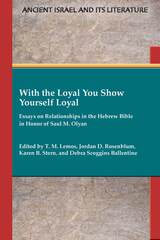 With the Loyal You Show Yourself Loyal: Essays on Relationships in the Hebrew Bible in Honor of Saul M. Olyan
T. M. Lemos
SBL Press, 2021 Contributors to this volume come together to honor the lifetime of work of Saul M. Olyan, Samuel Ungerleider Jr. Professor of Judaic Studies and Professor of Religious Studies at Brown University. Essays by his students, colleagues, and friends focus on and engage with his work on relationships in the Hebrew Bible, from the marking of status in relationships of inequality, to human family, friend, and sexual relationships, to relationships between divine beings. Contributors include Susan Ackerman, Klaus-Peter Adam, Rainer Albertz, Andrea Allgood, Debra Scoggins Ballentine, Bob Becking, John J. Collins, Stephen L. Cook, Ronald Hendel, T. M. Lemos, Nathaniel B. Levtow, Carol Meyers, Susan Niditch, Brian Rainey, Thomas Römer, Jordan D. Rosenblum, Rüdiger Schmitt, Jennifer Elizabeth Singletary, Kerry M. Sonia, Karen B. Stern, Stanley Stowers, Andrew Tobolowsky, Karel van der Toorn, Emma Wasserman, and Steven Weitzman.
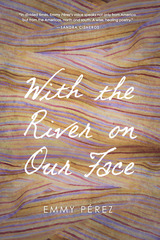 With the River on Our Face
Emmy Pérez
University of Arizona Press, 2016 Emmy Pérez’s poetry collection With the River on Our Face flows through the Southwest and the Texas borderlands to the river’s mouth in the Rio Grande Valley/El Valle. The poems celebrate the land, communities, and ecology of the borderlands through lyric and narrative utterances, auditory and visual texture, chant, and litany that merge and diverge like the iconic river in this long-awaited collection.
Pérez reveals the strengths and nuances of a universe where no word is “foreign.” Her fast-moving, evocative words illuminate the prayers, gasps, touches, and gritos born of everyday discoveries and events. Multiple forms of reference enrich the poems in the form of mantra: ecologist’s field notes, geopolitical and ecofeminist observations, wildlife catalogs, trivia, and vigil chants.
“What is it to love / within viewing distance of night / vision goggles and guns?” is a question central to many of these poems.
The collection creates a poetic confluence of the personal, political, and global forces affecting border lives. Whether alluding to El Valle as a place where toxins now cross borders more easily than people or wildlife, or to increased militarization, immigrant seizures, and twenty-first-century wall-building, Pérez’s voice is intimate and urgent. She laments, “We cannot tattoo roses / On the wall / Can’t tattoo Gloria Anzaldúa’s roses / On the wall”; yet, she also reaffirms Anzaldúa’s notions of hope through resilience and conocimiento.
With the River on Our Face drips deep like water, turning into amistad—an inquisition into human relationships with planet and self.
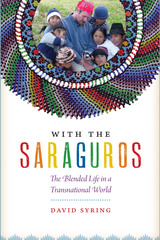 With the Saraguros: The Blended Life in a Transnational World
By David Syring
University of Texas Press, 2014 Highlighting globalization’s effects on humanity through the lens of Ecuador’s indigenous Saraguro people, With the Saraguros marks a compelling departure from conventional approaches to ethnography. While documenting and exploring the social patterns among the Saraguro, with an emphasis on the role of women beadworkers, David Syring blends storytelling, dialogue, poetry, and memoir to describe his own realm as a fieldworker in anthropology. As he considers the influence of women’s labor in a community in which the artistry of beadwork is richly symbolic, he also considers how the Saraguro view their observers—the anthropologists. Probing the role of researchers in a time when basic humanistic questions now often reflect a critical balance between commerce and sustainability, With the Saraguros asks, “What does it mean to live ‘the good life’ in different cultural contexts, and how does our work life relate to this pursuit?” For those who have chosen a work life of anthropology, Syring captures the impact of fieldwork—which uproots the researcher from his or her daily routine—and its potential to deliver new levels of consciousness. The result constitutes more than just the first English-language book dedicated to the dynamic creativity of the Saraguro, contextualized by their social and political history; Syring’s work, which ranges from the ecological imagination to the metaphors of trade, is also a profound meditation on the ways we experience boundaries now that borders no longer create sharply drawn divides between cultural worlds, and “distant” no longer means “separate.”
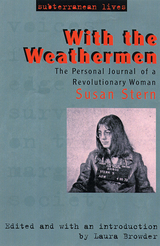 With the Weathermen: The Personal Journal of a Revolutionary Woman
Susan Stern and Edited and with an introduction by Laura Browder
Rutgers University Press, 2007 Drugs. Sex. Revolutionary violence. From its first pages, Susan Stern's memoir With the Weathermen provides a candid, first-hand look at the radical politics and the social and cultural environment of the New Left during the late 1960s.
The Weathermen--a U.S.-based, revolutionary splinter group of Students for a Democratic Society--advocated the overthrow of the government and capitalism, and toward that end, carried out a campaign of bombings, jailbreaks, and riots throughout the United States. In With the Weathermen Stern traces her involvement with this group, and her transformation from a shy, married graduate student into a go-go dancing, street-fighting "macho mama." In vivid and emotional language, she describes the attractions and difficulties of joining a collective radical group and in maintaining a position within it.
Stern's memoir offers a rich description of the raw and rough social dynamics of this community, from its strict demands to "smash monogamy," to its sometimes enforced orgies, and to the demeaning character assassination that was led by the group's top members. She provides a distinctly personal and female perspective on the destructive social functionality and frequently contradictory attitudes toward gender roles and women's rights within the New Left.
Laura Browder's masterful introduction situates Stern's memoir in its historical context, examines the circumstances of its writing and publication, and describes the book's somewhat controversial reception by the public and critics alike.
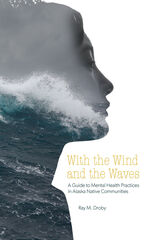 With the Wind and the Waves: A Guide to Mental Health Practices in Alaska Native Communities
Ray M. Droby
University of Alaska Press, 2020 In With the Wind and the Waves, psychologist Ray M. Droby tells a story of treatment and learning, drawing on experiences ranging from an ocean journey he took on the Bering Sea while serving in a Alaska Native community to his clinical work as a psychologist in rural Alaska. Like negotiating an ocean, Droby moves “with the wind and the waves” while working with substance abuse disorders and mental health issues superimposed on intergenerational trauma and internalized oppression. He captures positive momentum in work aimed at facilitating self-determination with Alaska Natives and their communities while discouraging historical dependency and colonizing patterns of thinking and doing for mental health workers. Sensitive to the history of non-Native outsiders imposing their own culture on Native land, Droby presents here principles, combined with cultural and therapy considerations, that are designed to help people avoid replicating this history of harm. Recognizing the strengths of Alaska Natives and their communities, and the stages of change human individuals and communities undergo, Droby shows how to exercise a nonjudgmental presence as a mental health worker in rural Alaska.
With the World at Heart: Studies in the Secular Today
Thomas A. Carlson
University of Chicago Press, 2019 What is the role of love in opening and sustaining the temporal worlds we inhabit? One of the leading scholars in philosophy and the history of religious thought, Thomas A. Carlson here traces this question through Christian theology, twentieth-century phenomenological and deconstructive philosophy, and nineteenth-century individualism. Revising Augustine’s insight that when we love a place, we dwell there in the heart, Carlson also pointedly resists lines of thought that seek to transcend loss and its grief by loving all things within the realm of the eternal. Through masterful readings of Heidegger, Derrida, Marion, Nancy, Emerson, and Nietzsche, Carlson shows that the fragility and sorrow of mortal existence in its transience do not, in fact, contradict love, but instead empower love to create a world.
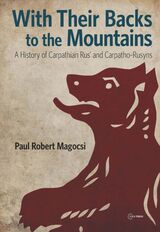 With Their Backs to the Mountains: A History of Carpathian Rus' and Carpatho-Rusyns
Paul Robert Magocsi
Central European University Press, 2016 This is a history of a stateless people, the Carpatho-Rusyns, and their historic homeland, Carpathian Rus’, located in the heart of central Europe. A little over 100,000 Carpatho-Rusyns are registered in official censuses but their population is estimated at around 1,000,000, the greater part in Ukraine and Slovakia. The majority of the diaspora—nearly 600,000—lives in the US. At the present, when it is fashionable to speak of nationalities as “imagined communities” created by intellectuals or elites who may live in the historic homeland, Carpatho-Rusyns provide an ideal example of a people made—or some would say still being made—before our very eyes. The book traces the evolution of Carpathian Rus’ from earliest prehistoric times to the present, and the complex manner in which a distinct Carpatho-Rusyn people, since the mid-nineteenth century, came into being, disappeared, and then re-appeared in the wake of the revolutions of 1989 and the collapse of communist rule in central and eastern Europe. To help guide the reader further there are 34 detailed maps plus an annotated discussion of relevant books, chapters, and journal articles.
With This Night
By Leah Goldberg
University of Texas Press, 2011 When she arrived in Palestine in 1935 at the age of twenty-four, Leah Goldberg was already known as a significant emerging poet in contemporary Hebrew literature. Today, mention of her name is apt to evoke a nostalgic sigh among Israelis who have grown up hearing her poems read, quoted, recollected, and—having been set to some four hundred melodies—sung on the radio. In the wake of overwhelming new attention on Goldberg's work in Israel, With This Night makes available for the first time in English the final collection of poetry that Goldberg published during her lifetime.
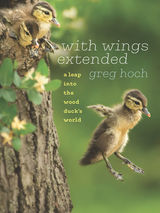 With Wings Extended: A Leap into the Wood Duck's World
Greg Hoch
University of Iowa Press, 2020 A century ago, many people had given up on the wood duck, dooming it to extinction along with the passenger pigeon and Carolina parakeet. Today, it’s one of the most familiar and most harvested ducks in the eastern half of the country, and one of America’s great conservation success stories. In With Wings Extended, Minnesota conservationist Greg Hoch introduces readers to a duck they probably recognize but may not know well. This book shows how almost anyone can get involved in conservation and do something for wildlife beyond writing checks to conservation organizations. Hoch illustrates the complexities of wildlife and habitat management that landowners as well as state and federal wildlife agencies deal with on a daily basis, and takes readers through the life stages of what is largely considered the most beautiful duck in the world. In this fascinating and practical read, Hoch blends the historical literature about the species with modern science, and also shows how our views of conservation have changed over the last century.
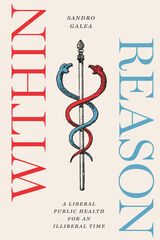 Within Reason: A Liberal Public Health for an Illiberal Time
Sandro Galea
University of Chicago Press, 2023 A provocative chronicle of how US public health has strayed from its liberal roots. The Covid-19 response was a crucible of politics and public health—a volatile combination that produced predictably bad results. As scientific expertise became entangled with political motivations, the public-health establishment found itself mired in political encampment. It was, as Sandro Galea argues, a crisis of liberalism: a retreat from the principles of free speech, open debate, and the pursuit of knowledge through reasoned inquiry that should inform the work of public health. Across fifty essays, Within Reason chronicles how public health became enmeshed in the insidious social trends that accelerated under Covid-19. Galea challenges this intellectual drift towards intolerance and absolutism while showing how similar regressions from reason undermined social progress during earlier eras. Within Reason builds an incisive case for a return to critical, open inquiry as a guiding principle for the future public health we want—and a future we must work to protect.
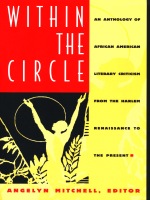 Within the Circle: An Anthology of African American Literary Criticism from the Harlem Renaissance to the Present
Angelyn Mitchell
Duke University Press, 1994 Within the Circle is the first anthology to present the entire spectrum of twentieth-century African American literary and cultural criticism. It begins with the Harlem Renaissance, continues through civil rights, the Black Arts Movement, and on into contemporary debates of poststructuralist and black feminist theory. Drawing on a quote from Frederick Douglass for the title of this book, Angelyn Mitchell explains in her introduction the importance for those "within the circle" of African American literature to examine their own works and to engage this critical canon. The essays in this collection—many of which are not widely available today—either initiated or gave critical definition to specific periods or movements of African American literature. They address issues such as integration, separatism, political action, black nationalism, Afrocentricity, black feminism, as well as the role of art, the artist, the critic, and the audience. With selections from Langston Hughes, Sterling Brown, W. E. B. DuBois, Zora Neale Hurston, Richard Wright, James Baldwin, Toni Morrison, Barbara Smith, Alice Walker, Henry Louis Gates, Jr., and many others, this definitive collection provides a dynamic model of the cultural, ideological, historical, and aesthetic considerations in African American literature and literary criticism. A major contribution to the study of African American literature, this volume will serve as a foundation for future work by students and scholars. Its importance will be recognized by all those interested in modern literary theory as well as general readers concerned with the African American experience. Selections by (partial list): Houston A. Baker, Jr., James Baldwin, Sterling Brown, Barbara Christian, W. E. B. DuBois, Ralph Ellison, LeRoi Jones, Sarah Webster Fabio, Henry Louis Gates, Jr., W. Lawrence Hogue, Langston Hughes, Zora Neale Hurston, Alain Locke, Deborah E. McDowell, Toni Morrison, J. Saunders Redding, George Schuyler, Barbara Smith, Valerie Smith, Hortense J. Spillers, Robert B. Stepto, Alice Walker, Margaret Walker, Mary Helen Washington, Richard Wright
Within the Lighted City
Lisa Lenzo
University of Iowa Press, 1997 Lisa Lenzo's stories explore what happens when safe boundaries are crossed. Often impetuous or unintentional, these crossings-over are never taken with full knowledge—characters step or glide or slip into trouble, and occasionally they hold still as danger overtakes them. The result is the loss of lives, limbs, or simply the illusion of safety. Yet despite their trials, the characters in these stories come away with a sense of hope for what remains. All of the characters in Within the Lighted City are Detroiters or former Detroiters, including a near-albino teenager, an angel, and the Zito family—Ralph and Rosie and their children, who first appear in the collection during the '67 riots. Their stories of confrontation, loss, love, humor, and joy are, in the words of Stuart Dybek, “unsentimental in their honesty and at the same time powerfully empathetic.” They are also beautifully told.
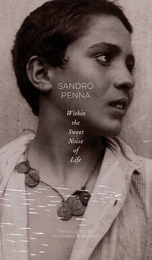 Within the Sweet Noise of Life: Selected Poems
Sandro Penna
Seagull Books, 2020 Widely considered to be among the most important Italian poets of the twentieth century, Sandro Penna was born and raised in Perugia but spent most of his life in Rome. Openly gay, Penna wrote verses celebrating homosexual love with lyrical elegance. His writing alternates between whimsy and melancholia, but it is always full of light.
Juggling traditional Italian prosody and subject matter with their gritty urban opposites in taut, highly concentrated poems, Penna’s lyrics revel in love and the eruption of Eros together with the extraordinary that can be found within simple everyday life. There is something ancient in Penna’s poetry, and something Etruscan or Greek about the poems, though the landscape is most often of Rome: sensual yet severe, sinuous yet solid, inscrutable, intangible, and languorous, with a Sphinx-like and sun-soaked smile. Penna’s city is eternal—a mythically decadent Rome that brings to mind Paris or Alexandria. And though the echoes resound—from Rimbaud, Verlaine, and Baudelaire to Leopardi, D’Annunzio, and Cavafy—the voice is always undeniably and wonderfully Penna’s own.
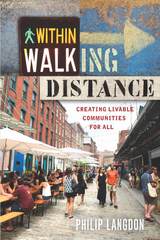 Within Walking Distance: Creating Livable Communities for All
Philip Langdon
Island Press, 2017 For five thousand years, human settlements were nearly always compact places. Everything a person needed on a regular basis lay within walking distance. But then the great project of the twentieth century—sorting people, businesses, and activities into separate zones, scattered across vast metropolises—took hold, exacting its toll on human health, natural resources, and the climate. Living where things were beyond walking distance ultimately became, for many people, a recipe for frustration. As a result, many Americans have begun seeking compact, walkable communities or looking for ways to make their current neighborhood better connected, more self-sufficient, and more pleasurable.
In Within Walking Distance, journalist and urban critic Philip Langdon looks at why and how Americans are shifting toward a more human-scale way of building and living. He shows how people are creating, improving, and caring for walkable communities. There is no one-size-fits-all approach. Starting conditions differ radically, as do the attitudes and interests of residents. To draw the most important lessons, Langdon spent time in six communities that differ in size, history, wealth, diversity, and education, yet share crucial traits: compactness, a mix of uses and activities, and human scale. The six are Center City Philadelphia; the East Rock section of New Haven, Connecticut; Brattleboro, Vermont; the Little Village section of Chicago; the Pearl District in Portland, Oregon; and the Cotton District in Starkville, Mississippi. In these communities, Langdon examines safe, comfortable streets; sociable sidewalks; how buildings connect to the public realm; bicycling; public transportation; and incorporation of nature and parks into city or town life. In all these varied settings, he pays special attention to a vital ingredient: local commitment.
To improve conditions and opportunities for everyone, Langdon argues that places where the best of life is within walking distance ought to be at the core of our thinking. This book is for anyone who wants to understand what can be done to build, rebuild, or improve a community while retaining the things that make it distinctive.
Within, Without: On Two Cities
Ilya Kaminsky and Piotr Florczyk
Seagull Books, 2026 Brings together two intimate, reflective essays by two acclaimed poets, Ilya Kaminsky and Piotr Florczyck, as they revisit their hometowns of Odesa and Kraków, exploring the complexities of return, memory, and identity.
Within, Without: On Two Cities presents two essays by Eastern European–born poets and translators, Ilya Kaminsky and Piotr Florczyk, now based in the United States. Revisiting their respective hometowns—Odesa and Kraków—they grapple with questions of history, identity, and belonging. What does it mean for an immigrant or refugee to return? Can one ever truly go back to a homeland that has since been transformed? Kaminsky and Florczyk chart a path forward by embracing the complexities of their transnational and translingual identities, as artists and as human beings.
Without a Stitch in Time: A Selection of the Best Humorous Short Pieces
Peter De Vries
University of Chicago Press, 1972 Harking from the golden age of fiction set in American suburbia—the school of John Updike and Cheever—this work from the great American humorist Peter De Vries looks with laughter upon its lawns, its cocktails, and its slightly unreal feeling of comfort. Without a Stitch in Time, a selection of forty-six articles and stories written for the New Yorker between 1943 and 1973, offers pun-filled autobiographical vignettes that reveal the source of De Vries’s nervous wit: the cognitive dissonance between his Calvinist upbringing in 1920s Chicago and the all-too-perfect postwar world. Noted as much for his verbal fluidity and wordplay as for his ability to see humor through pain, De Vries will delight both new readers and old in this uproarious modern masterpiece.
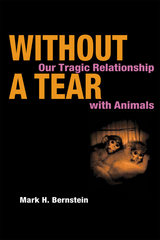 Without a Tear: Our Tragic Relationship with Animals
Mark H. Bernstein
University of Illinois Press, 2004 In Without a Tear Mark H. Bernstein begins with one of our most common and cherished moral beliefs: that it is wrong to intentionally and gratuitously inflict harm on the innocent. Over the course of the book, he shows how this apparently innocuous commitment requires that we drastically revise many of our most common practices involving nonhuman animals.
Most people who write about our ethical obligations concerning animals base their arguments on emotional appeals or contentious philosophical assumptions; Bernstein, however, argues from reasons but carries little theoretical baggage. He considers the issues in a religious context, where he finds that Judaism in particular has the resources to ground moral obligations to animals. Without a Tear also makes novel use of feminist ethics to add to the case for drawing animals more closely into our ethical world.
Bernstein details the realities of factory farms, animal-based research, and hunting fields, and contrasting these chilling facts with our moral imperatives clearly shows the need for fundamental changes to some of our most basic animal institutions. The tightly argued, provocative claims in Without a Tear will be an eye-opening experience for animal lovers, scholars, and people of good faith everywhere.
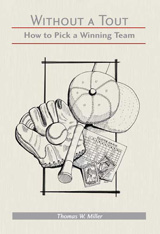 Without a Tout: How to Pick a Winning Team
Miller, Thomas W.
Research Publishers, 2008 Without a Tout is a practical, no-nonsense guide to building models for team sports. Making predictive models accessible to the nontechnical reader, the book describes a class of handicapping methods based upon careful analysis of sports data and thorough testing of model performance.
There is recreational betting---this can be fun. There is betting out of necessity or perceived necessity, induced perhaps by poverty or addiction---this is sad. And there is rational betting---betting when it makes sense to do so---this is a test of wit. Without a Tout is about betting when it it makes sense to do so, when the odds are in our favor. Data-driven models presented in this book show us when the odds are in our favor.
Applications of models and good modeling practice go well beyond the world of sports. They have relevance to any competitive arena. We can predict which product will be chosen, what consumers are willing to pay, or which firm will win in the marketplace. As long as there are relevant data from the past and ways of keeping score, we can use models to our advantage.
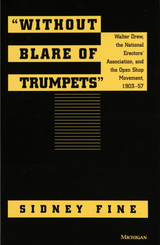 "Without Blare of Trumpets": Walter Drew, The National Erectors' Association, and the Open Shop Movement, 1903-1957
Sidney Fine
University of Michigan Press, 1995 "Without Blare of Trumpets" provides a fresh look at the twentieth-century open shop movement. It reveals the central role played in that movement by the National Erectors' Association and by its commissioner, Walter Drew. Fine presents an absorbing account of the union-organized dynamiting campaign and illuminates the critical behind-the-scenes part played by Drew in one of the greatest labor trials in all of American history. This important book adds to our understanding of the building and construction industry employer resistance to unionism, the role of the government in industrial relations, and the impact of the New Deal labor-management relations. "Without Blare of Trumpets" makes a major contribution to the fields of labor history, business history, and industrial relations. It will be of interest to students and scholars in many areas of American history, and to all those interested in the welfare of American jobs and American workers. Sidney Fine is Andrew Dickson White Distinguished Professor of History at the University of Michigan, and the author of numerous books and articles.
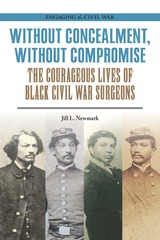 Without Concealment, Without Compromise: The Courageous Lives of Black Civil War Surgeons
Jill L. Newmark
Southern Illinois University Press, 2023 Advancing the cause of racial equality while saving lives
Of some twelve thousand Union Civil War surgeons, only fourteen were Black men. This book is the first-ever comprehensive exploration of their lives and service. Jill L. Newmark’s outstanding research uncovers stories hidden for more than 150 years, illuminating the unique experiences of proud, patriotic men who fought racism and discrimination to attend medical school and serve with the U.S. military. Their efforts and actions influenced societal change and forged new pathways for African Americans.
Individual biographies bring to light Alexander T. Augusta, who challenged discriminatory laws; William P. Powell Jr., who pursued a military pension for twenty-five years; Anderson R. Abbott, a friend of Elizabeth Keckley’s; John van Surly DeGrasse, the only Black surgeon to serve on the battlefield; John H. Rapier Jr., an international traveler; Richard H. Greene, the only Black surgeon known to have served in the Navy; Willis R. Revels, a preacher; Benjamin A. Boseman, a politician and postmaster; and Charles B. Purvis, who taught at Howard University. Information was limited for five other men, all of whom broke educational barriers by attending medical schools in the United States: Cortlandt Van Rensselaer Creed, William B. Ellis, Alpheus W. Tucker, Joseph Dennis Harris, and Charles H. Taylor.
Newmark presents all available information about the surgeons’ early lives, influences, education, Civil War service, and post-war experiences. Many of the stories overlap, as did the lives of the men. Each man, through his service as a surgeon during the war and his lifelong activism for freedom, justice, and equality, became a catalyst of change and a symbol of an emancipated future.
 Without Empathy: Irony and the Satirical Impulse in Eight Major Filmmakers
MK Raghavendra
Intellect Books, 2025 From apparent melodrama and eroticism to fantasy and horror, these eight directors redefine satire’s limits, providing evidence that irony in cinema often goes unrecognized.
In Without Empathy, MK Raghavendra investigates how irony and satire function in cinema by focusing on the work of eight visionary directors—Luis Buñuel, R.W. Fassbinder, Stanley Kubrick, Robert Altman, Paul Verhoeven, Aki Kaurismäki, Aleksei Balabanov, and David Lynch. At a time when irony is increasingly scrutinized as a mode of expression, this book reconsiders its role in film, revealing how these auteurs deploy wit and subversion in ways that unsettle audience expectations.
Through close readings of selected works, Raghavendra identifies layers of meaning beneath the surface of films often misread. The book situates these directors within broader traditions of cinematic satire, while simultaneously interrogating what their work has to say about society, culture, and human folly. Without Empathy is a lucid read for scholars and students of film studies and communication, providing a provocative lens on how satirical intent is not always recognizable today and how its actual targets can make society uncomfortable.
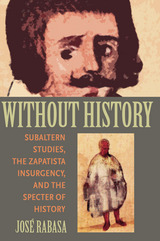 Without History: Subaltern Studies, the Zapatista Insurgency, and the Specter of History
Jose Rabasa
University of Pittsburgh Press, 2010 On December 22, 1997, forty-five unarmed members of the indigenous organization Las Abejas (The Bees) were massacred during a prayer meeting in the village of Acteal, Mexico. The members of Las Abejas, who are pacifists, pledged their support to the Zapatista Army of National Liberation, a primarily indigenous group that has declared war on the state of Mexico. The massacre has been attributed to a paramilitary group composed of ordinary citizens acting on their own, although eyewitnesses claim the attack was planned ahead of time and that the Mexican government was complicit.
In Without History, José Rabasa contrasts indigenous accounts of the Acteal massacre and other events with state attempts to frame the past, control subaltern populations, and legitimatize its own authority. Rabasa offers new interpretations of the meaning of history from indigenous perspectives and develops the concept of a communal temporality that is not limited by time, but rather exists within the individual, community, and culture as a living knowledge that links both past and present.
Due to a disconnection between indigenous and state accounts as well as the lack of archival materials (many of which were destroyed by missionaries), the indigenous remain outside of, or without, history, according to most of Western discourse. The continued practice of redefining native history perpetuates the subalternization of that history, and maintains the specter of fabrication over reality.
Rabasa recalls the works of Marx, Lenin, and Gramsci, as well as contemporary south Asian subalternists Ranajit Guha and Dipesh Chakrabarty, among others. He incorporates their conceptions of communality, insurgency, resistance to hegemonic governments, and the creation of autonomous spaces as strategies employed by indigenous groups around the globe, but goes further in defining these strategies as millennial and deeply rooted in Mesoamerican antiquity. For Rabasa, these methods and the continuum of ancient indigenous consciousness are evidenced in present day events such as the Zapatista insurrection.
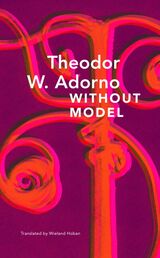 Without Model: Parva Aesthetica
Theodor W. Adorno
Seagull Books, 2023 Essays by Adorno on art and cinema, available in English for the first time.
In Without Model, Theodor W. Adorno strikingly demonstrates the intellectual range for which he is known. Taking the premise of the title as his guiding principle, that artistic and philosophical thought must eschew preconceptions and instead adapt itself to its time, circumstances, and object, Adorno presents a series of essays reflecting on culture at different levels, from the details of individual products to the social conditions of their production. He shows his more nostalgic side in the childhood reminiscences of ‘Amorbach’, but also his acute sociocultural analysis on the central topic of the culture industry. He criticizes attempts to maintain tradition in music and visual art, arguing against a restorative approach by stressing the modernity and individuality of historical works in the context of their time. In all of these essays, available for the first time in English, Adorno displays the remarkable thinking of one both steeped in tradition and dedicated to seeing beyond it.
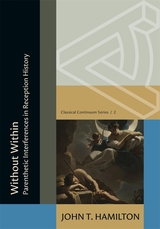 Without Within: Parenthetic Interferences in Reception History
John T. Hamilton
Harvard University Press, 2025 Classical reception has always implied a parenthetical relationship insofar as Antiquity appears to be inserted into (en) while remaining alongside (para) Modernity. As in any parenthetical statement, the ancient source can be said to be a part of and apart from modern revisions and reworkings, recontextualizations and reorientations, belonging to a present discourse by maintaining its status beyond it. Through this rhetorical figure, Without Within broaches fresh questions and offers new lines of inquiry in the ever-growing and disparate field of Reception Studies, a field that itself continues to occupy an intriguingly ambivalent position within Classical Studies overall: simultaneously inside and outside, profane and sacred, an included exclusion.
As Quintilian defines it, a parenthesis is a figure of thought (figura sententiae) that occurs “when some thought in the middle interrupts [intervenit] the continuation of a discourse” (Inst. orat. 9, 3.23). In modern typography, this interruption or intervention is generally marked by brackets which introduce a further element of difference or heteronomy vis-à-vis the body of the text. As for specific cases of classical reception, a contrast is thereby staged between the essence of the ancient material and its modern purpose, between the what-is and the what-for. By investigating a series of exemplary instances of reception across several epochs, languages, and cultures, Hamilton aims to delineate and assess the varying contours of Antiquity’s challenge to Modernity and vice versa. What strategies of inclusion and exclusion are operative, and how might they be evaluated? What are the theoretical implications of considering the received past as both external and internal to the present day? How might we qualify the disruption and/or relevance of the past in modern contexts?
The Witkiewicz Reader
Stanislaw Ignacy Witkiewicz
Northwestern University Press, 1992 Forgotten during the Stalin years, Stanislaw Witkiewicz (1885-1939) was rediscovered in his native Poland only after the liberalization of 1956, when his works came to play a major role in freeing the arts from socialist realism. This collection, the first anthology in English, presents Witkiewicz in the full range of his creative and intellectual activities. The Witkiewicz Reader includes excerpts from three novels; four complete plays; letters to Malinowski; and selections from aesthetic, social, and philosophical essays detailing Witkiewicz's theory of Pure Form, his metaphysical system, and his apocalyptic view of the fate of civilization.
 Witness and Existence: Essays in Honor of Schubert M. Ogden
Edited by Philip E. Devenish and George L. Goodwin
University of Chicago Press, 1989 For over thirty years Schubert Ogden has championed and exemplified a particular understanding of the task and content of Christian theology. The task of theology is to examine the meaning and truth of Christian faith in terms of human experience. All theological claims, therefore, are assessable by two criteria: their appropriateness to the normative Christian witness and their credibility in terms of human existence. The content of Christian theology may be accurately and succinctly stated in two words: radical monotheism. The point of all theological doctrines, from christology to ethics, is to reflect on the gift and demand of God's love. It may be said, then, that Ogden's entire theological project consists in the attempt to show that radical monotheism, which is the essential point of the Christian witness, is also the inclusive end of human existence.
Witness and Existence pays tribute to Ogden by bringing together essays by eminent scholars in New Testament studies and philosophical theology, two fields which directly reflect his methodological concerns and his substantive contributions. The book honors Ogden precisely by engaging the fundamental issues which Ogden himself has taken so seriously.
The first group of essays presents careful analyses of issues basic to the early Christian witness; the second group examines the credibility of the Christian claim about God in terms of human experience. The editors' introductory essay provides the first comprehensive analysis yet to appear of Ogden's theology. A complete bibliography of his published writings is included as an appendix.
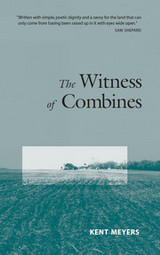 Witness Of Combines
Kent Meyers
University of Minnesota Press, 1998 An exciting new writer looks at rural life and coming of age. When Kent Meyers was sixteen years old, his father died of a stroke. There was corn to plant, cattle to feed, and a farm to maintain. Here, in a fresh and vibrant voice, Meyers recounts the wake of his father’s death and reflects on families, farms, and rural life in the Midwest. Meyers tells the story of growing up on the farm, from the joys of playing in the hayloft as a boy to the steady pattern of chores. He describes the power of winter prairie winds, the excitement of building a fort in the woods, and the self-respect that comes from canning 120 quarts of tomatoes grown on your own land.Meyers’s father is the central figure around whom these memories revolve. After his father’s death, Meyers fills his shoes out of necessity and respect. In doing so, he discovers that his father was a great teacher and that he himself is no longer a boy but a man. Perhaps the most moving passages of The Witness of Combines acknowledge the simultaneous sadness and pride of growing up in response to death. Meyers recalls planting and harvesting the last crop, selling the family farm, and other emotional moments in a testament to his father, the family bond, and the value of hard work.Meyers’s perspective on life in the Midwest elegantly weaves daily farm life with his coming of age story, drawing readers from all walks of life into this brave and poignant work.“Meyers tells stories with precision and joy. He understands how the rhythms of the land bind farmers, give them hope and purpose.” Linda Hasselstrom, author of Land Circleside bar quote:“The Witness of Combines is written with simple, poetic dignity and a savvy for the land that can only come from having been raised up in it with eyes wide open.” Sam Shepard,author of Fool for LoveISBN 0-8166-3104-2 Paper $16.95248 pages 5 x 8 AugustTranslation inquiries: University of Minnesota Press
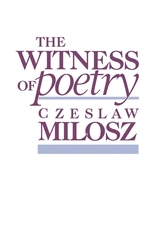 The Witness of Poetry
Czeslaw Milosz
Harvard University Press, 1983 “A classic for our time.”—Saturday Review
The Nobel Prize–winning writer on poetry as testimony to the upheavals of the twentieth century.
For many years, Polish émigré Czeslaw Milosz’s poetry was relatively unknown outside of Eastern Europe. While his 1953 anticommunist tract The Captive Mind had solidified his reputation as a political thinker in the West, his poems languished in obscurity, distributed mostly by underground Polish presses evading censorship from the communist regime. Only once he won the Nobel Prize in 1980 did his unique poetic voice—prophetic, ironic, sometimes bitter, but always hopeful—gain wider recognition, from both English-speaking audiences and the Polish government itself, which could no longer suppress the brilliant, irascible defector.
Collecting Milosz’s 1981–1982 Norton Lectures, The Witness of Poetry offers an unparalleled window into this heady moment in his career. Newly recognized as one of the great poets of his time, Milosz stages an ambitious defense of the need for poetry amid the ruins of a catastrophic twentieth century. Rather than reacting to the procession of world wars and totalitarian regimes by fleeing from reality into abstruse symbolism or “pure poetry,” Milosz argues that poetry must be “a passionate pursuit of the real.” Only then will poets liberate themselves from the cramped confines of a bohemian subculture and rejoin the “great human family.” And only then will poetry become “as essential as bread.”
Introducing Western audiences to a wide range of Polish voices, from Adam Mickiewicz and Wislawa Szymborska to Oscar Milosz, his distant cousin, Milosz’s lectures vividly reveal that Polish poetry remains a wellspring of “incorrigible hope,” not despite but because of Poland’s calamitous history.
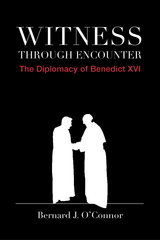 Witness through Encounter: The Diplomacy of Benedict XVI
Bernard J. O'Connor
St. Augustine's Press, 2019 Appealing to dialogue is often just a safe way of referring to something negative, or at best blandly neutral: the avoidance of conflict, the denial of similarity, not stirring deep-seated disagreement, etc. When Bernard o’Connor says pope Benedict XVI facilitated dialogue, however, he means something quite positive, very much tangible and certainly transformative. In providing an account of the pope’s interactions with various groups of the international community, O’Connor attempts to convey Benedict XVI’s diplomacy as encounter, where even in the sphere of international relations exhortations to “dialogue” are invitations to see more clearly and be moved as much as move.
To dialogue is to embrace, revise perception such that our approaches to the great questions of our day are not simply shared but correct. As O’Connor writes, “Pope Benedict attempts to promote the outlook that a renewed emphasis upon objective, critical and structured philosophical reasoning positions practice, diplomatic and otherwise, to regain its lost foundation and framework. the quest for integrity, if nothing else, should motivate our fidelity to academic pursuit, to intellectual investigation, and to rigorous interdisciplinary inquiry. so influenced, practice will then reject what is arbitrary and be guided by what is time-tested and enduring.” O’Connor illustrates true dialogue emerging from the encounter, and in turn provides scores of characteristics of this encounter as it unfolds in papal diplomacy. In providing scores of addresses and speeches to various bodies, O’Connor presents pope Benedict XVI as an example of effective diplomacy that treats the meetings on the world stage as engaging in true dialogue. encounter is the true basis of dialogue and one that allows it to open to what is truly a catalyst for change toward cooperation––witness, both personal and collective. As o’Connor shows, “where there is authentic encounter, as meeting in mutual trust, what arises is context for witness.” If authentic even the diplomatic encounter has the means to deepen and transform one’s being. Witness Through Encounter intends to fulfill multiple needs. the diplomatic approach exemplified herein is singular and worthy of study among political scientists, sociologists, philosophers and diplomats eager to embrace a worldview that is more personal than simply humanistic. this work will also be useful in inter-religious settings. An additional advantage of O’Connor’s presentation of Benedict XVI’s diplomatic approach, his witness through encounter, is that it contains insight valuable to the scholar alongside the resources used.
 A Witness to the Silent Church: Memoirs of Ukrainian Cardinal Josyf Slipyj
Josef Slipyj
Catholic University of America Press, 2025 A Witness of the Silent Church is a first-hand personal witness to the life of one of the outstanding religious leaders in the Catholic Church and the confessor of faith. It presents the autobiography of Cardinal Josyf Slipyj (1892-1984), who served as a head of the Ukrainian Greek-Catholic Church in the period of the Soviet regime (1944-1984) and led his Church through the difficult period of catacombs and persecutions.
This memoir traces the trajectory and main events of Slipyj’s life and sheds light on his personality and inner world of his thoughts and intentions. They cover his childhood and formation period, his pastoral and scholarly ministry in the Church, as well as his suffering in prisons, camps, and exile until his liberation in 1963. Slipyj’s life story appears as a backdrop where the entire epoch unfolds. The reader can observe the religious life of Western Ukraine against the background of the complex religious, political and social developments of the twentieth century, the martyrology and underground activity of the Greek Catholics during the period of Church persecution, the dire fate of the clergy, faithful, and cultural and political leaders in the Soviet time.
A Witness of the Silent Church is supplied with extensive commentaries and annotations that provide important insights into the religious life of Ukraine of this period. The introduction to Slipyj’s autobiography presents the complicated textual history of the manuscript, its historical value and prepares a reader for the historically-contextualized reading of these memoirs. Slipyj’s autobiography is supplemented with the two studies, which complete Slipyj’s unfinished narrative, elucidating the circumstances of Slipyj’s release from the Gulag and his activity in Rome during the last twenty years of his life (1963-1984) as well as the events following his death: such as Slipyj’s rehabilitation and the glorious return of his relics to the homeland. The book includes appendices with valuable historical documents related to the activity of Cardinal Josyf Slipyj as a witness of the silent Church of the martyrs.
This book is intended for scholars, church historians, and all readers interested in the history of Catholic Church, Christian testimony of faith and the biographies of twentieth-century martyrs and confessors.
Witness, Warning, and Prophecy: Quaker Women's Writing, 1655-1700
Edited by Teresa Feroli and Margaret Olofson Thickstun
Iter Press, 2018 The forty texts collected in this volume offer a small but representative sample of Quaker women’s tremendous literary output between 1655 and 1700. They include examples of key Quaker literary genres — proclamations, directives, warnings, sufferings, testimonies, polemic, pleas for toleration — and showcase a range of literary styles and voices, from eloquent poetry to legal analyses of English canon and civil law. In their varied responses to the core Quaker belief in the indwelling Spirit, these women left a rich literary legacy of an early countercultural movement.
The Other Voice in Early Modern Europe - The Toronto Series: Volume 60
Witnesses to the Struggle: Imaging the 1930s California Labor Movement
Anne Loftis
University of Nevada Press, 2014 A study of the artistic and literary responses to the Depression-era labor crises of the Golden State. Anne Loftis focuses on the work and activities of John Steinbeck, Carey McWilliams, Paul Taylor, and Dorothea Lange, who brought the story of California's labor struggles to the rest of the country. The realism and documentary expression of their art grew out of their personal involvement in the problems of society, and Loftis explores the lasting influence of their work. One of Steinbeck's unintended legacies was his treatment of California farm workers as victims—the simple pawns of larger forces. In her balanced and intriguing study Loftis reveals that the workers were not victims, but rather the strong and resourceful creators of their own histories.
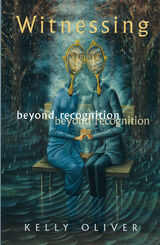 Witnessing: Beyond Recognition
Kelly Oliver
University of Minnesota Press, 2001 A new, ethically based theory of identity by a major scholar. Challenging the fundamental tenet of the multicultural movement-that social struggles turning upon race, gender, and sexuality are struggles for recognition-this work offers a powerful critique of current conceptions of identity and subjectivity based on Hegelian notions of recognition. The author’s critical engagement with major texts of contemporary philosophy prepares the way for a highly original conception of ethics based on witnessing. Central to this project is Oliver’s contention that the demand for recognition is a symptom of the pathology of oppression that perpetuates subject-object and same-different hierarchies. While theorists across the disciplines of the humanities and social sciences focus their research on multiculturalism around the struggle for recognition, Oliver argues that the actual texts and survivors’ accounts from the aftermath of the Holocaust and slavery are testimonials to a pathos that is “beyond recognition.” Oliver traces many of the problems with the recognition model of subjective identity to a particular notion of vision presupposed in theories of recognition and misrecognition. Contesting the idea of an objectifying gaze, she reformulates vision as a loving look that facilitates connection rather than necessitates alienation. As an alternative, Oliver develops a theory of witnessing subjectivity. She suggests that the notion of witnessing, with its double meaning as either eyewitness or bearing witness to the unseen, is more promising than recognition for describing the onset and sustenance of subjectivity. Subjectivity is born out of and sustained by the process of witnessing-the possibility of address and response-which puts ethical obligations at its heart.
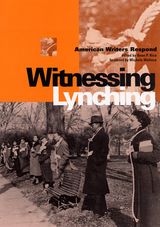 Witnessing Lynching: American Writers Respond
Edited by Anne P. Rice
Rutgers University Press, 2003 Witnessing Lynching: American Writers Respond is the first anthology to gather poetry, essays, drama, and fiction from the height of the lynching era (1889–1935). During this time, the torture of a black person drew thousands of local onlookers and was replayed throughout the nation in lurid newspaper reports. The selections gathered here represent the courageous efforts of American writers to witness the trauma of lynching and to expose the truth about this uniquely American atrocity. Included are well-known authors and activists such as Frederick Douglass, W.E.B. Du Bois, Langston Hughes, Ida B. Wells, and Theodore Dreiser, as well as many others. These writers respond to lynching in many different ways, using literature to protest and educate, to create a space of mourning in which to commemorate and rehumanize the dead, and as a cathartic release for personal and collective trauma. Their words provide today’s reader with a chance to witness lynching and better understand the current state of race relations in America.
An introduction by Anne P. Rice offers a broad historical and thematic framework to ground the selections.
Witnessing Slavery: The Development Of Ante-Bellum Slave Narratives
Frances Smith Foster
University of Wisconsin Press, 1994 Frances Foster's classic study of pre-Civil War American slave autobiography is now issued in an accessible paperback edition. The first book to represent these slave narratives as literary in the complete sense of the word, and the first study to call attention to the significance of gender in the narratives, Witnessing Slavery will be welcomed by both general readers and students of the American south, slavery, the Civil War, and race issues.
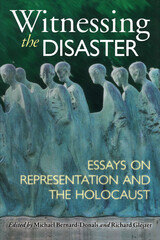 Witnessing the Disaster: Essays on Representation and the Holocaust
Edited by Michael Bernard-Donals and Richard Glejzer
University of Wisconsin Press, 2003 Witnessing the Disaster examines how histories, films, stories and novels, memorials and museums, and survivor testimonies involve problems of witnessing: how do those who survived, and those who lived long after the Holocaust, make clear to us what happened? How can we distinguish between more and less authentic accounts? Are histories more adequate descriptors of the horror than narrative? Does the susceptibility of survivor accounts to faulty memory and the vestiges of trauma make them any more or less useful as instruments of witness? And how do we authenticate their accuracy without giving those who deny the Holocaust a small but dangerous foothold?
These essayists aim to move past the notion that the Holocaust as an event defies representation. They look at specific cases of Holocaust representation and consider their effect, their structure, their authenticity, and the kind of knowledge they produce. Taken together they consider the tension between history and memory, the vexed problem of eyewitness testimony and its status as evidence, and the ethical imperatives of Holocaust representation.
 Witold Gombrowicz’s Century, Volume 34
Tom Sellar
Duke University Press Susan Sontag has described the work of playwright and novelist Witold Gombrowicz (1904–1969) as "sublime mockery," humorously depicting the aspirations and contradictions of his native Poland's tumultuous entrance into modernity. As part of the worldwide centenary celebration of the author, this special issue of Theater reassesses his place in the American and international repertory. Witold Gombrowicz's Century includes overviews of Gombrowicz scholarship and production histories by Allen J. Kuharski and Vincent Giroud, a photo-essay of famous directors' approaches to his plays, Michael Hackett and Anna Krajewska-Wieczorek's adaptation of Gombrowicz's short story about cannibalistic aristocrats, commentary with Polish director Anna Augustynowicz, and the writer's previously unpublished correspondence with Luc Bondy and Luca Ronconi. The issue also features excerpts from the forthcoming edition of Gombrowicz's Memoirs, never before published in English, and is illustrated with personal and theatrical photos from Yale's Beinecke Library of Rare Books and Manuscripts.
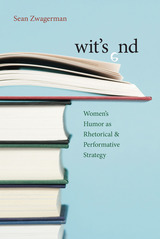 Wit's End: Women’s Humor as Rhetorical and Performative Strategy
Sean Zwagerman
University of Pittsburgh Press, 2010 In Wit’s End, Sean Zwagerman offers an original perspective on women’s use of humor as a performative strategy as seen in works of twentieth-century American literature. He argues that women whose direct, explicit performative speech has been traditionally denied, or not taken seriously, have often turned to humor as a means of communicating with men.
The book examines both the potential and limits of women’s humor as a rhetorical strategy in the writings of James Thurber, Zora Neale Hurston, Dorothy Parker, Edward Albee, Louise Erdrich, and others. For Zwagerman, these texts “talk back” to important arguments in humor studies and speech-act theory. He deconstructs the use of humor in select passages by employing the theories of J. L. Austin, John Searle, Jacques Derrida, Shoshana Felman, J. Hillis Miller, and Eve Kosofsky Sedgwick. Zwagerman offers arguments both for and against these approaches while advancing new thinking on humor as the “end”—both the goal and limit—of performative strategy, and as a means of expressing a full range of serious purposes.
Zwagerman contends that women’s humor is not solely a subversive act, but instead it should be viewed in the total speech situation through context, motives, and intended audience. Not strictly a transgressive influence, women’s humor is seen as both a social corrective and a reinforcement of established ideologies. Humor has become an epistemology, an “attitude” or slant on one’s relation to society.
Zwagerman seeks to broaden the scope of performativity theory beyond the logical pragmatism of deconstruction and looks to the use of humor in literature as a deliberate stylization of experiences found in real-world social structures, and as a tool for change.
 Wittgenstein & Critical Theory: Beyond Postmodern Criticism and Toward Descriptive Investigations
Susan B. Brill
Ohio University Press, 1994 The crucial point of Brill’s study is that of fit: which critical methods prove most useful towards opening up which texts? Close investigations into the parameters of the language games of texts, critics, and methods enable us to determine which paths to take towards more complete descriptive analyses and critique. Such an emphasis on the philosophical method of Ludwig Wittgenstein reorients literary criticism to involve a conjoint responsibility to both reader and text as the literary critic assumes the humbler role of a guide who assists a reader in/to diverse literary texts. Wittgenstein’s philosophical approach provides us with a strong means of developing such a method for literary criticism—a method that points the way forward beyond postmodern criticisms and to a categorically new approach to literary texts.
Brill’s work discusses at length the implications of Wittgenstein for literary criticism and theory. The volume specifically investigates the implications of Wittgenstein’s work for a number of contemporary critical orientations (notably poststructualism, feminism, and psychology). In addition, the research includes actual applications of Wittgenstein for literary criticism: diverse literary texts (including a number of poems and stories by Native American authors) are approached via a Wittgensteinian method as a means of discerning which critical approaches might be more or less efficacious. Not only does the book provide a solid introduction to Wittgensteinian philosophy for the critical scholars, but it also provides a clear methodology useful to critics seeking a means to navigate through the entanglement of contemporary criticism and theory.
Brill argues that a reliance upon the philosophy of Ludwig Wittgenstein can enable literary critics to escape the seemingly endless dialectic between modern and postmodern theory. Instead of debating which theory is theoretically best, we need to describe when theories work—and when they do not.
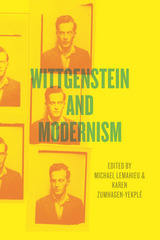 Wittgenstein and Modernism
Edited by Michael LeMahieu and Karen Zumhagen-Yekplé
University of Chicago Press, 2016 Ludwig Wittgenstein famously declared that philosophy “ought really to be written only as a form of poetry,” and he even described the Tractatus as “philosophical and, at the same time, literary.” But few books have really followed up on these claims, and fewer still have focused on their relation to the special literary and artistic period in which Wittgenstein worked. This book offers the first collection to address the rich, vexed, and often contradictory relationship between modernism—the twentieth century’s predominant cultural and artistic movement—and Wittgenstein, one of its preeminent and most enduring philosophers. In doing so it offers rich new understandings of both.
Michael LeMahieu Karen Zumhagen-Yekplé bring together scholars in both twentieth-century philosophy and modern literary studies to put Wittgenstein into dialogue with some of modernism’s most iconic figures, including Samuel Beckett, Saul Bellow, Walter Benjamin, Henry James, James Joyce, Franz Kafka, Adolf Loos, Robert Musil, Wallace Stevens, and Virginia Woolf. The contributors touch on two important aspects of Wittgenstein’s work and modernism itself: form and medium. They discuss issues ranging from Wittgenstein and poetics to his use of numbered propositions in the Tractatus as a virtuoso performance of modernist form; from Wittgenstein’s persistence metaphoric use of religion, music, and photography to an exploration of how he and Henry James both negotiated the relationship between the aesthetic and the ethical.
Covering many other fascinating intersections of the philosopher and the arts, this book offers an important bridge across the disciplinary divides that have kept us from a fuller picture of both Wittgenstein and the larger intellectual and cultural movement of which he was a part.
Wittgenstein: The Senses of Use
Sandra Laugier
University of Chicago Press, 2025 A holistic introduction to Wittgenstein’s philosophy that approaches him as a philosopher of ordinary life.
One of philosopher Ludwig Wittgenstein’s most consequential claims was that the meaning of the word, its sense, is its use in language. This deceptively simple claim, the foundation of what became known as ordinary language philosophy, has animated thinkers across disciplinary bounds from metaphysics to ethics and more. In The Senses of Use, Sandra Laugier embarks on a fresh journey through Wittgenstein’s corpus that emphasizes the place of ordinary life and language in its thought. Through his Tractatus Logico-Philosophicus, Philosophical Investigations, and rich posthumously published works, Laugier offers a compelling new look at Wittgenstein as a philosopher of mind.
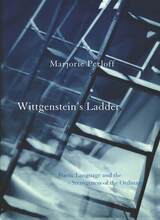 Wittgenstein's Ladder: Poetic Language and the Strangeness of the Ordinary
Marjorie Perloff
University of Chicago Press, 1996 Marjorie Perloff, among our foremost critics of twentieth-century poetry, argues that Ludwig Wittgenstein provided writers with a radical new aesthetic, a key to recognizing the inescapable strangeness of ordinary language. Taking seriously Wittgenstein's remark that "philosophy ought really to be written only as a form of poetry," Perloff begins by discussing Wittgenstein the "poet." What we learn is that the poetics of everyday life is anything but banal.
"This book has the lucidity and the intelligence we have come to expect from Marjorie Perloff.—Linda Munk, American Literature
"[Perloff] has brilliantly adapted Wittgenstein's conception of meaning and use to an analysis of contemporary language poetry."—Linda Voris, Boston Review
"Wittgenstein's Ladder offers significant insights into the current state of poetry, literature, and literary study. Perloff emphasizes the vitality of reading and thinking about poetry, and the absolute necessity of pushing against the boundaries that define and limit our worlds."—David Clippinger, Chicago Review
"Majorie Perloff has done more to illuminate our understanding of twentieth century poetic language than perhaps any other critic. . . . Entertaining, witty, and above all highly original."—Willard Bohn, Sub-Stance
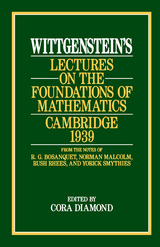 Wittgenstein's Lectures on the Foundations of Mathematics, Cambridge, 1939
Ludwig Wittgenstein
University of Chicago Press, 1989 For several terms at Cambridge in 1939, Ludwig Wittgenstein lectured on the philosophical foundations of mathematics. A lecture class taught by Wittgenstein, however, hardly resembled a lecture.
He sat on a chair in the middle of the room, with some of the class sitting in chairs, some on the floor. He never used notes. He paused frequently, sometimes for several minutes, while he puzzled out a problem. He often asked his listeners questions and reacted to their replies. Many meetings were largely conversation.
These lectures were attended by, among others, D. A. T. Gasking, J. N. Findlay, Stephen Toulmin, Alan Turing, G. H. von Wright, R. G. Bosanquet, Norman Malcolm, Rush Rhees, and Yorick Smythies. Notes taken by these last four are the basis for the thirty-one lectures in this book.
The lectures covered such topics as the nature of mathematics, the distinctions between mathematical and everyday languages, the truth of mathematical propositions, consistency and contradiction in formal systems, the logicism of Frege and Russell, Platonism, identity, negation, and necessary truth. The mathematical examples used are nearly always elementary.
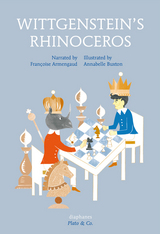 Wittgenstein's Rhinoceros
Françoise Armengaud
Diaphanes, 2016 At its most basic, philosophy is about learning how to think about the world around us. It should come as no surprise, then, that children make excellent philosophers! Naturally inquisitive, pint-size scholars need little prompting before being willing to consider life’s “big questions,” however strange or impractical. Plato & Co. introduces children—and curious grown-ups—to the lives and work of famous philosophers, from Descartes to Socrates, Einstein, Marx, and Wittgenstein. Each book in the series features an engaging—and often funny—story that presents basic tenets of philosophical thought alongside vibrant color illustrations.
“Mister Wittgenstein! Stop looking for a horned beast in the middle of a Cambridge classroom!,” an exasperated Bertrand Russell commands his pupil. But the young Ludwig Wittgenstein knows that, just because we don’t see a rhinoceros, doesn’t mean one may not be hiding where we least expect it. When war breaks out in Europe, Ludwig is recruited for a top-secret mission. Alas, no one is able to make sense of rhino-loving philosopher’s notebooks. What could he possibly mean by so many seemingly nonsensical statements?
Plato & Co.’s clear approach and charming illustrations make this series the perfect addition to any little library.
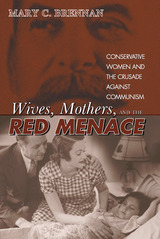 Wives, Mothers, and the Red Menace: Conservative Women and the Crusade against Communism
Mary Brennan
University Press of Colorado, 2008 In Wives, Mothers, and the Red Menace, Mary Brennan examines conservative women's anti-communist activism in the years immediately after World War II. Brennan details the actions and experiences of prominent anti-communists Jean Kerr McCarthy, Margaret Chase Smith, Freda Utley, Doloris Thauwald Bridges, Elizabeth Churchill Brown, and Phyllis Stewart Schlafly. She describes the Cold War context in which these women functioned and the ways in which women saw communism as a very real danger to domestic security and American families. Millions of women, Brennan notes, expanded their notions of household responsibilities to include the crusade against communism. From writing letters and hosting teas to publishing books and running for political office, they campaigned against communism and, incidentally, discovered the power they had to effect change through activism. Brennan reveals how the willingness of these deeply conservative women to leave the domestic sphere and engage publicly in politics evinces the depth of America's postwar fear of communism. She further argues that these conservative, anti-communist women pushed the boundaries of traditional gender roles and challenged assumptions about women as political players by entering political life to publicly promote their ideals.Wives, Mothers, and the Red Menace offers a fascinating analysis of gender and politics at a critical point in American history. Brennan's work will instigate discussions among historians, political scientists, and scholars of women's studies.
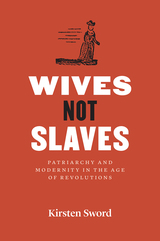 Wives Not Slaves: Patriarchy and Modernity in the Age of Revolutions
Kirsten Sword
University of Chicago Press, 2021 Wives not Slaves begins with the story of John and Eunice Davis, a colonial American couple who, in 1762, advertised their marital difficulties in the New Hampshire Gazette—a more common practice for the time and place than contemporary readers might think. John Davis began the exchange after Eunice left him, with a notice resembling the ads about runaway slaves and servants that were a common feature of eighteenth-century newspapers. John warned neighbors against “entertaining her or harbouring her. . . or giving her credit.” Eunice defiantly replied, “If I am your wife, I am not your slave.” With this pointed but problematic analogy, Eunice connected her individual challenge to her husband’s authority with the broader critiques of patriarchal power found in the politics, religion, and literature of the British Atlantic world.
Kirsten Sword’s richly researched history reconstructs the stories of wives who fled their husbands between the mid-seventeenth and early nineteenth centuries, comparing their plight with that of other runaway dependents. Wives not Slaves explores the links between local justice, the emerging press, and transatlantic political debates about marriage, slavery and imperial power. Sword traces the relationship between the distress of ordinary households, domestic unrest, and political unrest, shedding new light on the social changes imagined by eighteenth-century revolutionaries, and on the politics that determined which patriarchal forms and customs the new American nation would—and would not—abolish.
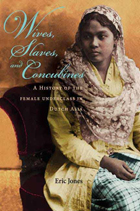 Wives, Slaves, and Concubines: A History of the Female Underclass in Dutch Asia
Eric Jones
Northern Illinois University Press, 2010
Wives, Slaves, and Concubines argues that Dutch colonial practices and law created a new set of social and economic divisions in Batavia-Jakarta, modern-day Indonesia, to deal with difficult realities in Southeast Asia. Jones uses compelling stories from ordinary Asian women to explore the profound structural changes occurring at the end of the early colonial period—changes that helped birth the modern world order. Based on previously untapped criminal proceedings and testimonies by women who appeared before the Dutch East India Company’s Court of Alderman, this fascinating study details the ways in which demographic and economic realities transformed the social and legal landscape of 18th-century Batavia-Jakarta.
Southeast Asian women played an inordinately important role in the functioning of the early modern Asia Trade and in the short- and long-term operations of the Dutch East India Company (VOC). Southeast Asia was a place where most individuals operated within an intricate web of multiple, fluid, situational, and reciprocal social relationships ranging from dependence to bondedness to slavery. The 18th century represents an important turning point: the relatively open and autonomous Asia Trade that prompted Columbus to set sail had begun to give way to an age of high imperialism and European economic hegemony. How did these changes affect life for ordinary women in early modern Dutch Asia, and how did the transformations wrought by Dutch colonialism alter their lives?
The VOC created a legal division that favored members of mixed VOC families, those in which Asian women married men employed by the VOC. Thus, employment—not race—became the path to legal preference, a factor that disadvantaged the rest of the Asian women. In short, colonialism created a new underclass in Asia, one that had a particularly female cast. By the latter half of the 18th century, an increasingly operational dichotomy of slave and free supplanted an otherwise fluid system of reciprocal bondedness. The inherent divisions of this new system engendered social friction, especially as the emergent early modern economic order demanded new, tractable forms of labor. Dutch domestic law gave power to female elites in Dutch Asia, but it left the majority of women vulnerable to the more privileged on both sides of this legal divide. Slaves fled and violence erupted when traditional expectations of social mobility collided with new demands from the masters and the state.
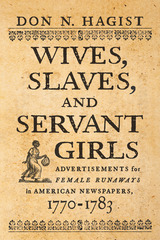 Wives, Slaves, and Servant Girls: Advertisements for Female Runaways in American Newspapers, 1770–1783
Don N. Hagist
Westholme Publishing, 2007 A Surprising Source of Information About a Largely Forgotten Segment of the Colonial Population
In an age when individuals could be owned by others, people were lost and found just like other property. Indentured servants and slaves absconded from the custody of their masters, and their value prompted the masters to seek their return. Wives ran from abusive husbands or into the arms of another. Newspapers in the eighteenth and nineteenth centuries carried large numbers of advertisements offering rewards for the return of runaways or announcing the detention of fugitives. Each ad provided a description of the individual and often included some circumstances of their elopement. The overall effectiveness of these advertisements cannot be measured, but the sheer number of ads suggests they were perceived as useful tools by those who placed them. What could not have been known at the time was the substantial contribution to history that these ads make. The descriptive advertisements provide textual snapshots of thousands of individuals who would otherwise be lost to history, people whose names might not otherwise be recorded. In Wives, Slaves, and Servant Girls: Advertisements for Female Runaways in American Newspapers, 1770–1783, historian Don N. Hagist focuses on the American Revolutionary period to provide a striking portrait of a substantial but largely forgotten segment of the population. Comprised of four hundred advertisements presented chronologically, the volume provides invaluable descriptions of women’s clothes, footwear, jewelry, physical appearances, education, nationalities, occupations, and other details.
The Wizard of Oz and Who He Was
Martin Gardner
Michigan State University Press, 1994 When Russel B. Nye and Martin Gardner teamed up to bring out a new edition of The Wonderful Wizard of Oz, theirs was the first critical analysis of L. Frank Baum American classic. The book opens with an essay by Nye, entitled "An Appreciation," which is an overview of Baum's creative and imaginative genius. Nye explores the reasons why earlier critics virtually ignored the Oz stories. Gardner, in his essay, "The Royal Historian of Oz," presents a brief biographical sketch, revealing little-known facts about this prolific writer. The volume also contains the complete, original text of the Wonderful Wizard of Oz, along with many original illustrations by artist W. W. Denslow.
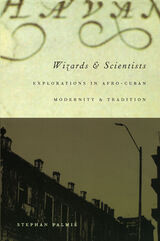 Wizards and Scientists: Explorations in Afro-Cuban Modernity and Tradition
Stephan Palmié
Duke University Press, 2002 In Wizards and Scientists Stephan Palmié offers a corrective to the existing historiography on the Caribbean. Focusing on developments in Afro-Cuban religious culture, he demonstrates that traditional Caribbean cultural practices are part and parcel of the same history that produced modernity and that both represent complexly interrelated hybrid formations. Palmié argues that the standard narrative trajectory from tradition to modernity, and from passion to reason, is a violation of the synergistic processes through which historically specific, moral communities develop the cultural forms that integrate them.
Highlighting the ways that Afro-Cuban discourses serve as a means of moral analysis of social action, Palmié suggests that the supposedly irrational premises of Afro-Cuban religious traditions not only rival Western rationality in analytical acumen but are integrally linked to rationality itself. Afro-Cuban religion is as “modern” as nuclear thermodynamics, he claims, just as the Caribbean might be regarded as one of the world’s first truly “modern” locales: based on the appropriation and destruction of human bodies for profit, its plantation export economy anticipated the industrial revolution in the metropolis by more than a century. Working to prove that modernity is not just an aspect of the West, Palmié focuses on those whose physical abuse and intellectual denigration were the price paid for modernity’s achievement. All cultures influenced by the transcontinental Atlantic economy share a legacy of slave commerce. Nevertheless, local forms of moral imagination have developed distinctive yet interrelated responses to this violent past and the contradiction-ridden postcolonial present that can be analyzed as forms of historical and social analysis in their own right.
 Wizards: David Duke, America's Wildest Election, and the Rise of the Far Right
Brian Fairbanks
Vanderbilt University Press, 2022 A corrupt old Democrat.
A surging Republican populist.
The Democrat, hounded by corruption allegations; the Republican, dogged by business failures and ties to white supremacists.
The Republican turned out thousands of screaming supporters for speeches blaming illegal immigrants and crime on the Democrats, and the Democrat plummeted in the polls.
Sound familiar?
The '91 Louisiana Governor's race was supposed to be forgettable. But when former KKK Grand Wizard David Duke shocked the nation by ousting incumbent Republican Governor Buddy Roemer in the primary, the world took notice. Democrat Edwin Edwards, a former three-term governor and two-time corruption defendant, was left alone to face Duke in the general election—and he was going to lose.
Then a little-known state committeewoman stepped in with evidence of Duke's nefarious past. Could her evidence be enough to sway the minds of fired-up voters, or would Louisiana welcome a far-right radical into the highest office in the state?
Journalist Brian Fairbanks explores how the final showdown between Duke and Edwards in November 1991 led to a major shift in our national politics, as well as the rise of the radical right and white supremacist groups, and how history repeated itself in the 2016 presidential election. The story of these political "wizards," almost forgotten by history, remains eerily prescient and disturbingly relevant, and a compulsive page-turner.
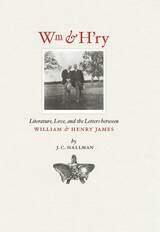 Wm & H'ry: Literature, Love, and the Letters between Wiliam and Henry James
J. C. Hallman
University of Iowa Press, 2013 Readers generally know only one of the two famous James brothers. Literary types know Henry James; psychologists, philosophers, and religion scholars know William James. In reality, the brothers’ minds were inseparable, as the more than eight hundred letters they wrote to each other reveal. In this book, J. C. Hallman mines the letters for mutual affection and influence, painting a moving portrait of a relationship between two extraordinary men. Deeply intimate, sometimes antagonistic, rife with wit, and on the cutting edge of art and science, the letters portray the brothers’ relationship and measure the manner in which their dialogue helped shape, through the influence of their literary and intellectual output, the philosophy, science, and literature of the century that followed.
William and Henry James served as each other’s muse and critic. For instance, the event of the death of Mrs. Sands illustrates what H’ry never stated: even if the “matter” of his fiction was light, the minds behind it lived and died as though it was very heavy indeed. He seemed to best understand this himself only after Wm fully fleshed out his system. “I can’t now explain save by the very fact of the spell itself . . . that [Pragmatism] cast upon me,” H’ry wrote in 1907. “All my life I have . . . unconsciously pragmatised.”
W m was never able to be quite so gracious in return. In 1868, he lashed out at the “every day” elements of two of H’ry’s early stories, and then explained: “I have uttered this long rigmarole in a dogmatic manner, as one speaks, to himself, but of course you will use it merely as a mass to react against in your own way, so that it may serve you some good purpose.” He believed he was doing H’ry a service as he criticized a growing tendency toward “over-refinement” or “curliness” of style. “I think it ought to be of use to you,” he wrote in 1872, “to have any detailed criticism fm even a wrong judge, and you don’t get much fm. any one else.” For the most part, H’ry agreed. “I hope you will continue to give me, when you can, your free impression of my performance. It is a great thing to have some one write to one of one’s things as if one were a 3d person & you are the only individual who will do this.”
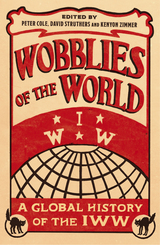 Wobblies of the World: A Global History of the IWW
Edited by Peter Cole, David Struthers, and Kenyon Zimmer
Pluto Press, 2017 “As a second-generation member of the IWW, I am delighted to see this outstanding collection of essays on the Wobblies, their achievements, and their substantial impact despite severe repression”—Noam Chomsky
Founded in 1905, Chicago's Industrial Workers of the World (IWW) is a union unlike any other. With members affectionately called "Wobblies" and an evolutionary and internationalist philosophy and tactics, it rapidly grew across the world. Considering the history of the IWW from an international perspective for the first time, Wobblies of the World brings together a group of leading scholars to present a lively collection of accounts from thirteen diverse countries, revealing a fascinating story of anarchism, syndicalism, and socialism. Chapters include:
*”A Cosmopolitan Crowd”: Transnational Anarchists, the IWW and the American Radical Press by Kenyon Zimmer
*Living Social Dynamite: Early Twentieth-Century IWW-South Asia Connections by Tariq Khan
*IWW Internationalism and Interracial Organizing in the Southwestern United States by David M. Struthers
*Spanish Anarchists and Maritime Workers in the IWW by Bieito Alonso
*The IWW and the Dilemmas of Labor Internationalism by Wayne Thorpe
*Wobblies Down Under: The IWW in Australia by Verity Burgmann
*Ki Nga Kaimahi Maori ('To All Maori Workers'): The New Zealand IWW and the Maori by Mark Derby
*Patrick Hodgens Hickey and the IWW: A Transnational Relationship by Peter Clayworth
*Edith Frenette: A Transnational Radical Life by Heather Mayer
*Tom Barker and Revolutionary Europe by Paula de Angelis
*P. J. Welinder and “American Syndicalism” in Interwar Sweden by Johan Pries
*Tramp, Tramp, Tramp: The Songs of Joe Hill Around the World by Bucky Halker
*And much, much more!
Drawing on many important figures of the movement—Har Dayal, James Larkin, William D. "Big Bill" Haywood, Enrique Flores Magón, and more—the contributors describe how the IWW and its ideals spread, exploring the crucial role the IWW played in industries such as shipping, mining, and agriculture.
Ultimately, the book illuminates Wobblie methods of organizing, forms of expression, practices, and transnational issues, offering a fascinating alternative history of the group
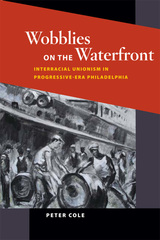 Wobblies on the Waterfront: Interracial Unionism in Progressive-Era Philadelphia
Peter Cole
University of Illinois Press, 2007 The rise and fall of America's first truly interracial labor union For almost a decade during the 1910s and 1920s, the Philadelphia waterfront was home to the most durable interracial, multiethnic union seen in the United States prior to the CIO era. For much of its time, Local 8 was majority black, always with a cadre of black leaders. The union also claimed immigrants from Eastern Europe, as well as many Irish Americans, who had a notorious reputation for racism. This important study is the first book-length examination of how Local 8, affiliated with the Industrial Workers of the World, accomplished what no other did at the time. Peter Cole outlines the factors that were instrumental in Local 8's success, both ideological (the IWW's commitment to working-class solidarity) and pragmatic (racial divisions helped solidify employer dominance). He also shows how race was central not only to the rise but also to the decline of Local 8, as increasing racial tensions were manipulated by employers and federal agents bent on the union's destruction.
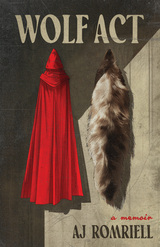 Wolf Act
AJ Romriell
University of Wisconsin Press, 2025 As a child, AJ Romriell strove to obey his Mormon leaders’ every rule. If he was faithful enough, he was taught, God would remove temptations. But at nineteen, returning home early from his mission after admitting his attraction to men, he was forced to make a decision: either stay the course or work to accept himself fully and risk losing family, community, and the Church he’d devoted his life to. His decision to pursue radical acceptance would turn out to be just one step toward reclaiming his life.
Through linked personal essays crafted in lyric, fabulist, and fragmented forms, Wolf Act charts a young man’s transformation. Weaving together wolfish fairy tales and mythology, Mormon theology and practice, piercings and tattoos, cave explorations, ghost stories, and more, Romriell explores a childhood of hiding, a familial reckoning, a religious exodus, and an effort to understand one’s life as worth saving—even when the meaning of the word “saving” must be reimagined.
The Wolf and Furton Sites: Macomb County, Michigan
Emerson F. Greenman
University of Michigan Press, 1939 In this report, Emerson F. Greenman describes the 1936 archaeological excavations at the Wolf and Furton sites, both in Macomb County, Michigan, on the shore of Lake St. Clair. Greenman and his team found refuse pits with associated animal bones; human burials; and artifacts, including pottery and stone tools.
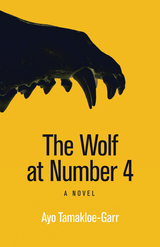 The Wolf at Number 4: A Novel
Ayo Tamakloe-Garr
Ohio University Press, 2018 Desire Mensah, a disgraced schoolteacher in her thirties, sees moving to sleepy little Cape Coast, Ghana, as her chance to get away from a shameful secret not buried deeply enough. And maybe, just maybe, she will find the love she craves and the husband her mother craves for her. But in Cape Coast, the past isn’t dead. It isn’t even past. That’s the kind of thing Wolfgang “Wolf” Ofori would say. Everyone says the eleven-year-old is a genius—eccentric though he is—and is bound to win Wonderkids, a quiz competition ordinarily for high school students. Wolf and Desire form a strange friendship, even as their mutual understanding both precipitates and reinforces the downfall of each. Before long, their struggles to exist in a world that dehumanizes and then throws the first stone whip up a perfect storm, with deadly consequences. Debut novelist Ayo Tamakloe-Garr drew inspiration from works such as A Streetcar Named Desire and Frankenstein to create The Wolf at Number 4, a story set in 1990s Ghana. The result is a chilling and funny gothic tale that will disarm readers even as it forces them to confront whether the wolves around us are born or made.
 The Wolf at the Door: The Menace of Economic Insecurity and How to Fight It
Michael J. Graetz and Ian Shapiro
Harvard University Press, 2020 “Deep, informed, and reeks of common sense.”
—Norman Ornstein
“It is now beyond debate that rising inequality is not only leaving millions of Americans living on a sharp edge but also is threatening our democracy…For activists and scholars alike who are struggling to create a more equitable society, this is an essential read.”
—David Gergen
We are in an age of crisis. That much we can agree on. But a crisis of what, exactly? And how do we get out of it?
In a follow up to their influential and much debated Death by a Thousand Cuts, Michael Graetz and Ian Shapiro focus on what really worries people: not what the rich are making or the government is taking from them but their own insecurity. Americans are worried about losing their jobs, their status, and the safety of their communities. They fear the wolf at the door. The solution is not protectionism or class warfare but better jobs, higher wages, greater protection for families suffering from unemployment, better health insurance, and higher quality childcare. And it turns out those goals are more achievable than you might think. The Wolf at the Door is one of those rare books that doesn’t just diagnose our problems, it shows how to address them.
“This is a terrific book, original, erudite, and superbly well-informed, and full of new wisdom about what might and what might not help the majority of Americans who have not shared in our growing prosperity, but are left facing the wolf at the door…Everyone interested in public policy should read this book.”
—Angus Deaton, Princeton University
“Graetz and Shapiro wrestle with a fundamental question of our day: How do we address a system that makes too many Americans anxious that economic security is slipping out of reach? Their cogent call for sensible and achievable policies…should be read by progressives and conservatives alike.”
—Jacob J. Lew, former Secretary of the Treasury
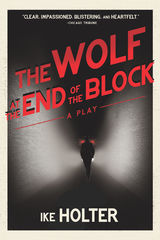 The Wolf at the End of the Block: A Play
Ike Holter
Northwestern University Press, 2020 Taut and fast-paced, The Wolf at the End of the Block tells the story of Abe, a resident of the Rightlynd neighborhood of Chicago, who seeks justice after a mysterious, late-night interatction at a boarded-up bar. The intrigue envelops Abe, his sister, his boss, and a morally complicated reporter in pursuit of the truth. But as the clock ticks down, the play discloses the hidden motives of each character, leading to a finale of unpredictable twists, turns, and reveals.
A modern-day neo-noir, The Wolf at the End of the Block remixes several different genres to present a new kind of thriller that is socially conscious, relentlessy suspenseful, and bitingly funny. Praised for its power and grace, the play is one of Holter’s most unforgettable.
The Wolf at the End of the Block is one of seven plays in Holter’s Rightlynd Saga, set in Chicago’s fictional fifty-first ward. The other plays in the cycle are Rightlynd, Exit Strategy, Sender, Prowess, Red Rex, and Lottery Day.
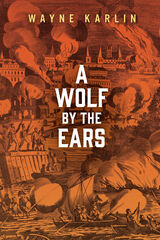 A Wolf by the Ears
Wayne Karlin
University of Massachusetts Press, 2020 We have the wolf by the ears, and we can neither hold him, nor safely let him go.
—Thomas Jefferson
During the War of 1812, thousands of enslaved people from plantations across the Tidewater rallied to the British side, turning against an American republic that had barred them from the promises of freedom and democracy. Set against the backdrop of rebellion and war, Wayne Karlin's A Wolf by the Ears follows the interconnected stories of Towerhill and Sarai, two African slaves, and their master, Jacob Hallam. Educated side-by-side and inseparable as children, the three come of age as they are forced to grapple with—and break free of—the fraught linkage of black and white Americans and how differently each defines what it means to fight for freedom. Sarai and Jacob are caught in the tension between the dream of equality, the reality of slavery, and their own hearts, while Towerhill sits at the head of a company of black marines that is part of the force that takes Washington and watches the White House burn.
 The Wolf Economy Awakens: Mongolia’s Fight for Democracy, and a Green and Digital Future
Johan Nylander
Hong Kong University Press, 2024 Discover why Mongolia may lead the future of Asia.
Mongolia, a vibrant democracy landlocked between Russia and China, stands on the edge of becoming Asia’s next boom nation—one of the richest countries per capita in the region. Referred to as the “wolf economy” for its vast natural resources (copper, gold, and rare earth metals), it is also home to a growing number of cutting-edge tech startups and international lifestyle brands. Its vast steppe landscape lends itself not only to herding and tourism but also to renewable energy production and filmmaking.
The Wolf Economy Awakens is about the individuals who are fighting to strengthen the country’s democracy and diversify its economy. It is about innovators aiming to realize Mongolia’s promise as a hub for green energy, tech and lifestyle entrepreneurs who are shaking up traditional industries, and go-getters who have left jobs on Wall Street to return to the country they love and help move it forward. Asia correspondent and award-winning author Johan Nylander travels across Mongolia to speak to the country’s leaders and innovators—not to mention a cast of digital nomads, jazz musicians, and ordinary families—and finds a nation ready to grasp a better future. Unlocking a country’s potential is never easy, but Mongolia stands every chance of becoming Asia’s next success story.
Wolf Island
L. David Mech
University of Minnesota Press, 2020
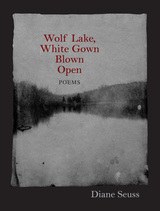 Wolf Lake, White Gown Blown Open: Poems
Diane Seuss
University of Massachusetts Press, 2010 Diane Seuss's poems grow out of the fertile soil of southwest Michigan, bursting any and all stereotypes of the Midwest and turning loose characters worthy of Faulkner in their obsession, their suffering, their dramas of love and sex and death. The first section of this collection pays homage to the poet's roots in a place where the world hands you nothing and promises less, so you are left to invent yourself or disappear. From there these poems both recount and embody repeated acts of defiant self-creation in the face of despair, loss, and shame, and always in the shadow of annihilation.
With darkly raucous humor and wrenching pathos, Seuss burrows furiously into liminal places of no dimension— state lines, lakes' edges, the space "between the m and the e in the word amen." From what she calls "this place inbetween" come profane prayers in which "the sound of hope and the sound of suffering" are revealed to be "the same music played on the same instrument."
Midway through this book, a man tells the speaker that beauty is that which has not been touched. This collection is a righteous and fierce counterargument: in the world of this imagination, beauty spills from that which has been crushed, torn, and harrowed. "We receive beauty," Seuss writes, "as a nail receives / the hammer blow." This is the poetry that comes only after the white dress has been blown open—the poetry of necessity, where a wild imagination is the only hope.
The Wolf Man's Magic Word: A Cryptonymy
Nicolas Abraham
University of Minnesota Press, 2005 The Wolf Man's Magic Word reopens the examination of the "Wolf Man," a Russian emigre who was Freud's patient and who wrote his own memoirs. Nicolas Abraham and Maria Torok's work is at once the account of the Wolf Man's psychological inventions, a reading of his dreams and symptoms, and a critique of basic Freudian notions.
 Wolfgang Amadeus Mozart: A Biography
Piero Melograni
University of Chicago Press, 2006
This year marks the 250th anniversary of the birth of Wolfgang Amadeus Mozart, one of the most enduringly popular and celebrated composers to have ever lived. His substantial oeuvre contains works that are considered to be among the most exquisite pieces of symphonic, chamber, and choral music ever written. His operas too cast a long shadow over those staged in their wake. And since his untimely death in 1791, he remains an enigmatic figure—the subject of fascination for aficionados and novices alike.
Piero Melograni here offers a wholly readable account of Mozart’s remarkable life and times. This masterful biography proceeds from the young Mozart’s earliest years as a Wunderkind—the child prodigy who traveled with his family to perform concerts throughout Europe—to his formative years in Vienna, where he fully absorbed the artistic and intellectual spirit of the Enlightenment, to his deathbed, his unfinished Requiem, and the mystery that still surrounds his burial. Melograni’s deft use of Mozart’s letters throughout confers authority and vitality to his recounting, and his expertise brings Mozart’s eighteenth-century milieu evocatively to life. Written with a gifted historian’s flair for narrative and unencumbered by specialized analyses of Mozart’s music, Melograni’s is the most vivid and enjoyable biography available.
At a time when music lovers around the world are paying honor to Mozart and his legacy, Wolfgang Amadeus Mozart will be welcomed by his enthusiasts—or anyone wishing to peer into the mind of one of the greatest composers ever known.
 Wolfhounds and Polar Bears: The American Expeditionary Force in Siberia, 1918–1920
Col. John M. House, US Army (Ret.)
University of Alabama Press, 2016 Details the military aspects of the American Expeditionary Force's (AEF) deployment to Siberia following World War I to protect the Trans-Siberian Railroad
In the final months of World War I, President Woodrow Wilson and many US allies decided to intervene in Siberia in order to protect Allied wartime and business interests, among them the Trans-Siberian Railroad, from the turmoil surrounding the Russian Revolution. American troops would remain until April 1920 with some of our allies keeping troops in Siberia even longer.
Few American citizens have any idea that the United States ever deployed soldiers to Siberia and that those soldiers eventually played a role in the Russian revolution while protecting the Trans-Siberian Railroad. Wolfhounds and Polar Bears relies on the detailed reports of the American Expeditionary Force (AEF) as well as on personal stories to bring this rarely discussed expedition to life.
Initial chapters recount the period in World War I when conditions in Russia pointed to the need for intervention as well as the varied reasons for that decision. A description of the military forces and the geographic difficulties faced by those forces operating in Siberia provide the baseline necessary to understand the AEF’s actions in Siberia. A short discussion of the Russian Railway Service Corps explains their essential and sometimes overlooked role in this story, and subsequent chapters provide a description of actual operations by the AEF.
Wolfhounds and Polar Bears: The American Expeditionary Force in Siberia, 1918–1920 may well be the most detailed study of the military aspects of the American intervention in Siberia ever undertaken, offering a multitude of details not available in any other book-length history.
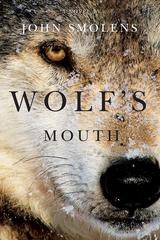 Wolf's Mouth
John Smolens
Michigan State University Press, 2016 In 1944 Italian officer Captain Francesco Verdi is captured by Allied forces in North Africa and shipped to a POW camp in Michigan’s Upper Peninsula, where the senior POW, the ruthless Kommandant Vogel, demands that all prisoners adhere to his Nazi dictates. His life threatened, Verdi escapes from the camp and meets up with an American woman, Chiara Frangiapani, who helps him elude capture as they flee to the Lower Peninsula. By 1956 they have become Frank and Claire Green, a young married couple building a new life in postwar Detroit. When INS agent James Giannopoulos tracks them down, Frank learns that Vogel is executing men like Frank for their wartime transgressions. As a series of brutal murders rivets Detroit, Frank is caught between American justice and Nazi vengeance. In Wolf ’s Mouth, the recollections of Francesco Verdi/Frank Green give voice to the hopes, fears, and hard choices of a survivor as he strives to escape the ghosts of history.
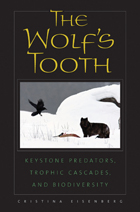 The Wolf's Tooth: Keystone Predators, Trophic Cascades, and Biodiversity
Cristina Eisenberg
Island Press, 2010 Animals such as wolves, sea otters, and sharks exert a disproportionate influence on their environment; dramatic ecological consequences can result when they are removed from—or returned to—an ecosystem.
In The Wolf's Tooth, scientist and author Cristina Eisenberg explores the concept of "trophic cascades" and the role of top predators in regulating ecosystems. Her fascinating and wide-ranging work provides clear explanations of the science surrounding keystone predators and considers how this notion can help provide practical solutions for restoring ecosystem health and functioning.
Eisenberg examines both general concepts and specific issues, sharing accounts from her own fieldwork to illustrate and bring to life the ideas she presents. She considers how resource managers can use knowledge about trophic cascades to guide recovery efforts, including how this science can be applied to move forward the bold vision of rewilding the North American continent. In the end, the author provides her own recommendations for local and landscape-scale applications of what has been learned about interactive food webs.
At their most fundamental level, trophic cascades are powerful stories about ecosystem processes—of predators and their prey, of what it takes to survive in a landscape, of the flow of nutrients. The Wolf's Tooth is the first book to focus on the vital connection between trophic cascades and restoring biodiversity and habitats, and to do so in a way that is accessible to a diverse readership.
 Wolves and Human Communities: Biology, Politics, and Ethics
Edited by Virginia A. Sharpe, Bryan Norton, and Strachan Donnelley
Island Press, 2000 Like wolf restoration activities in the West, the proposal to reintroduce wolves into the Adirondacks has generated intense public debate. The idea of returning top predators to settled landscapes raises complicated questions on issues ranging from property rights to wildlife management to obligations to present and future generations.Wolves and Human Communities brings together leading thinkers and writers from diverse fields -- including Timothy Clark, Daniel Kemmis, L. David Mech, Mary Midgley, Ernest Partridge, Steward T.A. Pickett, Joseph Sax, Rodger Schlickeisen, and others -- to address the complex ethical, biological, legal, and political concerns surrounding wolf reintroduction. Contributors specifically explore the social, cultural, and ecological values that come into play in the debate, as they examine: the views of stakeholders in the Adirondack decision historical trends in public perception of restoration the legal and policy context for species preservation, and the challenges to the current system of property law biological and political lessons learned from Yellowstone, Isle Royale, and the Great Lakes states the meaning of wildness, both in ourselves and the wolf The final chapter by Niles Eldredge takes the point of view of evolutionary time and ecological scale, challenging us to develop a new consciousness regarding our position in the natural world.Wolves and Human Communities offers a thought-provoking examination of interactions between human and wild communities, and represents an important contribution to debates over species reintroduction for policymakers, researchers, ecologists, sociologists, lawyers, ethicists, philosophers, and local residents.
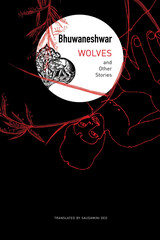 Wolves: and Other Stories
Bhuwaneshwar
Seagull Books, 2020 Written during the final stages of the Indian Independence movement, between the gloom and angst of the interwar period and at the cusp of the beginning of modern India, Bhuwaneshwar’s short stories both capture the melancholy of the time and ask what it means to be human in an indifferent and amoral world. These stories are truly an event in the history of modern Hindi literature—his work marks a complete break from the neo-romanticism and mysticism of his predecessors and contemporaries and establishes him as the definitive founder of the modern Hindi short story. His stories are populated with lonely characters from all walks of life: doctors, students, nomadic communities, acrobats, single mothers, soldiers returning from war, neglected children, and more. They are people living on the margins, introspecting their own anxieties and existence in an increasingly uncertain world set in places as far apart as hill stations, anonymous Indian villages, highways, railway compartments, and small towns in France.
This new collection includes all of Bhuwaneshwar’s twelve published short stories, none of which have been translated into English before now. Cinematic and peerless, these tales combine images, sketches, sounds, fragments, dialogues, and frame-narrative techniques of Indian folktales, ultimately creating a montage of modern Indian psyche not found in any other work of Hindi literature. Nearly a century old, Bhuwaneshwar’s stories read like they were written in modern day, dealing with questions and anxieties that continue to haunt and reappear, much like his iconic wolves, in the twenty-first century.
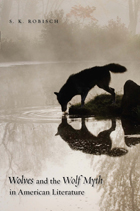 Wolves and the Wolf Myth in American Literature
S.K. Robisch
University of Nevada Press, 2009 The wolf is one of the most widely distributed canid species, historically ranging throughout most of the Northern Hemisphere. For millennia, it has also been one of the most pervasive images in human mythology, art, and psychology. Wolves and the Wolf Myth in American Literature examines the wolf’s importance as a figure in literature from the perspectives of both the animal’s physical reality and the ways in which writers imagine and portray it. Author S. K. Robisch examines more than two hundred texts written in North America about wolves or including them as central figures. From this foundation, he demonstrates the wolf’s role as an archetype in the collective unconscious, its importance in our national culture, and its ecological value. Robisch takes a multidisciplinary approach to his study, employing a broad range of sources: myths and legends from around the world; symbology; classic and popular literature; films; the work of scientists in a number of disciplines; human psychology; and field work conducted by himself and others. By combining the fundamentals of scientific study with close readings of wide-ranging literary texts, Robisch astutely analyzes the correlation between actual, living wolves and their representation on the page and in the human mind. He also considers the relationship between literary art and the natural world, and argues for a new approach to literary study, an ecocriticism that moves beyond anthropocentrism to examine the complicated relationship between humans and nature.
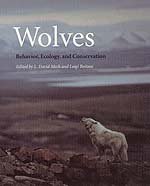 Wolves: Behavior, Ecology, and Conservation
Edited by L. David Mech and Luigi Boitani
University of Chicago Press, 2003 Wolves are some of the world's most charismatic and controversial animals, capturing the imaginations of their friends and foes alike. Highly intelligent and adaptable, they hunt and play together in close-knit packs, sometimes roaming over hundreds of square miles in search of food. Once teetering on the brink of extinction across much of the United States and Europe, wolves have made a tremendous comeback in recent years, thanks to legal protection, changing human attitudes, and efforts to reintroduce them to suitable habitats in North America. As wolf populations have rebounded, scientific studies of them have also flourished. But there hasn't been a systematic, comprehensive overview of wolf biology since 1970. In Wolves, many of the world's leading wolf experts provide state-of-the-art coverage of just about everything you could want to know about these fascinating creatures. Individual chapters cover wolf social ecology, behavior, communication, feeding habits and hunting techniques, population dynamics, physiology and pathology, molecular genetics, evolution and taxonomy, interactions with nonhuman animals such as bears and coyotes, reintroduction, interactions with humans, and conservation and recovery efforts. The book discusses both gray and red wolves in detail and includes information about wolves around the world, from the United States and Canada to Italy, Romania, Saudi Arabia, Israel, India, and Mongolia. Wolves is also extensively illustrated with black and white photos, line drawings, maps, and fifty color plates. Unrivalled in scope and comprehensiveness, Wolves will become the definitive resource on these extraordinary animals for scientists and amateurs alike. “An excellent compilation of current knowledge, with contributions from all the main players in wolf research. . . . It is designed for a wide readership, and certainly the language and style will appeal to both scientists and lucophiles alike. . . . This is an excellent summary of current knowledge and will remain the standard reference work for a long time to come.”—Stephen Harris, New Scientist
“This is the place to find almost any fact you want about wolves.”—Stephen Mills, BBC Wildlife Magazine
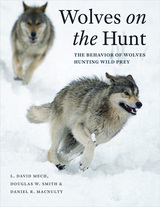 Wolves on the Hunt: The Behavior of Wolves Hunting Wild Prey
L. David Mech, Douglas W. Smith, and Daniel R. MacNulty
University of Chicago Press, 2015 The interactions between apex predators and their prey are some of the most awesome and meaningful in nature—displays of strength, endurance, and a deep coevolutionary history. And there is perhaps no apex predator more impressive and important in its hunting—or more infamous, more misjudged—than the wolf. Because of wolves’ habitat, speed, and general success at evading humans, researchers have faced great obstacles in studying their natural hunting behaviors. The first book to focus explicitly on wolf hunting of wild prey, Wolves on the Hunt seeks to fill these gaps in our knowledge and understanding.
Combining behavioral data, thousands of hours of original field observations, research in the literature, a wealth of illustrations, and—in the e-book edition and online—video segments from cinematographer Robert K. Landis, the authors create a compelling and complex picture of these hunters. The wolf is indeed an adept killer, able to take down prey much larger than itself. While adapted to hunt primarily hoofed animals, a wolf—or especially a pack of wolves—can kill individuals of just about any species. But even as wolves help drive the underlying rhythms of the ecosystems they inhabit, their evolutionary prowess comes at a cost: wolves spend one-third of their time hunting—the most time consuming of all wolf activities—and success at the hunt only comes through traveling long distances, persisting in the face of regular failure, detecting and taking advantage of deficiencies in the physical condition of individual prey, and through ceaseless trial and error, all while risking injury or death.
By describing and analyzing the behaviors wolves use to hunt and kill various wild prey—including deer, moose, caribou, elk, Dall sheep, mountain goats, bison, musk oxen, arctic hares, beavers, and others—Wolves on the Hunt provides a revelatory portrait of one of nature’s greatest hunters.
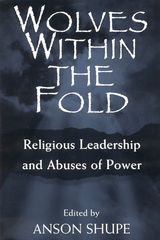 Wolves within the Fold: Religious Leadership and Abuses of Power
Shupe, Anson
Rutgers University Press, 1998 Wolves within the Fold is the first collection of new articles dealing with abuse of authority by religious leaders and the victimization of their parishioners. The power of religion as a symbolic, salvationÐpromising enterprise resides in its authority to create and shape reality for believers and command their obedience. This power can inspire tremendous acts of human kindness, charity, compassion, and hope. But witch hunts, inquisitions, crusades, and pogroms show us how religious authority can be used for far darker purposes. This abuse of power by religious authorities at the expense of their followers is termed clergy malfeasance by editor Anson Shupe and examined by the contributors to Wolves within the Fold. The essays provide an innovative examination of behavior that is sometimes illegal and always unethical, sometimes punished but often not. Topics range from a cultural study of Aum Shinrikyo, the Japanese apocalyptic group now infamous for releasing lethal gas into the Tokyo subway system, to a sociological analysis of financial scandals among evangelical religious groups. Groups analyzed include the Roman Catholic Church, Protestant denominations, televangelists, and the Hare Krishnas.
Woman and Chinese Modernity: The Politics of Reading between West and East
Rey Chow
University of Minnesota Press, 1991 Examines the relationship of “woman” to issues of non-western culture. Examines the relationship of "woman" to issues of non-Western culture: ethnic spectatorship, popular literature, the construction of literary history, and the revolutionary production and emotional reception of national literature.
 Woman and the Demon: The Life of a Victorian Myth
Nina Auerbach
Harvard University Press, 1982 Here is a bold new vision of Victorian culture: a study of myths of womanhood that shatters the usual generalizations about the squeezed, crushed, and ego-less Victorian woman.
Through copious examples drawn from literature, art, and biography, Nina Auerbach reconstructs three central paradigms: the angel/demon, the old maid, and the fallen woman. She shows how these animate a pervasive Victorian vision of a mobile female outcast with divine and demonic powers. Fear of such disruptive, self-creating figures, Auerbach argues, produces the approved ideal of the dutiful, family-bound woman. The awe they inspire associates them with characters in literature, the only vehicles of immortality in whom most Victorians could unreservedly believe.
Auerbach looks at a wonderful variety of sources: Svengali, Dracula, and Freud; poets and major and minor novelists Carlyle, John Stuart Mill, and Ruskin; lives of women, great and unknown; Anglican sisterhoods and Magdalen homes; bardolatry and the theater; Pre-Raphaelite paintings and contemporary cartoons and book illustrations. Reinterpreting a medley of fantasies, she demonstrates that female powers inspired a vivid myth central to the spirit of the age.
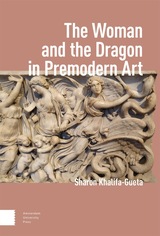 The Woman and the Dragon in Premodern Art
Sharon Khalifa-Gueta
Amsterdam University Press, 2023 The motif of the woman and the dragon has been prevalent in Western art since antiquity, yet has hitherto remained understudied, and artworks featuring this motif in Western Mediterranean cultures have been examined primarily in relation to the topos of the male dragon-slayer. This book analyzes artistic images of women and dragons over an extensive period, from Classical Greece and Rome (with forays to Egypt and Mesopotamia) to the early modern period in Western Europe. The unique methodology employed in the study of this motif reveals its sacred core, as well as its relationship to rituals of fertility and oracular knowledge, to the liminal realm between life and death, and to the symbolism of Great Mother goddesses. At the same time, the images explored throughout expose stereotypes and biases against women in unusual positions of power, which were embedded in the motif and persisted in Western European art.
The Woman and the Lyre: Women Writers in Classical Greece and Rome
Jane McIntosh Snyder
Southern Illinois University Press, 1989 Beginning with Sappho in the seventh century B.C.E and ending with Egeria in the fifth century C.E., Snyder profiles ancient Greek and Roman women writers, including lyric and elegiac poets and philosophers and other prose writers. The writers are allowed to speak for themselves, with as much translation from their extant works provided in text as possible. In addition to giving readers biographical and cultural context for the writers and their works, Snyder refutes arguments representing prejudicial attitudes about women’s writing found in the scholarly literature. Covering writers from a wide historical span, this volume provides an engaging and informative introduction to the origins of the tradition of women’s writing in the West.
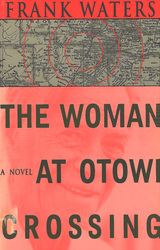 The Woman At Otowi Crossing
Frank Waters
Ohio University Press, 1987 Based on the real life of Edith Warner, who ran a tearoom at Otowi Crossing, just below Los Alamos, The Woman at Otowi Crossing is the story of Helen Chalmer, a person in tune with her adopted environment and her neighbors in the nearby Indian pueblo and also a friend of the first atomic scientists. The secret evolution of atomic research is a counterpoint to her psychic development. In keeping with its tradition of allowing the best of its list to thrive, Ohio University Press/Swallow Press is particularly proud to reissue The Woman at Otowi Crossing by best-selling author Frank Waters. This new edition features an introduction by Professor Thomas J. Lyon and a foreword by the author’s widow, Barbara Waters. The story is quintessential Waters: a parable for the potentially destructive materialism of the mid-twentieth century. The antidote is Helen Chalmer’s ability to understand a deeper truth of her being; beyond the Western notion of selfhood, beyond the sense of a personality distinct from the rest, she experiences a new and wider awareness. The basis for an opera of the same name, The Woman at Otowi Crossing is the powerful story of the crossing of cultures and lives: a fable for our times.
 Woman at Work: The Autobiography of Mary Anderson as told to Mary N. Winslow
Mary Anderson
University of Minnesota Press, 1951 Woman at Work was first published in 1951. Minnesota Archive Editions uses digital technology to make long-unavailable books once again accessible, and are published unaltered from the original University of Minnesota Press editions.This is the story of a remarkable woman whose life has been devoted to the betterment of working conditions for women. Mary Anderson was director of the Women’s Bureau of the U.S. Department of Labor for twenty-five years, from shortly after its inception until her retirement in 1944. Her autobiography encompasses almost every movement in this country, and international efforts as well, for the benefit of women workers.In her own simple diction, as told to Mary Winslow, who was associated in many of the same movements, Miss Anderson reveals an almost incredible life story. She recounts her arrival in America as a Swedish immigrant of sixteen and her early years as domestic worker, exploited factory hand, and trade union organizer. She describes her bitter struggles for unionization of the garment, shoe, and other industries in Chicago, and the activities of the Chicago and National Women’s Trade Union leagues in helping factory and mine workers gain a start toward living wages, shorter hours, and safer working conditions. She tells, finally, of a quarter-century of federal service – setting standards for women’s employment during two world wars, and serving the cause of labor effectively under five presidents. As the first U.S. government representative to the International Labor Organization, Miss Anderson championed principles of equality for women that were subsequently embodied in the United Nations Charter.Through the story there are sidelights and appraisals of such notables as Frances Perkins, Franklin D. Roosevelt, Mrs. Roosevelt, Woodrow Wilson, John L. Lewis, and many others. It is an absorbing book, and one that documents an important aspect of our country’s social development.
The Woman beneath the Skin: A Doctor’s Patients in Eighteenth-Century Germany
Barbara Duden
Harvard University Press, 1991 In this provocative study Barbara Duden asserts that the most basic biological and medical terms that we use to describe our own bodies—male and female, healthy or sick—are indeed cultural constructions. Duden delves into the records of an eighteenth-century German physician who meticulously documented the medical histories of eighteen hundred women of all ages and backgrounds, often in their own words. This unparalleled record of complaints, symptoms, diagnoses, and treatments reveals a deeply alien understanding of the female body and its functions.
The Woman Detective: GENDER AND GENRE
Viola Klein
University of Illinois Press, 1995 "Real mystery fans will enjoy this survey of nearly 300 female sleuths in 100 years of British and U.S. fiction." -- Feminist Bookstore News
This new edition adds sixty new female private eyes to the roster and includes an afterword that assesses the current state of the genre's new and old novels. A comprehensive bibliography and a character list update the field through mid-1994.
"A highly intelligent analysis." -- Ms.
"Well-researched and well-written. . . . Traces the evolution of sexist boundaries in popular detective fiction from a feminist viewpoint and documents the parallels in social history and the women's rights movement." -- Ronald C. Miller, The Armchair Detective
"Identifies dozens of good novels whose titles are not well known, its promise of good reading extending well beyond its own covers." -- Jane Bakerman, Belles Lettres
 Woman House: Essays and Assemblages
Lauren W. Westerfield
University of Massachusetts Press, 2026 A compelling and inventive memoir exploring how pain and pleasure are passed down through generations of women
For years, Lauren W. Westerfield looked back at her childhood as an imaginative playscape lovingly crafted by her artist mother. But in truth, theirs was always a fraught relationship, close yet turbulent. It wouldn’t be until her mid-twenties that Westerfield would learn that her mother was assaulted while living as a single woman in 1970s Los Angeles, or until her mid-thirties when caretaking for her now chronically ill mother during pandemic lockdown would reveal how that earlier incident and its ripple effects had shaped both their lives.
The essays and assemblages in this book plumb the depths of two women’s experiences, exploring the pain and pleasure they find in their bodies, in culture, and in their own art. Violence, beauty, and love reverberate and dissipate and shape the forms and psyches of these two profoundly connected family members. At once raw and refined, narrative and lyrical, nostalgic and blunt, the stories and images presented here explore Westerfield’s life—from childhood to adulthood—passing through innocence, self-discovery and familial tethers. In unpacking her mother’s history and the complexities of their relationship, Westerfield finds herself confronted with her own story: one grounded in a yearning for agency and individuation, of a body and mind groomed to be at odds with one another, of a feminist politics examining deeply rooted patriarchal understandings of beauty, control, and power.
Part memoir, part critical sense-making, part reckoning with family, identity, illness, addiction, art, and inheritance, Woman House draws on diverse inspirations in an attempt to recontextualize the female body—in danger, in pleasure, in portraiture, in proximity, in resistance—and challenge the structures that silence and restrict female expression.
 Woman House: Essays and Assemblages
Lauren W. Westerfield
University of Massachusetts Press, 2026 A compelling and inventive memoir exploring how pain and pleasure are passed down through generations of women
For years, Lauren W. Westerfield looked back at her childhood as an imaginative playscape lovingly crafted by her artist mother. But in truth, theirs was always a fraught relationship, close yet turbulent. It wouldn’t be until her mid-twenties that Westerfield would learn that her mother was assaulted while living as a single woman in 1970s Los Angeles, or until her mid-thirties when caretaking for her now chronically ill mother during pandemic lockdown would reveal how that earlier incident and its ripple effects had shaped both their lives.
The essays and assemblages in this book plumb the depths of two women’s experiences, exploring the pain and pleasure they find in their bodies, in culture, and in their own art. Violence, beauty, and love reverberate and dissipate and shape the forms and psyches of these two profoundly connected family members. At once raw and refined, narrative and lyrical, nostalgic and blunt, the stories and images presented here explore Westerfield’s life—from childhood to adulthood—passing through innocence, self-discovery and familial tethers. In unpacking her mother’s history and the complexities of their relationship, Westerfield finds herself confronted with her own story: one grounded in a yearning for agency and individuation, of a body and mind groomed to be at odds with one another, of a feminist politics examining deeply rooted patriarchal understandings of beauty, control, and power.
Part memoir, part critical sense-making, part reckoning with family, identity, illness, addiction, art, and inheritance, Woman House draws on diverse inspirations in an attempt to recontextualize the female body—in danger, in pleasure, in portraiture, in proximity, in resistance—and challenge the structures that silence and restrict female expression.
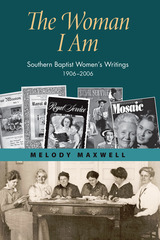 The Woman I Am: Southern Baptist Women's Writings, 1906–2006
Melody Maxwell
University of Alabama Press, 2014 Melody Maxwell’s The Woman I Am analyzes the traditional, progressive, and potential roles female Southern Baptist writers and editors portrayed for Southern Baptist women from 1906 to 2006, particularly in the area of missions.
The Southern Baptist Convention (SBC) represents the largest Protestant denomination in the United States, yet Southern Baptist women’s voices have been underreported in studies of American religion and culture. In The Woman I Am, Melody Maxwell explores how female Southern Baptist writers and editors in the twentieth century depicted changing roles for women and responded to the tensions that arose as Southern Baptist women assumed leadership positions, especially in the areas of missions and denominational support.
Given access to a century of primary sources and archival documents, Maxwell writes, as did many of her subjects, in a style that deftly combines the dispassionate eye of an observer with the multidimensional grasp of a participant. She examines magazines published by Woman’s Missionary Union (WMU), an auxiliary to the SBC: Our Mission Fields (1906–1914), Royal Service (1914–1995), Contempo (1970–1995), and Missions Mosaic (1995–2006). In them, she traces how WMU writers and editors perceived, constructed, and expanded the lives of southern women.
Showing ingenuity and resiliency, these writers and editors continually, though not always consciously, reshaped their ideal of Christian womanhood to better fit the new paths open to women in American culture and Southern Baptist life. Maxwell’s work demonstrates that Southern Baptists have transformed their views on biblically sanctioned roles for women over a relatively short historical period.
How Southern Baptist women perceive women’s roles in their churches, homes, and the wider world is of central importance to readers interested in religion, society, and gender in the United States. The Woman I Am is a tour de force that makes a lasting contribution to the world’s understanding of Southern Baptists and to their understanding of themselves.
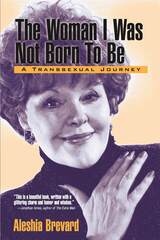 The Woman I Was Not Born To Be: A Transsexual Journey
Aleshia Brevard
Temple University Press, 2001 Told with humor and flair, this is the autobiography of one transsexual's wild ride from boyhood as Alfred Brevard ("Buddy") Crenshaw in rural Tennessee to voluptuous female entertainer in Hollywood. Aleshia Brevard, as she is now known, underwent transitional surgery in Los Angeles in 1962, one of the first such operations in the United States. (The famous sexual surgery pioneer Harry Benjamin himself broke the news to Brevard's parents.)
Under the stage name Lee Shaw, Brevard worked as a drag queen at Finocchio's, a San Francisco club, doing Marilyn Monroe impersonations. (Like Marilyn, she sought romance all the time and had a string of entanglements with men.) Later, she worked as a stripper in Reno and as a Playboy Bunny at the Sunset Strip hutch.
After playing opposite Don Knotts in the movie The Love God, Brevard appeared in other films and broke into TV as a regular on the Red Skelton Show. She created the role of Tex on the daytime soap opera One Life To Live. As a woman, Brevard returned to teach theater at East Tennessee State, the same university she had attended as a boy.
This memoir is a rare pre-Women's Movement account of coming to terms with gender identity. Brevard writes frankly about the degree to which she organized her life around pleasing men, and how absurd it all seems to her now.
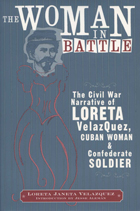 The Woman in Battle: The Civil War Narrative of Loreta Janeta Velazquez, Cuban Woman and Confederate Soldier
Loreta Janeta Velazquez
University of Wisconsin Press, 2003 A Cuban woman who moved to New Orleans in the 1850s and eloped with her American lover, Loreta Janeta Velazquez fought in the Civil War for the Confederacy as the cross-dressing Harry T. Buford. As Buford, she single-handedly organized an Arkansas regiment; participated in the historic battles of Bull Run, Balls Bluff, Fort Donelson, and Shiloh; romanced men and women; and eventually decided that spying as a woman better suited her Confederate cause than fighting as a man. In the North, she posed as a double agent and worked to traffic information, drugs, and counterfeit bills to support the Confederate cause. She was even hired by the Yankee secret service to find "the woman . . . traveling and figuring as a Confederate agent"—Velazquez herself.
Originally published in 1876 as The Woman in Battle, this Civil War narrative offers Velazquez’s seemingly impossible autobiographical account, as well as a new critical introduction and glossary by Jesse Alemán. Scholars are divided between those who read the book as a generally honest autobiography and those who read it as mostly fiction. According to Alemán’s critical introduction, the book also reads as pulp fiction, spy memoir, seduction narrative, travel literature, and historical account, while it mirrors the literary conventions of other first-person female accounts of cross-dressing published in the United States during wartime, dating back to the Revolutionary War. Whatever the facts are, this is an authentic Civil War narrative, Alemán concludes, that recounts how war disrupts normal gender roles, redefines national borders, and challenges the definition of identity.
Woman in Levi's
Eulalia Bourne
University of Arizona Press, 1967 The widely acclaimed autobiography of a lone woman rancher and country school teacher--the life she lived on the land she loved.
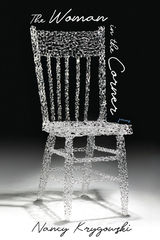 The Woman in the Corner: Poems
Nancy Krygowski
University of Pittsburgh Press, 2020 The Woman in the Corner keenly observes and gives voice to the ambiguities and astonishments that we often turn away from—in human relationships and in our own unruly hearts. In poems that speak fearlessly about sex and grief, mothers and daughters, and friendships and marriage, Krygowski examines the beauty and danger of inhabiting a woman’s body in the twenty-first century while negotiating how our pasts infiltrate, for better or worse, the here and now. This intimate collection delivers hard won loves and insights, surprising humor, and daring imagination. Krygowski celebrates our joys, gives witness to our pain, and never, never compromises.
Excerpt from “The Woman in the Corner”
I cut a leaf from my mother’s blooming violet,
long alive past her death, to start a plant
for my daughter who I never knew as a baby—
born to a different woman—
but for whom I explained birth
control, blood, how to relax, push in a tampon,
what my mother never touched, her body
a child-making mystery that pushed me
into mystery. What is a woman
who doesn’t long for kids?
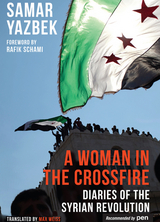 A Woman in the Crossfire: Diaries of the Syrian Revolution
Samar Yazbek
Haus Publishing, 2012 A well-known novelist and journalist from the coastal city of Jableh, Samar Yazbek witnessed the beginning four months of the uprising first-hand and actively participated in a variety of public actions and budding social movements. Throughout this period she kept a diary of personal reflections on, and observations of, this historic time. Because of the outspoken views she published in print and online, Yazbek quickly attracted the attention and fury of the regime, vicious rumours started to spread about her disloyalty to the homeland and the Alawite community to which she belongs. The lyrical narrative describes her struggle to protect herself and her young daughter, even as her activism propels her into a horrifying labyrinth of insecurity after she is forced into living on the run and detained multiple times, excluded from the Alawite community and renounced by her family, her hometown and even her childhood friends. With rare empathy and journalistic prowess Samar Yazbek compiled oral testimonies from ordinary Syrians all over the country. Filled with snapshots of exhilarating hope and horrifying atrocities, she offers us a wholly unique perspective on the Syrian uprising. Hers is a modest yet powerful testament to the strength and commitment of countless unnamed Syrians who have united to fight for their freedom. These diaries will inspire all those who read them, and challenge the world to look anew at the trials and tribulations of the Syrian uprising.
 The Woman in the Surgeon's Body
Joan Cassell
Harvard University Press, 2000 Surgery is the most martial and masculine of medical specialties. The combat with death is carried out in the operating room, where the intrepid surgeon challenges the forces of destruction and disease. What, then, if the surgeon is a woman? Anthropologist Joan Cassell enters this closely guarded arena to explore the work and lives of women practicing their craft in what is largely a man's world.
Cassell observed thirty-three surgeons in five North American cities over the course of three years. We follow these women through their grueling days: racing through corridors to make rounds, perform operations, hold office hours, and teach residents. We hear them, in their own words, discuss their training and their relations with patients, nurses, colleagues, husbands, and children.
Do these women differ from their male colleagues? And if so, do such differences affect patient care? The answers Cassell uncovers are as complex and fascinating as the issues she considers. A unique portrait of the day-to-day reality of these remarkable women, The Woman in the Surgeon's Body is an insightful account of how being female influences the way the surgeon is perceived by colleagues, nurses, patients, and superiors--and by herself.
 The Woman in the Violence: Gender, Poverty, and Resistance in Peru
M. Cristina Alcalde
Vanderbilt University Press, 2010 The Woman in the Violence draws on fieldwork conducted in Lima, Peru, one of the largest cities in Latin America, and the life stories of dozens of women to examine multiple forms of violence and how it interrelates in their lives. Gender-based violence continues to blight the landscape of South American urban centers, and this book unravels the personal experiences of those impacted. Alcalde explores the everyday lives of these women before, during, and after an abusive relationship to explore the impact of, and response to, structural, institutional, and interpersonal violence.
Focusing on the experiences of women who are predominantly poor, nonwhite, rural-to-urban migrants with little or no formal education, The Woman in the Violence addresses a range of serious concerns. What types of violence do women experience at different stages in their lives? Which identities and roles are manifested throughout their lives, and do some of these increase their vulnerability to different forms of violence? What strategies do women employ to gain some power and control in these situations, and how can we conceptualize these strategies?
In examining these questions, The Woman in the Violence contributes to our understanding of violence, gender, race, resistance, and urbanism as it exposes and analyzes systemic violence against women. The everyday forms of resistance these women employ provide significant insight for students, scholars, and health professionals.
Woman in the Wilderness: Letters of Harriet Wood Wheeler, Missonary Wife, 1832-1892
Nancy Bunge
Michigan State University Press, 2010 Woman in the Wilderness is a collection of letters written between 1832 and 1892 to and by an American woman, Harriet Wood Wheeler.
Harriet's letters reveal her experiences with actors and institutions that played pivotal roles in the history of American women: the nascent literate female work force at the mills in Lowell, Massachusetts; the Ipswich Female Seminary, which was one of the first schools for women teachers; women's associations, especially in churches; and the close and enduring ties that characterized women's relationships in the late nineteenth century.
Harriet's letters also provide an intimate view of the relationships between American Indians and Euro-Americans in the Great Lakes region, where she settled with her Christian missionary husband.
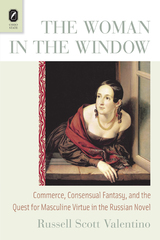 The Woman in the Window: Commerce, Consensual Fantasy, and the Quest for Masculine Virtue in the Russian Novel
Russell Scott Valentino
Ohio State University Press, 2014 In The Woman in the Window: Commerce, Consensual Fantasy, and the Quest for Masculine Virtue in the Russian Novel, Russell Scott Valentino offers pioneering new insights into the historical construction of virtue and its relation to the rapidly shifting economic context in modern Russia. This study illustrates how the traditional virtue ethic, grounded in property-based conceptions of masculine heroism, was eventually displaced by a new commercial ethic that rested upon consensual fantasy. The new economic world destabilized traditional Russian notions of virtue and posed a central question that Russian authors have struggled to answer since the early nineteenth century: How could a self-interested commercial man be incorporated into the Russian context as a socially valuable masculine character?
With chapters on Gogol, Tolstoy, and Dostoevsky as well as Pasternak and Nabokov, The Woman in the Window argues that Russian authors worked through this question via their depictions of “mixed-up men.” Such characters, according to Valentino, reveal that in a world where social reality and personal identity depend on consensual fantasies, the old masculine figure loses its grounding and can easily drift away. Valentino charts a range of masculine character types thrown off stride by the new commercially inflected world: those who embrace blind confidence, those who are split with doubt or guilt, and those who look for an ideal of steadfastness and purity to keep afloat—a woman in a window.
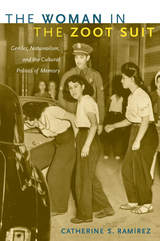 The Woman in the Zoot Suit: Gender, Nationalism, and the Cultural Politics of Memory
Catherine S. Ramírez
Duke University Press, 2009 The Mexican American woman zoot suiter, or pachuca, often wore a V-neck sweater or a long, broad-shouldered coat, a knee-length pleated skirt, fishnet stockings or bobby socks, platform heels or saddle shoes, dark lipstick, and a bouffant. Or she donned the same style of zoot suit that her male counterparts wore. With their striking attire, pachucos and pachucas represented a new generation of Mexican American youth, which arrived on the public scene in the 1940s. Yet while pachucos have often been the subject of literature, visual art, and scholarship, The Woman in the Zoot Suit is the first book focused on pachucas. Two events in wartime Los Angeles thrust young Mexican American zoot suiters into the media spotlight. In the Sleepy Lagoon incident, a man was murdered during a mass brawl in August 1942. Twenty-two young men, all but one of Mexican descent, were tried and convicted of the crime. In the Zoot Suit Riots of June 1943, white servicemen attacked young zoot suiters, particularly Mexican Americans, throughout Los Angeles. The Chicano movement of the 1960s–1980s cast these events as key moments in the political awakening of Mexican Americans and pachucos as exemplars of Chicano identity, resistance, and style. While pachucas and other Mexican American women figured in the two incidents, they were barely acknowledged in later Chicano movement narratives. Catherine S. Ramírez draws on interviews she conducted with Mexican American women who came of age in Los Angeles in the late 1930s, 1940s, and 1950s as she recovers the neglected stories of pachucas. Investigating their relative absence in scholarly and artistic works, she argues that both wartime U.S. culture and the Chicano movement rejected pachucas because they threatened traditional gender roles. Ramírez reveals how pachucas challenged dominant notions of Mexican American and Chicano identity, how feminists have reinterpreted la pachuca, and how attention to an overlooked figure can disclose much about history making, nationalism, and resistant identities.
 The Woman of Andros. The Self-Tormentor. The Eunuch
Terence
Harvard University Press, 2001 The Roman comic playwright “whose every word delights.”
Terence brought to the Roman stage a bright comic voice and a refined sense of style. His six comedies—first produced in the half dozen years before his premature death in 159 BC—imaginatively reformulated in Latin plays that were originally written by Greek playwrights, especially Menander. For this new Loeb Classical Library edition of Terence, John Barsby gives us a faithful and lively translation with full explanatory notes, facing a freshly edited Latin text.
Volume I contains a substantial introduction and three plays: The Woman of Andros, a romantic comedy; The Self-Tormentor, which looks at contrasting father-son relationships; and The Eunuch, whose characters include the most sympathetically drawn courtesan in Roman comedy. The other three plays are in Volume II: Phormio, a comedy of intrigue with an engaging trickster; The Mother-in-Law, unique among Terence’s plays in that the female characters are the admirable ones; and The Brothers, which explores contrasting approaches to parental education of sons.
The Romans highly praised Terence—“whose speech can charm, whose every word delights,” in Cicero’s words. This new edition of his plays, which replaces the now outdated Loeb translation by John Sargeaunt (first published in 1912), succeeds in capturing his polished style and appeal.
Woman Of The River: Bilingual edition
Claribel Alegria
University of Pittsburgh Press, 1988 In Woman of the River one of the major voices in Latin American poetry confronts the political realities of contemporary Central America. Many of the poems are political, direct, and condemnatory of the United States’ presence in Latin America, and they are rich, human documents rooted in Alegria’s knowledge of and love for her subjects.
As Carolyn Forche has written of Alegria’s previous selection of poems, Flowers from the Volcano: “These poems are testimonies to the value of a single human memory, political in the sense that there is no life apart from our common destiny. They are poems of passionate witness and confrontation. Responding to those who would state that politics has no place in poetry, she would add her voice to that of Neruda’s: we do not wish to please them . . . .” She carries within her the ancient blood of the Pipiles and laces her language with mesitizo richness.”
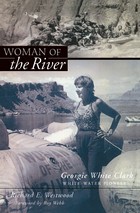 Woman Of The River: Georgie White Clark, Whitewater Pioneer
Richard Westwood
Utah State University Press, 1997 Georgie White Clark-adventurer, raconteur, eccentric--first came to know the canyons of the Colorado River by swimming portions of them with a single companion. She subsequently hiked and rafted portions of the canyons, increasingly sharing her love of the Colorado River with friends and acquaintances. At first establishing a part-time guide service as a way to support her own river trips, she went on to become perhaps the canyons' best-known river guide, introducing their rapids to many others-on the river, via her large-capacity rubber rafts, and across the nation, via magazine articles and movies. Georgie Clark saw the river and her sport change with the building of Glen Canyon Dam, enormous increases in the popularity of river running, and increased National Park Service regulation of rafting and river guides. Adjusting, though not always easily, to the changes, she helped transform an elite adventure sport into a major tourist activity.
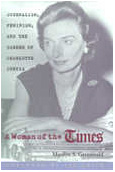 A Woman of the Times: Journalism, Feminism, and the Career of Charlotte Curtis
Marilyn S. Greenwald
Ohio University Press, 1999 For twenty-five years, Charlotte Curtis was a society/women's reporter and editor and an op-ed editor at the New York Times. As the first woman section editor at the Times, Curtis was a pioneering journalist and one of the first nationwide to change the nature and content of the women's pages from fluffy wedding announcements and recipes to the more newsy, issue-oriented stories that characterize them today. In this riveting biography, Marilyn Greenwald describes how a woman reporter from Columbus, Ohio, broke into the ranks of the male-dominated upper echelon at the New York Times. It documents what she did to succeed and what she had to sacrifice.
Charlotte Curtis paved the way for the journalists who followed her. A Woman of the Times offers a chronicle of her hard-won journey as she invents her own brand of feminism during the 1960s and 1970s. In the telling of this remarkable woman’s life is the story, as well, of a critical era in the nation’s social history.
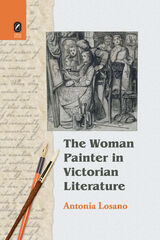 The Woman Painter in Victorian Literature
Antonia Losano
Ohio State University Press, 2008 The nineteenth century saw a marked rise both in the sheer numbers of women active in visual art professions and in the discursive concern for the woman artist in fiction, the periodical press, art history, and politics. The Woman Painter in Victorian Literature argues that Victorian women writers used the controversial figure of the woman painter to intervene in the discourse of aesthetics. These writers were able to assert their own status as artistic producers through the representation of female visual artists.
Women painters posed a threat to the traditional heterosexual erotic art scenarios—a male artist and a male viewer admiring a woman or feminized art object. Antonia Losano traces an actual movement in history in which women writers struggled to rewrite the relations of gender and art to make a space for female artistic production. She examines as well the disruption female artists caused in the socioeconomic sphere. Losano offers close readings of a wide array of Victorian writers, particularly those works classified as noncanonical—by Anne Thackeray Ritchie, Margaret Oliphant, Anne Brontë, and Mrs. Humphrey Ward—and a new look at better-known novels such as Jane Eyre and Daniel Deronda, focusing on the pivotal social and aesthetic meanings of female artistic production in these texts. Each of the novels considered here is viewed as a contained, coherent, and complex aesthetic treatise that coalesces around the figure of the female painter.
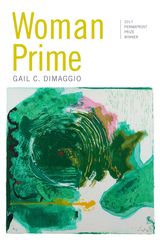 Woman Prime: Poems
Gail C. DiMaggio
University of Alaska Press, 2018 A woman is a series of shifting possibilities. The frame that contained her in the morning can transform into something completely different by afternoon. The roles she’s called on to play mutate over the years and throughout a lifetime. And her very place in the world is called into constant negotiation. In this swirl of contradictions, finding her own self—her core—can be a bewildering journey. Woman Prime is about the fundamental human wish to settle into an authentic self, a “prime” identity. It follows one woman through her roles—child, adult, wife, mother—and shows how she must remake herself through each new stage.
Like many women, the speaker believed that leaving her parent’s home, falling in love, and raising children would reveal the essential core of herself. Instead, she learns that those she loves can fail her and that she must embrace a world full of flickering and conflicting expectations for women. Woman Prime is about every woman and no woman—a mutable voice that will still resonate with anyone trying to reconcile their flawed and complicated selves.
A Woman Speaks: The Lectures, Seminars, and Interviews of Anaïs Nin
Evelyn J. Hinz
Ohio University Press, 1975 In this book Anaïs Nin speaks with warmth and urgency on those themes which have always been closest to her: relationships, creativity, the struggle for wholeness, the unveiling of woman, the artist as magician, women reconstructing the world, moving from the dream outward, and experiencing our lives to the fullest possible extent.
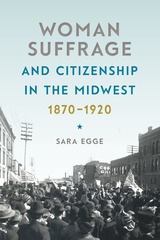 Woman Suffrage and Citizenship in the Midwest, 1870-1920
Sara Egge
University of Iowa Press, 2018 Winner of the 2019 Gita Chaudhuri Prize
Winner of the 2019 Benjamin F. Shambaugh Award
Historian Sara Egge offers critical insights into the woman suffrage movement by exploring how it emerged in small Midwestern communities—in Clay County, Iowa; Lyon County, Minnesota; and Yankton County, South Dakota. Examining this grassroots activism offers a new approach that uncovers the sophisticated ways Midwestern suffragists understood citizenship as obligation. These suffragists, mostly Yankees who migrated from the Northeast after the Civil War, participated enthusiastically in settling the region and developing communal institutions such as libraries, schools, churches, and parks. Meanwhile, as Egge’s detailed local study also shows, the efforts of the National American Women’s Suffrage Association did not always succeed in promoting the movement’s goals. Instead, it gained support among Midwesterners only when local rural women claimed the right to vote on the basis of their well-established civic roles and public service. By investigating civic responsibility, Egge reorients scholarship on woman suffrage and brings attention to the Midwest, a region overlooked by most historians of the movement. In doing so, she sheds new light onto the ways suffragists rejuvenated the cause in the twentieth century.
 Woman Suffrage and the Origins of Liberal Feminism in the United States, 1820-1920
Suzanne M. Marilley
Harvard University Press, 1996 In demanding equal rights and the vote for women, woman suffragists introduced liberal feminist dissent into an emerging national movement against absolute power in the forms of patriarchy, church administrations, slavery, and false dogmas.
In their struggle, these women developed three types of liberal arguments, each predominant during a different phase of the movement. The feminism of equal rights, which called for freedom through equality, emerged during the Jacksonian era to counter those opposed to women's public participation in antislavery reform. The feminism of fear, the defense of women's right to live free from fear of violent injury or death perpetrated particularly by drunken men, flourished after the Civil War. And in the early 1900s, the feminism of personal development called for women's freedom through opportunities to become full persons.
The practical need to blend concepts in order to justify and achieve goals created many contradictions in the suffragists' ideologies. By putting suffrage first, these women introduced radical goals, but as a politically powerless group, they could not win the vote without appeals and bargains that men considered acceptable. Ironically, American woman suffragists used illiberal ideals and arguments to sustain the quest for the most fundamental liberal feminist citizenship goal: the vote.
In this book, Suzanne Marilley reframes the debate on this important topic in a fresh, provocative, and persuasive style.
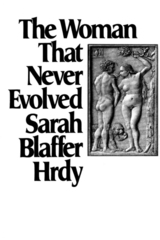 The Woman That Never Evolved: First Edition
Sarah Blaffer Hrdy
Harvard University Press, 1981 What does it mean to be female? Sarah Blaffer Hrdy--a sociobiologist and a feminist--believes that evolutionary biology can provide some surprising answers. Surprising to those feminists who mistakenly think that biology can only work against women. And surprising to those biologists who incorrectly believe that natural selection operates only on males.
In The Woman That Never Evolved we are introduced to our nearest female relatives competitive, independent, sexually assertive primates who have every bit as much at stake in the evolutionary game as their male counterparts do. These females compete among themselves for rank and resources, but will bond together for mutual defense. They risk their lives to protect their young, yet consort with the very male who murdered their offspring when successful reproduction depends upon it. They tolerate other breeding females if food is plentiful, but chase them away when monogamy is the optimal strategy. When "promiscuity" is an advantage, female primates--like their human cousins--exhibit a sexual appetite that ensures a range of breeding partners. From case after case we are led to the conclusion that the sexually passive, noncompetitive, all-nurturing woman of prevailing myth never could have evolved within the primate order.
Yet males are almost universally dominant over females in primate species, and Homo sapiens is no exception. As we see from this book, women are in some ways the most oppressed of all female primates. Sarah Blaffer Hrdy is convinced that to redress sexual inequality in human societies, we must first understand its evolutionary origins. We cannot travel back in time to meet our own remote ancestors, but we can study those surrogates we have--the other living primates. If women --and not biology--are to control their own destiny, they must understand the past and, as this book shows us, the biological legacy they have inherited.
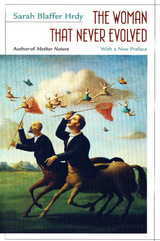 The Woman That Never Evolved: With a New Preface and Bibliographical Updates, Revised Edition
Sarah Blaffer Hrdy
Harvard University Press, 1999 “In its treatment of primate behavior, Hrdy's book has no peers…[It is] a fascinating account of the selective pressures that have shaped the behavior of males and females.” —Dorothy Cheney, Science
What does it mean to be female? Sarah Blaffer Hrdy—a sociobiologist and a feminist—believes that evolutionary biology can provide some surprising answers. Surprising to those feminists who mistakenly think that biology can only work against women. And surprising to those biologists who incorrectly believe that natural selection operates only on males.
In The Woman That Never Evolved we are introduced to our nearest female relatives competitive, independent, sexually assertive primates who have every bit as much at stake in the evolutionary game as their male counterparts do. These females compete among themselves for rank and resources, but will bond together for mutual defense. They risk their lives to protect their young, yet consort with the very male who murdered their offspring when successful reproduction depends upon it. They tolerate other breeding females if food is plentiful, but chase them away when monogamy is the optimal strategy. When "promiscuity" is an advantage, female primates—like their human cousins—exhibit a sexual appetite that ensures a range of breeding partners. From case after case we are led to the conclusion that the sexually passive, noncompetitive, all-nurturing woman of prevailing myth never could have evolved within the primate order.
Yet males are almost universally dominant over females in primate species, and Homo sapiens is no exception. As we see from this book, women are in some ways the most oppressed of all female primates. Sarah Blaffer Hrdy is convinced that to redress sexual inequality in human societies, we must first understand its evolutionary origins. We cannot travel back in time to meet our own remote ancestors, but we can study those surrogates we have—the other living primates. If women—and not biology—are to control their own destiny, they must understand the past and, as this book shows us, the biological legacy they have inherited.
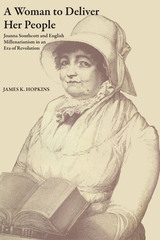 A Woman to Deliver Her People: Joanna Southcott and English Millenarianism in an Era of Revolution
By James K. Hopkins
University of Texas Press, 1982 The Second Coming of Christ has been prophesied many times through the centuries but seldom by a figure so fascinating as Joanna Southcott (1750–1814), the domestic servant who at the age of forty-two declared that God had chosen her to announce His return. A Woman to Deliver Her People is the most comprehensive study of this remarkable woman and her movement yet written. Dramatic social and political changes of the late eighteenth century—among them the revolutions in America and France—had a profound effect on the attitudes of English men and women at all levels of society. With events so far outside the range of ordinary experience, both the educated and the uneducated turned to the prophetic books of the Bible, seeking solace and explanation. A number of prophets and prophetesses appeared, claiming to have a special understanding of the biblical texts and offering startling new revelations which had been disclosed to them by God. The greatest and most influential of these was Joanna Southcott, who attracted tens of thousands of followers from the West Country, London, the Midlands, and the industrial North. Her "spiritual communications" filled some sixty-five books and pamphlets from 1801 until her death. Most contemporary observers dismissed Southcott as a fanatic, and she was frequently the subject of caricature and ridicule. James Hopkins attempts to remedy this distortion by examining Southcott's life and the millenarian movement she led within the context of the social, political, and economic crises of the period. By tracing the psychological and popular roots of Southcott's piety, and casting her appeal against the backdrop of a revolutionary age, Hopkins not only vividly portrays the life of this fascinating woman but also offers a new perspective on the mentality of ordinary English men and women during the years of their transformation into a working class.
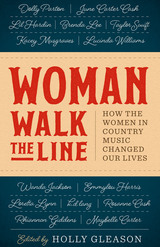 Woman Walk the Line: How the Women in Country Music Changed Our Lives
By Holly Gleason
University of Texas Press, 2017 Full-tilt, hardcore, down-home, and groundbreaking, the women of country music speak volumes with every song. From Maybelle Carter to Dolly Parton, k.d. lang to Taylor Swift—these artists provided pivot points, truths, and doses of courage for women writers at every stage of their lives. Whether it’s Rosanne Cash eulogizing June Carter Cash or a seventeen-year-old Taylor Swift considering the golden glimmer of another precocious superstar, Brenda Lee, it’s the humanity beneath the music that resonates. Here are deeply personal essays from award-winning writers on femme fatales, feminists, groundbreakers, and truth tellers. Acclaimed historian Holly George Warren captures the spark of the rockabilly sensation Wanda Jackson; Entertainment Weekly’s Madison Vain considers Loretta Lynn’s girl-power anthem “The Pill”; and rocker Grace Potter embraces Linda Ronstadt’s unabashed visual and musical influence. Patty Griffin acts like a balm on a post-9/11 survivor on the run; Emmylou Harris offers a gateway through paralyzing grief; and Lucinda Williams proves that greatness is where you find it. Part history, part confessional, and part celebration of country, Americana, and bluegrass and the women who make them, Woman Walk the Line is a very personal collection of essays from some of America’s most intriguing women writers. It speaks to the ways in which artists mark our lives at different ages and in various states of grace and imperfection—and ultimately how music transforms not just the person making it, but also the listener.
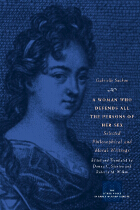 A Woman Who Defends All the Persons of Her Sex: Selected Philosophical and Moral Writings
Gabrielle Suchon
University of Chicago Press, 2010 During the oppressive reign of Louis XIV, Gabrielle Suchon (1632–1703) was the most forceful female voice in France, advocating women’s freedom and self-determination, access to knowledge, and assertion of authority. This volume collects Suchon’s writing from two works—Treatise on Ethics and Politics (1693) and On the Celibate Life Freely Chosen; or, Life without Commitments (1700)—and demonstrates her to be an original philosophical and moral thinker and writer. Suchon argues that both women and men have inherently similar intellectual, corporeal, and spiritual capacities, which entitle them equally to essentially human prerogatives, and she displays her breadth of knowledge as she harnesses evidence from biblical, classical, patristic, and contemporary secular sources to bolster her claim. Forgotten over the centuries, these writings have been gaining increasing attention from feminist historians, students of philosophy, and scholars of seventeenth-century French literature and culture. This translation, from Domna C. Stanton and Rebecca M. Wilkin, marks the first time these works will appear in English.
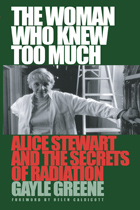 The Woman Who Knew Too Much: Alice Stewart and the Secrets of Radiation
Gayle Greene
University of Michigan Press, 2001
This biography illuminates the life and achievements of the remarkable woman scientist who revolutionized the concept of radiation risk.
In the 1950s Alice Stewart began research that led to her discovery that fetal X rays double a child's risk of developing cancer. Two decades later---when she was in her seventies---she again astounded the scientific world with a study showing that the U.S. nuclear weapons industry is about twenty times more dangerous than safety regulations permit. This finding put her at the center of the international controversy over radiation risk. In 1990, the New York Times called Stewart "perhaps the Energy Department's most influential and feared scientific critic."
The Woman Who Knew Too Much traces Stewart's life and career from her early childhood in Sheffield to her medical education at Cambridge to her research positions at Oxford University and the University of Birmingham.
Gayle Greene is Professor of Women's Studies and Literature, Scripps College.
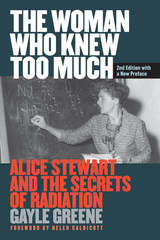 The Woman Who Knew Too Much, Revised Ed.: Alice Stewart and the Secrets of Radiation
Gayle Greene
University of Michigan Press, 2017 The Woman Who Knew Too Much illuminates the life and achievements of the remarkable woman scientist who revolutionized the concept of radiation risk. For more than 40 years, Alice Stewart (1906–2002) warned that low-dose radiation was more dangerous than anyone acknowledged. In the 1950s she discovered that fetal x-rays double a child’s risk of developing cancer. Two decades later, in her 70s, she again astounded the scientific world by showing that the U.S. nuclear weapons industry was about 20 times more dangerous than safety regulations admitted. This finding put her at the center of an international controversy over radiation risk. In 1990, the New York Times called Stewart “perhaps the Energy Department's most influential and feared scientific critic.”
Author Gayle Greene traces Stewart's life and career as she came up against ever more powerful authorities, first the British medical profession, then the U.S. nuclear industry, and finally the regulatory agencies that set radiation safety standards throughout the world. Stewart endured the fate of other women scientists in having her findings dismissed and funding cut, but today is recognized as a pioneering figure in epidemiological research on the dangers of nuclear radiation. In her preface to the second edition, Greene looks at new information that’s come out about the forces and individuals responsible for marginalizing her as a scientist and downplaying the disturbing implications of her research.
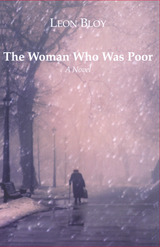 The Woman Who Was Poor: A Novel
Leon Bloy
St. Augustine's Press, 2014 Written in the 1890s, Leon Bloy's masterful novel has had an immeasurable effect on all European Catholic writing since. (Bloy was responsible for the conversion of Jacques and Räissa Maritain in 1905, and they referred to him as their godfather.) It is an extraordinary book, powerful in the manner of dos Passos, and yet spiritual in the manner of the Bible.
It is the story of a woman who is abysmally poor, brutally treated and exploited by her parents, living in the gutters of Paris, yet she retains the spiritual outlook and purity of a saint. We are spared no brutality, yet there are scenes of the most tender beauty.
The woman, Clotilde, becomes an artist's model, meeting all the great French writers, among them the gloomy and magnificent Marchenoir, who is Bloy himself. They are all impressed by the depth of her thoughts and feelings; she finally marries one of them. They are pitifully poor, and the pages that cover the birth and death of their child shock with horror while moving the reader in their tragic beauty and tenderness––for this is Bloy, always hovering between death and ecstasy. Left a widow, Clotilda finds her true vocation, a vocation of poverty. She is the woman who is poor, no other words describe her more accurately. The novel ends with those famous words of extraordinary optimism: "There is only one misery…not to be saints."
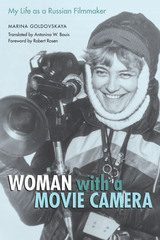 Woman with a Movie Camera: My Life as a Russian Filmmaker
By Marina Goldovskaya
University of Texas Press, 2006 Marina Goldovskaya is one of Russia's best-known documentary filmmakers. The first woman in Russia (and possibly the world) to combine being a director, writer, cinematographer, and producer, Goldovskaya has made over thirty documentary films and more than one hundred programs for Russian, European, Japanese, and American television. Her work, which includes the award-winning films The House on Arbat Street, The Shattered Mirror, and Solovky Power, has garnered international acclaim and won virtually every prize given for documentary filmmaking. In Woman with a Movie Camera, Goldovskaya turns her lens on her own life and work, telling an adventurous, occasionally harrowing story of growing up in the Stalinist era and subsequently documenting Russian society from the 1960s, through the Thaw and Perestroika, to post-Soviet Russia. She recalls her childhood in a Moscow apartment building that housed famous filmmakers, being one of only three women students at the State Film School, and working as an assistant cameraperson on the first film of Andrei Tarkovsky, Russia's most celebrated director. Reviewing her professional filmmaking career, which began in the 1960s, Goldovskaya reveals her passion for creating films that presented a truthful picture of Soviet life, as well as the challenges of working within (and sometimes subverting) the bureaucracies that controlled Russian film and television production and distribution. Along the way, she describes a host of notable figures in Russian film, theater, art, and politics, as well as the technological evolution of filmmaking from film to video to digital media. A compelling portrait of a woman who broke gender and political barriers, as well as the eventful four decades of Russian history she has documented, Woman with a Movie Camera will be fascinating reading for a wide audience.
Woman Without Umbrella
Victoria Redel
Four Way Books, 2012 With a voice that is rooted in the lush, immediate present, Victoria Redel explores the necessity to live and love deeply in her third collection of poems, Woman Without Umbrella. With her fearless and insistent engagement with language, Redel leads us, unprotected and exposed to the elements, through landscapes urban and domestic, contemplative and erotic, as she navigates the self and the world, from love to disaster to “a calm easy everyday” and back to love again.
 Womanism Rising
Edited by Layli Maparyan
University of Illinois Press, 2025 Womanism Rising concludes Layli Maparyan’s three-book exploration of womanist studies. The collection showcases new work by emerging womanist authors who expand the womanist idea while extending womanism to new sites, new problems, and new audiences. Maparyan organizes the contributions around five key ideas. The first section looks at womanist self-care as a life-saving strategy. The second examines healing the Earth as a prerequisite to healing ourselves. In Part Three, the essays illuminate how womanism’s politics of invitation provides a strategy for enlarging humanity’s circle of inclusion, while Part Four considers womanism as both a challenge and antidote to dehumanization. The final section delves into womanism’s potential for constructing worlds and futures. In addition, Maparyan includes a section of works by womanist visual artists. Defiant and far-sighted, Womanism Rising takes readers on a journey into a new generation of concepts, ideas, and strategies for womanist studies.
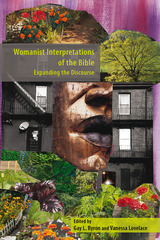 Womanist Interpretations of the Bible: Expanding the Discourse
Gay L. Byron
SBL Press, 2016 Expand the discourse and open the spheres of engagement to include new voices of scholars and bold, innovative interpretive approaches
This edited volume brings together cross-generational and cross-cultural readings of the Bible and other sacred sources by including scholars from the Caribbean, India, and Africa who have not traditionally fit into the narrow U.S., African American paradigm for understanding womanist biblical interpretation. The volume engages the reader in a wide range of interdisciplinary methods and perspectives, such as gender and feminist criticism, social-scientific methods, post-colonial and psychoanalytical theory that emphasize the inherently intersectional dynamics of race, ethnicity, and class at work in womanist thought and analysis.
Features
- Topics include the Black Lives Matter movement, domestic violence, and AIDS, while at the same time uncovering the roles of children, women, and other marginalized persons in biblical narratives
- Coverage of Hebrew Bible and New Testament texts, as well as Ifa spiritual narratives, Hindu scripture, and Ethiopic texts
- Responses from four respected womanist and feminist critics: Katherine Doob Sakenfeld, Emilie Townes, Layli (Phillips) Maparyan, and Sarojini Nadar
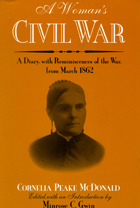 A Woman's Civil War: A Diary with Reminiscences of the War, from March 1862
Cornelia Peake McDonald; Edited, with an Introduction by Minrose C. Gwin
University of Wisconsin Press, 1992 On the night of March 11, 1862, as the heavy tramp of Confederate marching troops died away in the distance—her husband’s regiment among them—Cornelia Peake McDonald began her diary of events in war-torn Winchester, Virginia.
McDonald’s story of the Civil War records a personal and distinctly female battle of her own—a southern woman’s lonely struggle in the midst of chaos to provide safety and shelter for herself and her children. For McDonald, history is what happens “inside the house.” She relates the trauma that occurs when the safety of the home is disrupted and destroyed by the forces of war—when women and children are put out of their houses and have nowhere to go.
Whether she is describing a Union soldier’s theft of her Christmas cakes, the discovery of a human foot in her garden, or the death of her baby daughter, McDonald’s story of the Civil War at home is compelling and disturbing. Her tremendous determination and unyielding spirit in the face of the final collapse of her world is testimony to a woman’s will to preserve her family and her own sense of purpose as a “rebel” against all that she regarded as tyrannical and brutal in war itself.
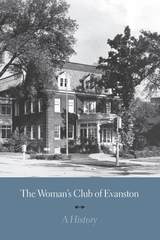 The Woman's Club of Evanston: A History
Erin Hvizdak with an epilogue by Kathy Rocklin
Northwestern University Press, 2019 The Woman’s Club of Evanston: A History documents a unique institution. Founded in 1889 by Elizabeth Harbert, the Woman’s Club of Evanston set out to address community needs, in particular those of the most vulnerable, supporting organizations that deal with housing, education, and health issues of women and children. Today its clubhouse, built in 1913 to provide a center for the Club’s activities, is on the National Register of Historic Places.
An exemplar of the women’s club movement, over the course of its long history the Woman’s Club has redirected its efforts in service and philanthropy and adjusted its organization in response to the changing needs of its community. The Charitable Foundation of the Woman’s Club of Evanston was established to support programs that provide a continuity of care and education and address gaps in funding for families in need. In 2010, the Harbert Society was created to recognize individuals who support the Woman’s Club of Evanston and to encourage and document planned gifts.
|
|
